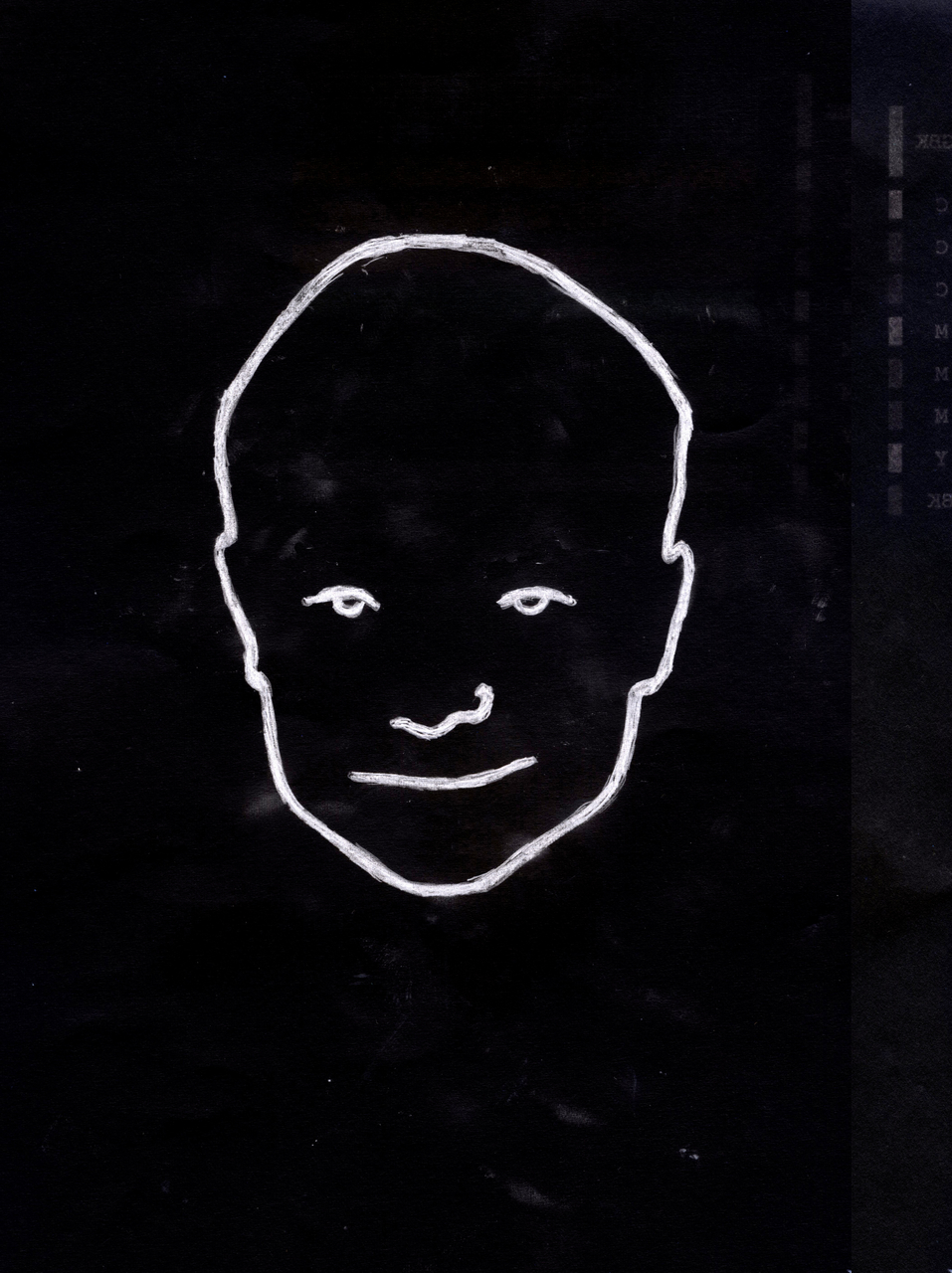Kamen Stoyanov
Installation
-
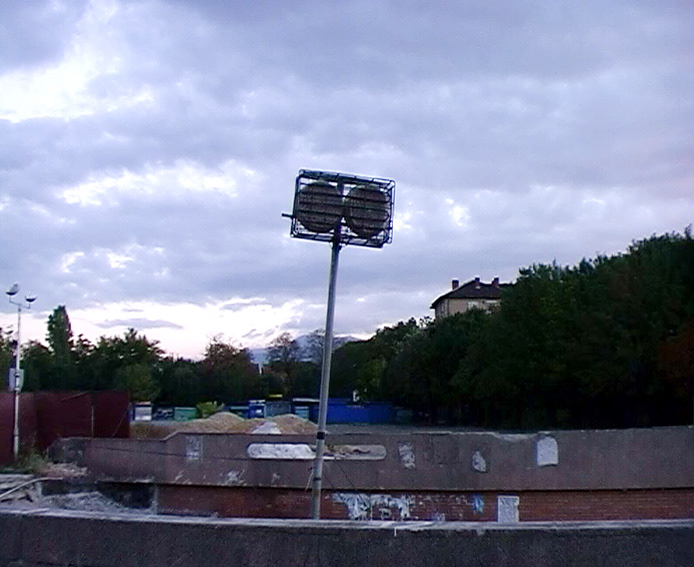 Bingo Topology
two videos, notes on display, city map An installation about "Bingo" close to the main railway station in Sofia, Bulgaria. Video
Bingo Topology
two videos, notes on display, city map An installation about "Bingo" close to the main railway station in Sofia, Bulgaria. Video
-
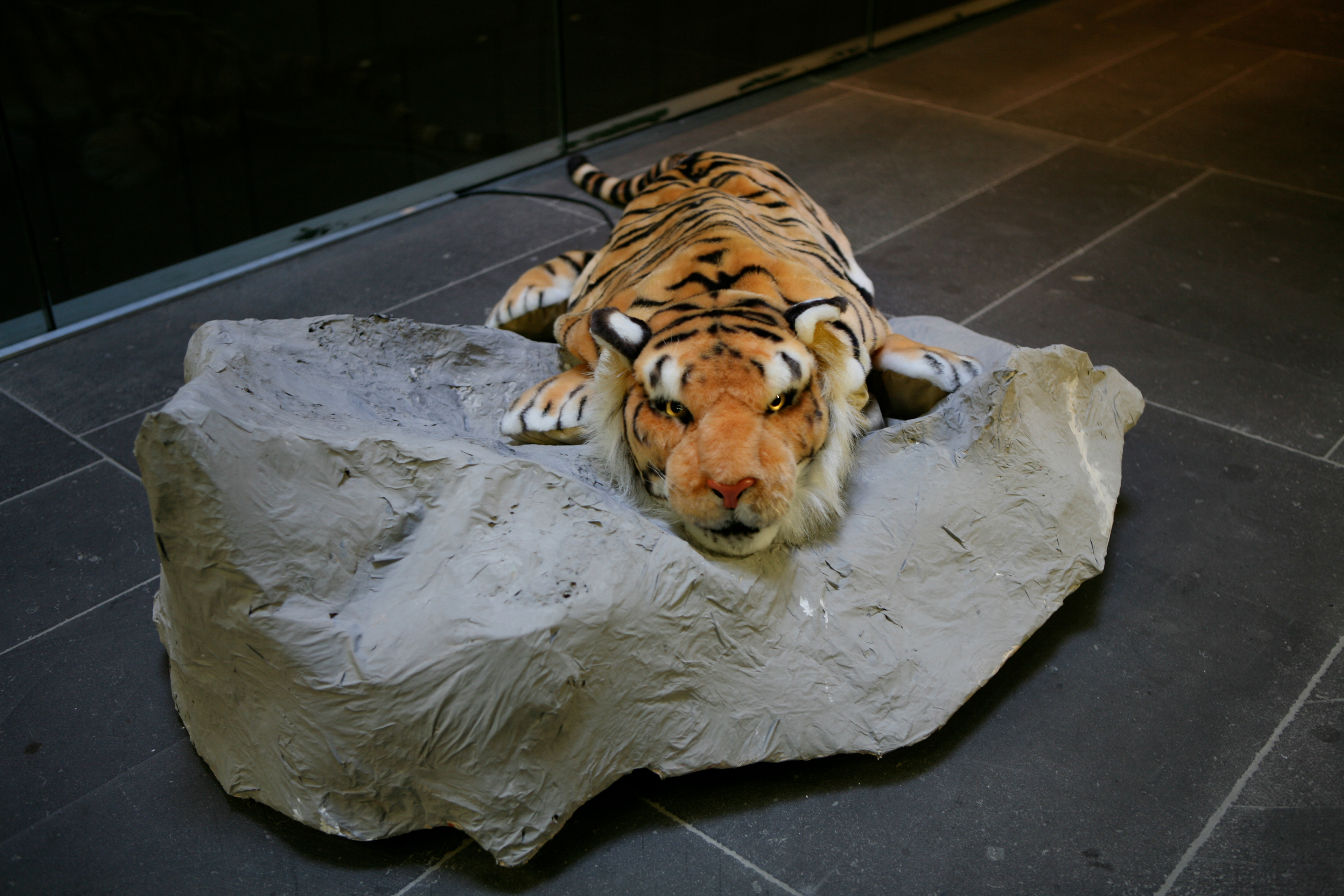 Tiger Steps, 2007
Doll, 4 photographs, sound, stone object, 2007
Tiger Steps, 2007
Doll, 4 photographs, sound, stone object, 2007
This project deals with the cafeteria and pastry shop Tiger Steps in the TZUM (Central Department Store) in Sofia. TZUM was the most exclusive shopping mall in Sofia. It is situated in the very center of the Bulgarian capital. It has already been known as a so-called shopping paradise during socia-list times. Even Sundays, one could buy goods here which cannot be found elsewhere. After its pri-vatization the new owners of the mall built a new cafeteria and pastry shop that displays a real tiger in a cage of glass. The female tiger named Schakti has spent already four months of its life in here. In the installation a tiger-doll tells this curious story in an ironic way from the tigers point of view. Objects and photographs are proof to the truthfulness of the story. -
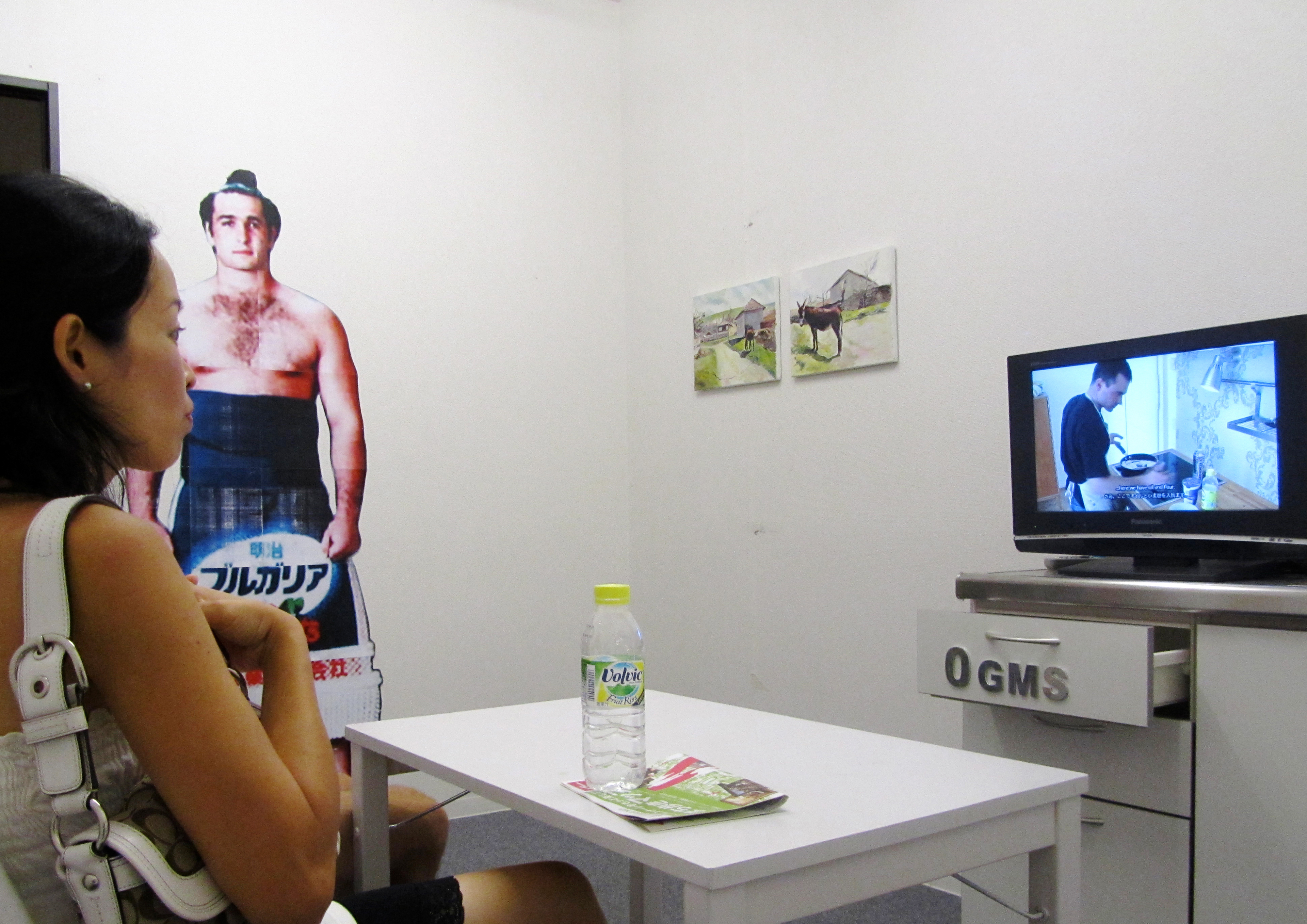 Cultural Moussaka, 2010
multi-media installation, 2010
Cultural Moussaka, 2010
multi-media installation, 2010
Several spoons of Bulgarian culture, and it tastes much better,’ says Kamen Stoyanov in his video cookery show Cultural Moussaka (2010) as he drizzles a portion of Kultura yogurt over a dish. As the Bulgarian artist goes step by step through the recipe, he compares making a sauce to preparing a canvas. Still, his video has less to do with the transmission of know-how than with a cultural system that seems bent on making things impossible: Bulgarian cultural politics.
The work was in the modest yet convincing exhibition aptly titled ‘Impossible Stories’, which was part of the Otto Mauer Prize Stoyanov won in 2011. The Vienna- and Sofia-based artist’s earlier works deploy humour as a stylistic device to address issues such as the political past of his native Bulgaria (Hallo Lenin, 2003) and art market conventions (Which one should I buy, 2008). ‘Impossible Stories’ also showed off his flair for the absurd and the ironic since the works describe not only the improbable but also the downright incredible. The absurdities of the internationalized art and culture industry led to Cultural Moussaka: To sponsor Stoyanov for the 2010 Aichi Triennale in Nagoya, the Bulgarian Embassy in Tokyo offered him not money, but a cook. Since Bulgaria likes to present itself as a culinary culture, the embassy’s chef was hired to work at the opening. When the chef was laid off as a result of cutbacks, Stoyanov took this incident of ‘cultural promotion’ as a starting point for his work. The other elements were two things the Japanese tend to associate with Bulgaria: yogurt (Japan’s best known brand is called ‘Bulgaria’) and Kotoo¯shu¯ Katsunori, a sumo wrestler of Bulgarian origin. Stoyanov made moussaka, which happens to be Kotoo¯shu¯’s favourite dish.
In other works, Stoyanov translates Bulgarian cultural policy into symbols that are clear and often perfidious but never trite. Exploring the prosaic and the overlooked, his videos lend visibility to cultural outsiders, like the street philosopher Seiji Inamine in Impossible Message(2010). The negligible meets the momentous in Bringing Kultura (2010), which documents another intervention. As the national cultural budget was being cut in 2010, a monument was erected in Sofia to honour the microbiologist Stamen Grigorov, who discovered lactobacillus bulgaricus yogurt in 1905; Stoyanov responded with his own cultural export and travelled to an exhibition in Maribor with a suitcase full of Kultura yoghurt, which he distributed to the locals. Fittingly, the show featured an empty Kultura pot (Untitled, 2011) to collect donations for the Ministry of Culture and the next Venice Biennale. This found object was Stoyanov’s answer to the scandalous financing of the last Bulgarian pavilion, which was financed by a private individual instead of the state. As culture gets privatized, does it taste better? Text by Anne Katrin Fester, translated by Jonathan Blower Video -
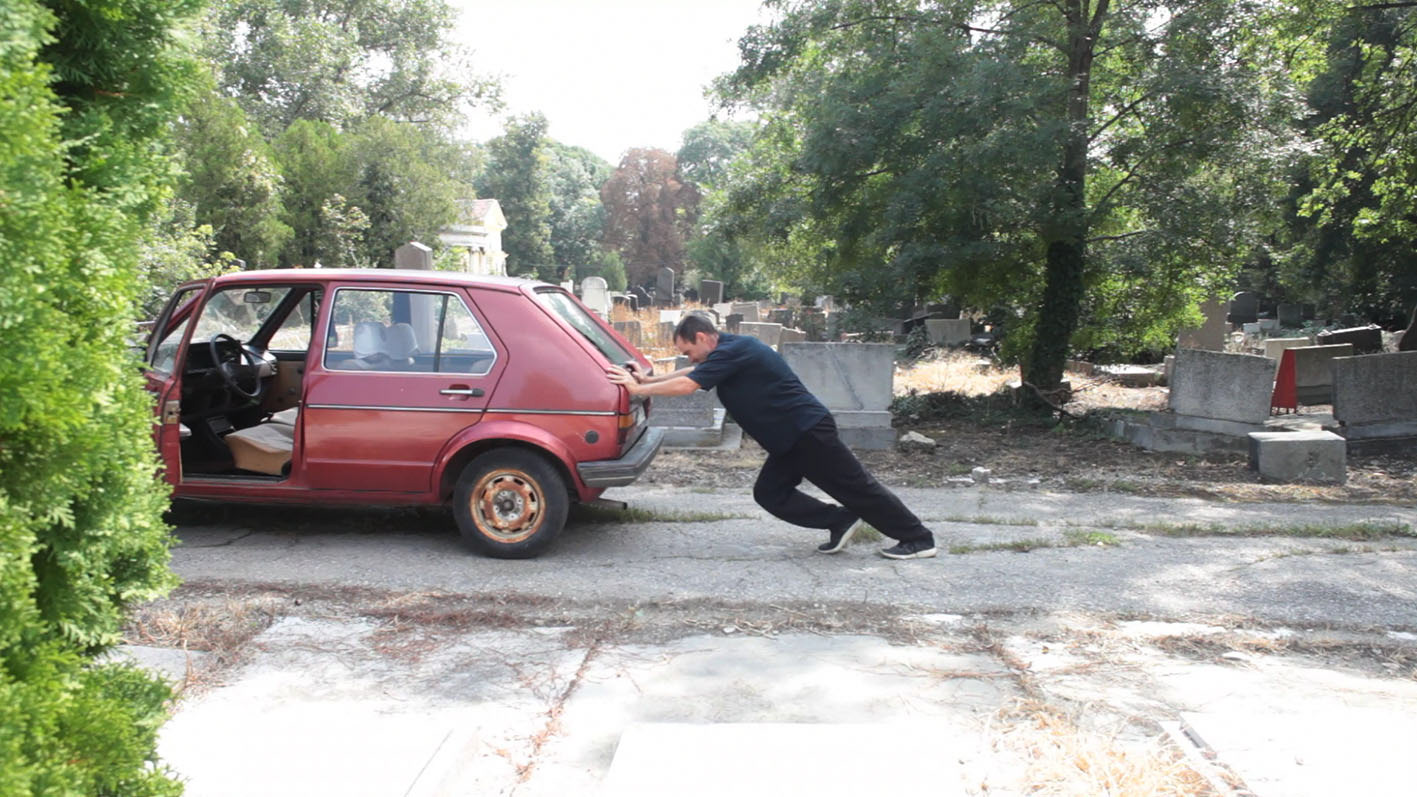 VW-blessed
installation, video 10:00 min
VW-blessed
installation, video 10:00 min
The artist exorcises the demons of a Volkswagen Golf Mk1 and drives to Plovdiv, where he parks it in Otets Paisiy Street. A video running in the parked car starts with a scene in which Stoyanov is pushing the thirty- three-year-old VW towards Sofia’s Central Cemetery, where he has its evil spirits exorcised, turning it into an object of art. Video -
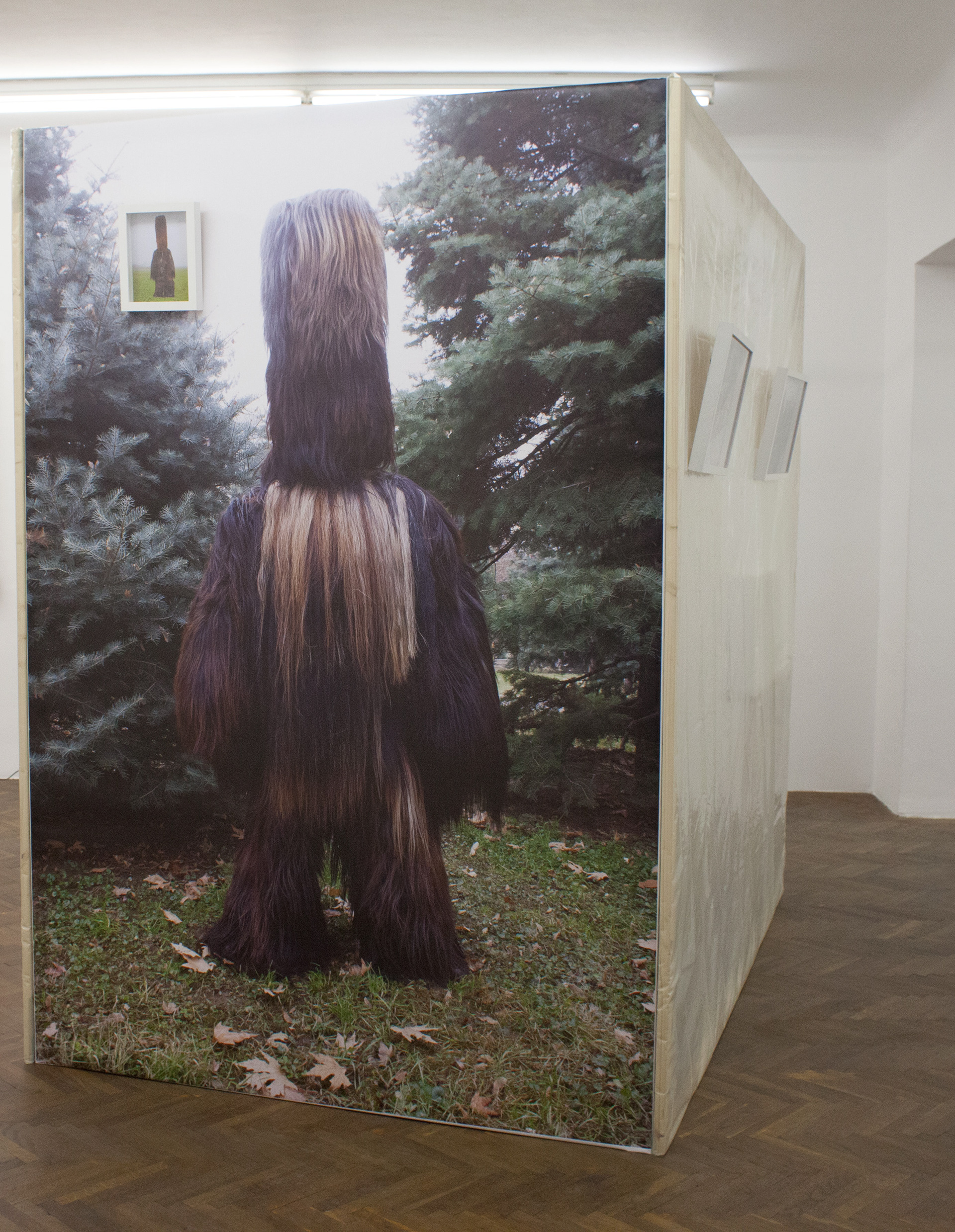 Nein zur Abschottung, 2014
Installation, Fotografien, Video, Wahlkabine “Nein zur Abschottung” (no to compartmentalization) is an installation about the migration issues, respectively about the right of free movement and work. The title comes from the citizens initiative in Switzerland of the same name
Nein zur Abschottung, 2014
Installation, Fotografien, Video, Wahlkabine “Nein zur Abschottung” (no to compartmentalization) is an installation about the migration issues, respectively about the right of free movement and work. The title comes from the citizens initiative in Switzerland of the same name
“Nein zur Abschottung”, which was born as a reaction against the initiative of the Swiss Peoples Party „Gegen Mas-seneinwanderung“ (against mass migration). Through circumstances I was asked to produce a photography for an advertisement poster. The image should show, as the legend of the example image I got said , “a wild hairy man in a landscape”.
The subject was a traditional folks dance figure from Bulgaria, which dances annually in the beginning of January in order to drive out the evil. The installation I present is a voting cabin including the photography I had produced as a commission, a video in which I talk about the circumstances of the case in which I had failed. Because of this, in the speech I take the responsibility for the tight negative result of the referendum and give the people the possibility to vote. Video -
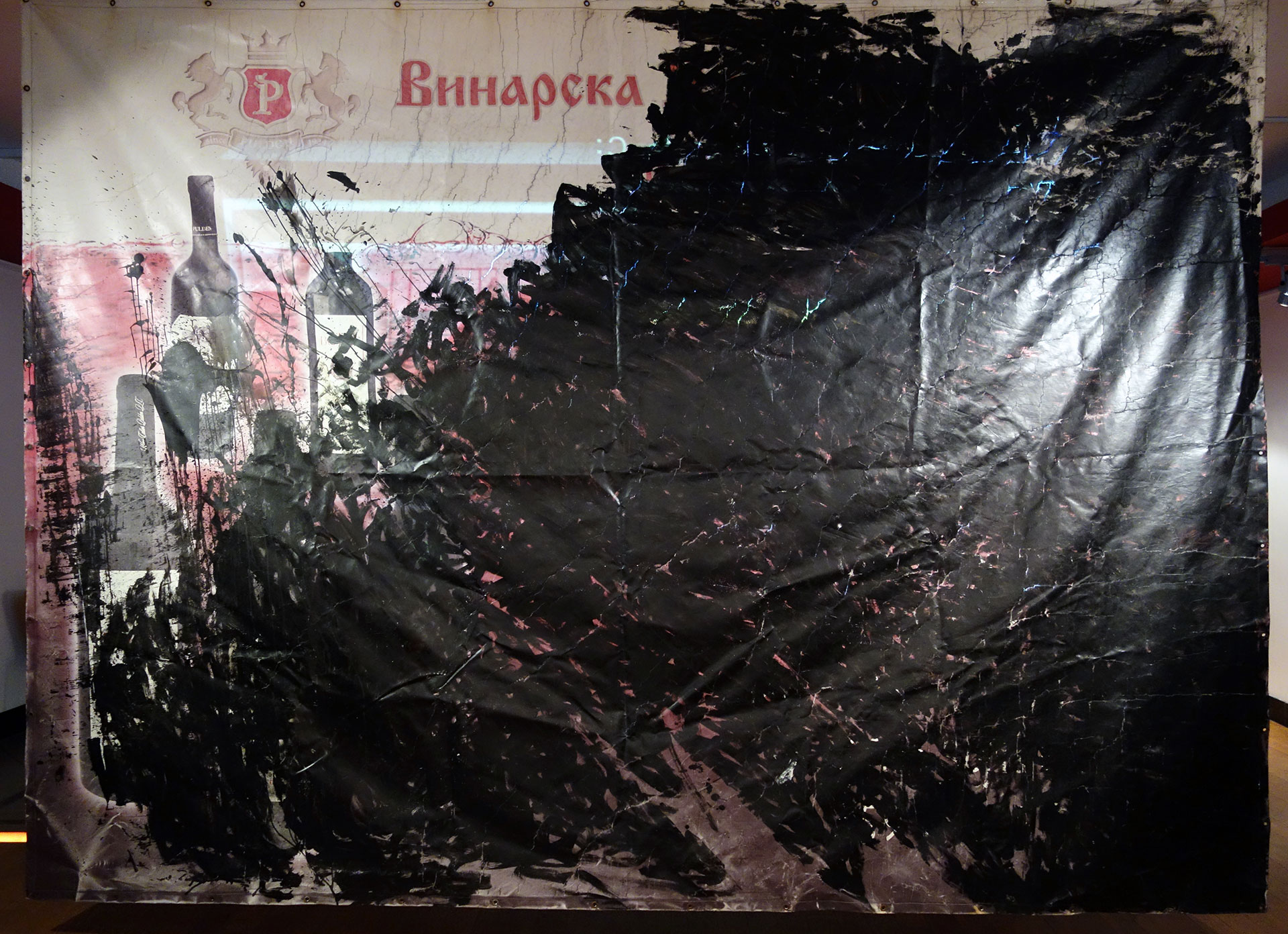 New Piece of Art, 2013
performance
New Piece of Art, 2013
performance
6 min. video
unique image
300 x 400 cm New Piece of Art was a performance and a temporary installation for the duration of Sofia Contemporary 2013.
An abandoned billboard in the fields near Sofia Airport was over-painted by the artist with black colour. The action happened on the place and had a duration of about an hour. The artist was fighting with the size of the image and with the wind.
The second part of the project was an opening speech for the New Piece of Art. Here the artist behaved like if he was somebody from the municipality or from the festival and talked about the intention and the means of the work. Watch Kamen Stoyanov's opening speech here -
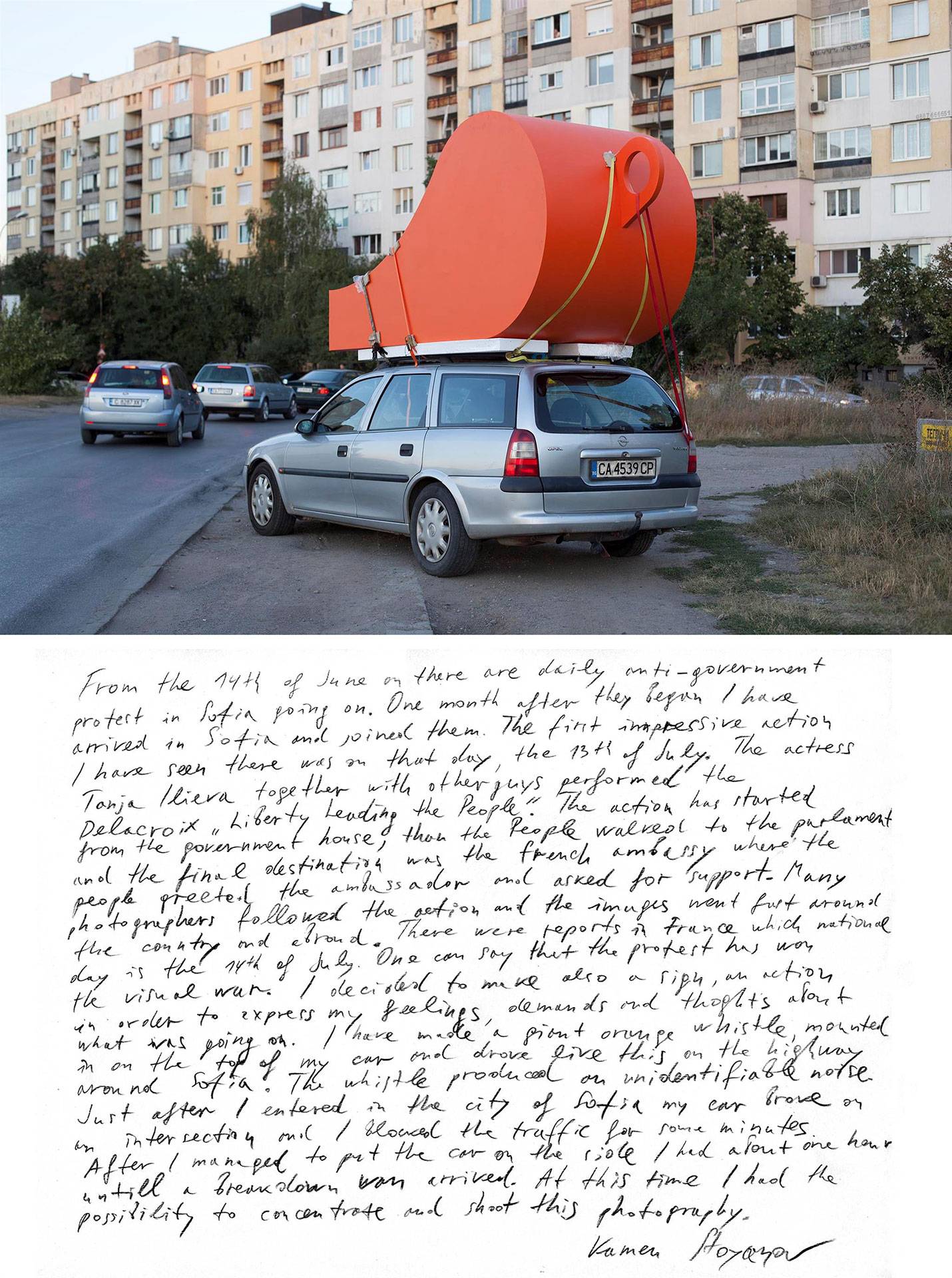 Noise Trial, 2013
photo, video and text
Noise Trial, 2013
photo, video and text
each 100 x 150 cm
edition 2/5+1AP Watch here video to the artwork -
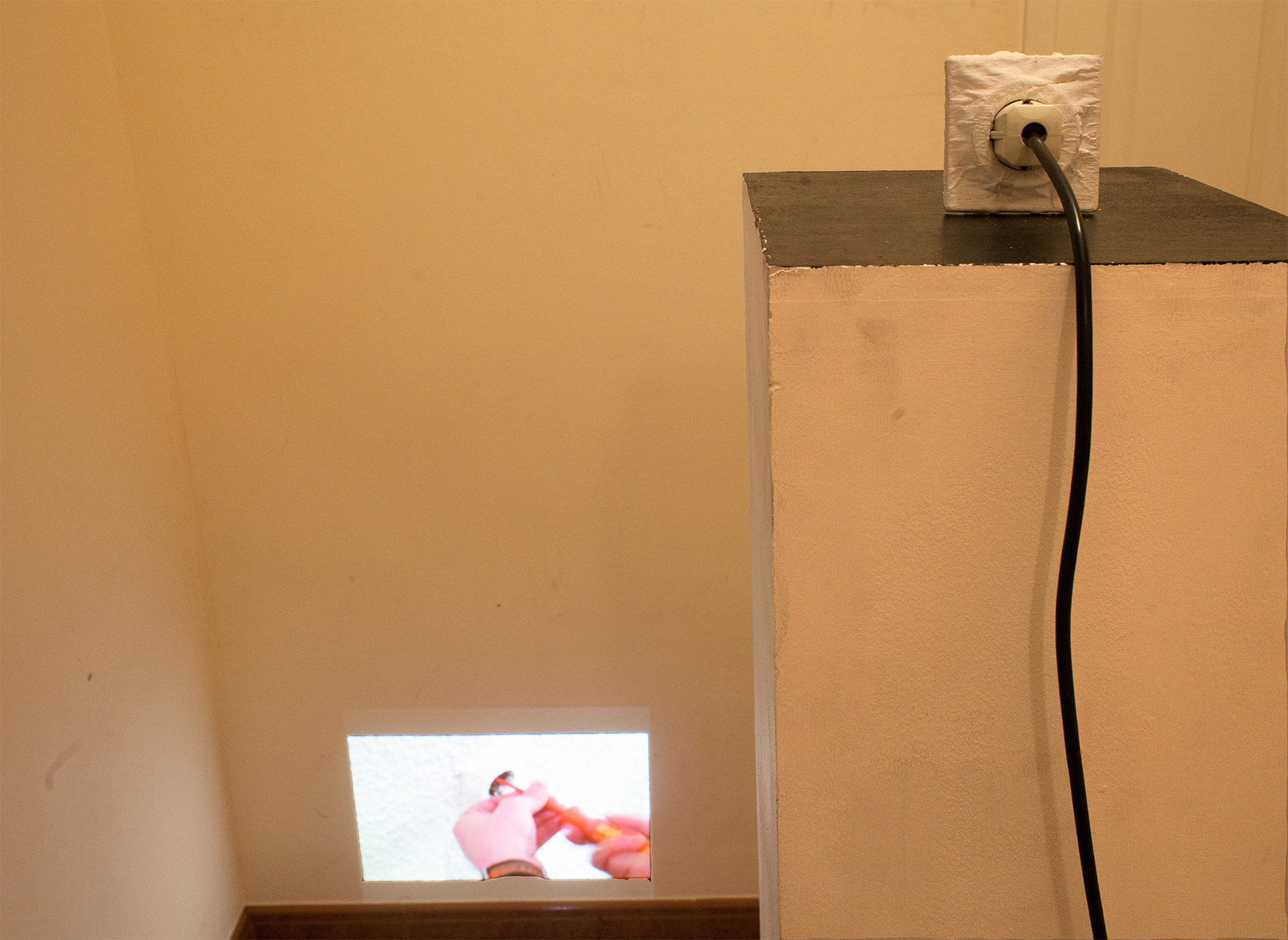 Museum’s Socket, 2015
electrical socket from Sofia City Art Gallery,
Museum’s Socket, 2015
electrical socket from Sofia City Art Gallery,
video 2' 26'' An old electrical socket from a museum (Sofia City Art Gallery) has been exchanged by the artist with a new one. The Museum Socket got through the years many layers of paint, tape etc. and looks in itself as a piece of painting and sculpture at the same time.
In the video one can see its demontage and the montage of a new socket and the short talk between the artist and the electrician.
In the final installation the Museum Socket is put on pedestal and connected to the electricity in the new space in order to give a power for the projected video of its replacement.
Video
Object
-
 Operantium, 2016
artist book
Operantium, 2016
artist book
1100 pages
A4 with 10,5 cm back
еdition 2/10+1AP
Set of book and video documentation, 49”
The artist book Operantium combines all drawings from the same titled performance in June 2016 at Kunstverein Gleis70 in Zurich. Video -
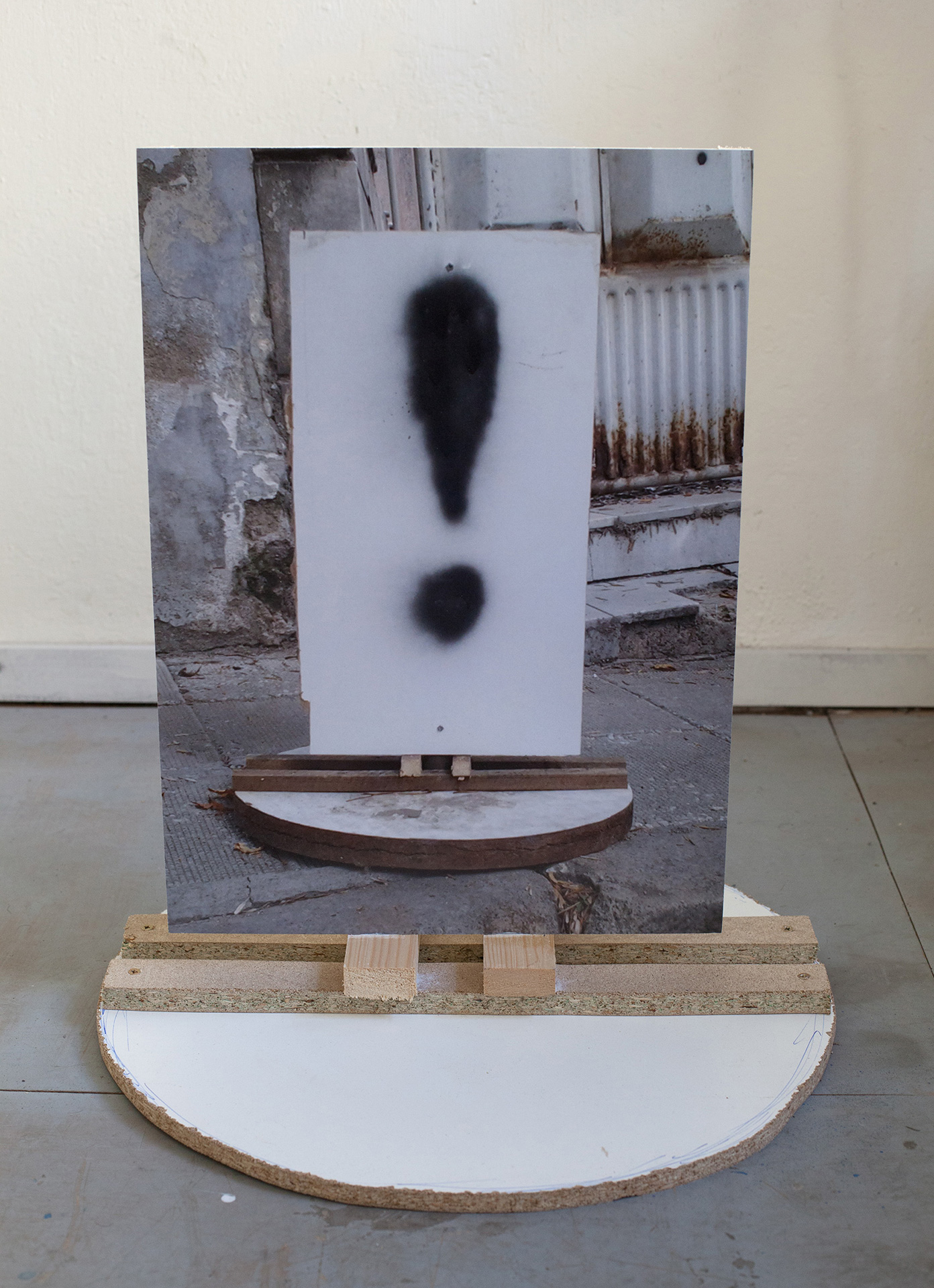 Sign of Exclamation, 2015
50 x 55 x 50 cm
Sign of Exclamation, 2015
50 x 55 x 50 cm
edition 1/5+1AP
Mixed Media
-
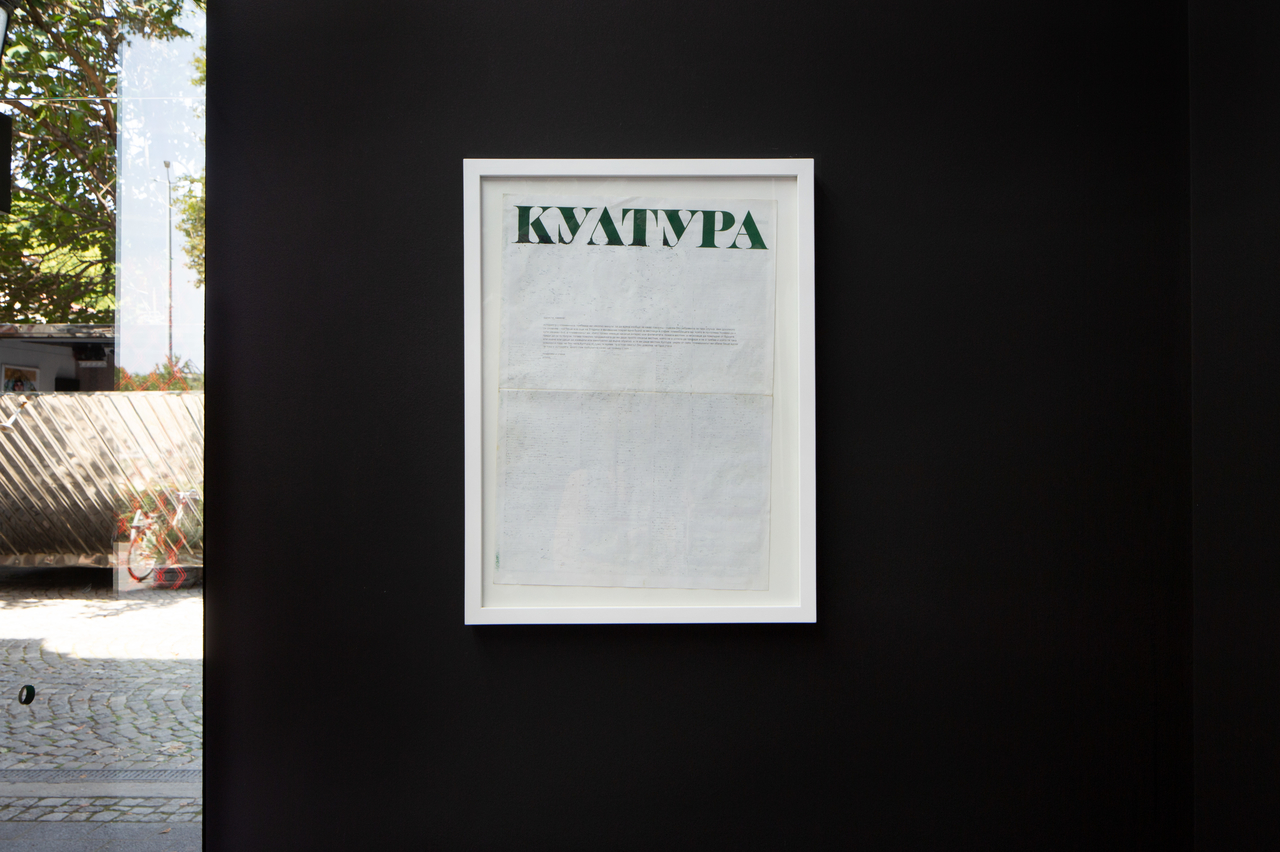 A small story about “KULTURA” , 2010
silk screened text on newspaper
A small story about “KULTURA” , 2010
silk screened text on newspaper
-
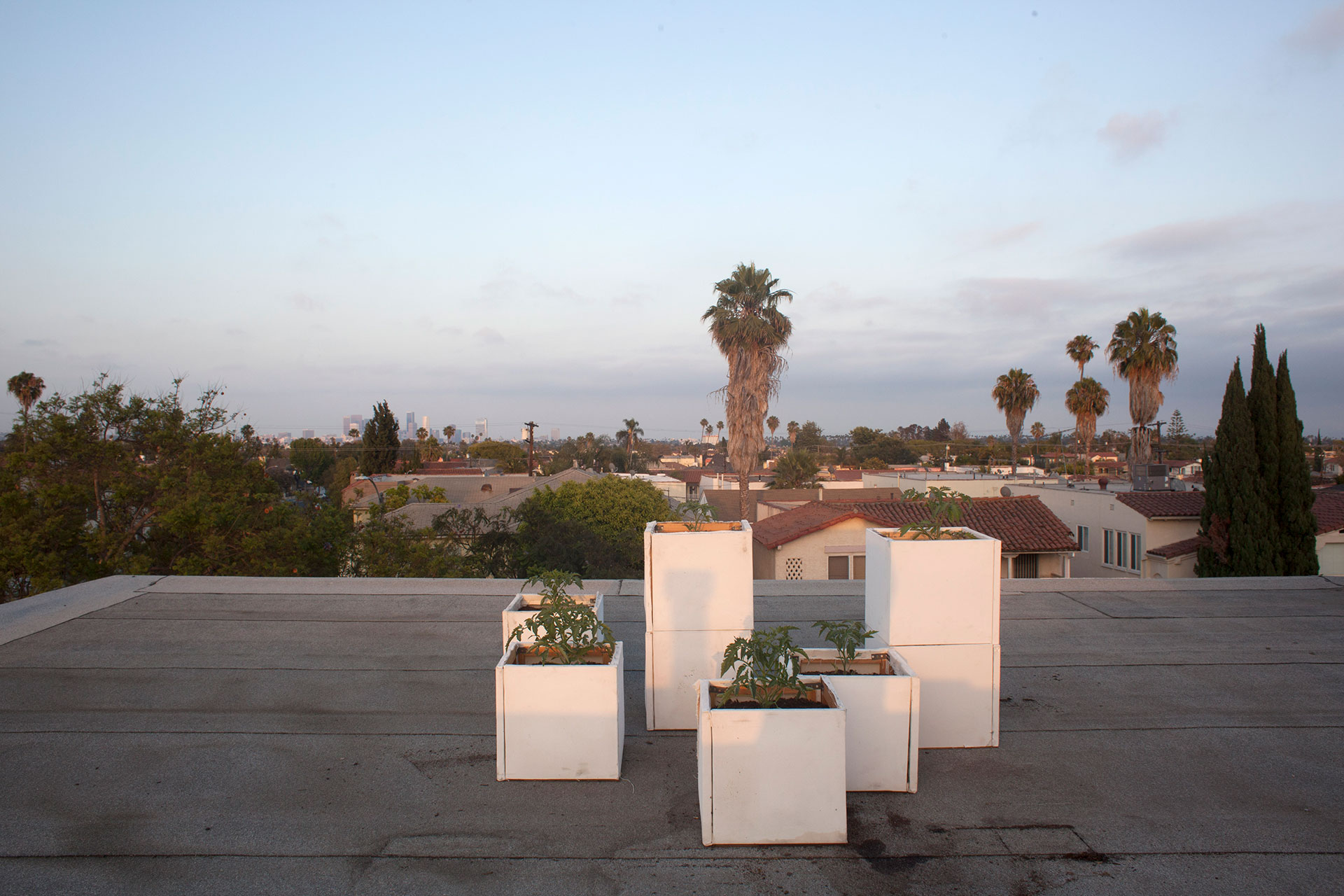 Stoyanov´s Tomato Products, 2012
digital video 14min., scatches, 23 color photographies, canvaces,
Stoyanov´s Tomato Products, 2012
digital video 14min., scatches, 23 color photographies, canvaces,
tomato soup in glass jars, inflatable vinyl tomato, song, artist book Soup stopped being “just soup” in 1962, when Andy Warhol showcased for the first time his “portraits” of the Campbell’s tomato soup in the Ferus Gallery in Los Angeles. Today even in the grocer’s around the corner the legendary little box is much more Warhol’s than Campbell’s, as it holds, in preserved state, a real revolution in our interaction with art.
Exactly 50 years later Kamen Stoyanov planted, in the yard of Schindler House in Los Angeles, the tomato seeds he had brought from Bulgaria. The artist spent his six month residence in the U.S. farming in this popular monument of modern architecture aiming at producing a limited amount of tomato soup following his own recipe. Drawing on the concept of the ready-made, he transposed a tradition from his motherland – the household preparation of winter’s reserves – into an atypical context. He used the peculiar architectural setting, the legendary Hollywood charisma and its hidden social dramas to reposition a simple domestic gesture and, through it, his own cultural identity, which he transformed into an art statement. Kamen Stoyanov started his work as homage to Warhol, but ultimately left no stone unturned in pursuing the idea of deconstructing the art object. What should he take back to Bulgaria? A can or a jar? He solved his conceptual dilemmas by taking back, together with the soup, his painterly “originals,” which originated in his farmer’s produce but in a purely “art” and, let’s say, intuitive way. Kamen Stoyanov has delved into social layers that go beyond the problem of the uniqueness of the work of art and the product status that Warhol has won for it. Through the artist’s experiences and in the contrast between the environment and his actions, there is a direct reference to the life of the immigrant population in the Mecca of beautiful illusions and to migration in general. Stoyanov tried to enrich this contrast by sabotaging reality and performing his art in the popular cooking show format, where he reveals the secret/recipe/his concept. He built his Farmville simulation not in a virtual but in a reallife yard ending up creating art out of soup and soup out of art.
Svetlana Kuyumdzhieva Watch the video here All elements of the work can be viewed here -
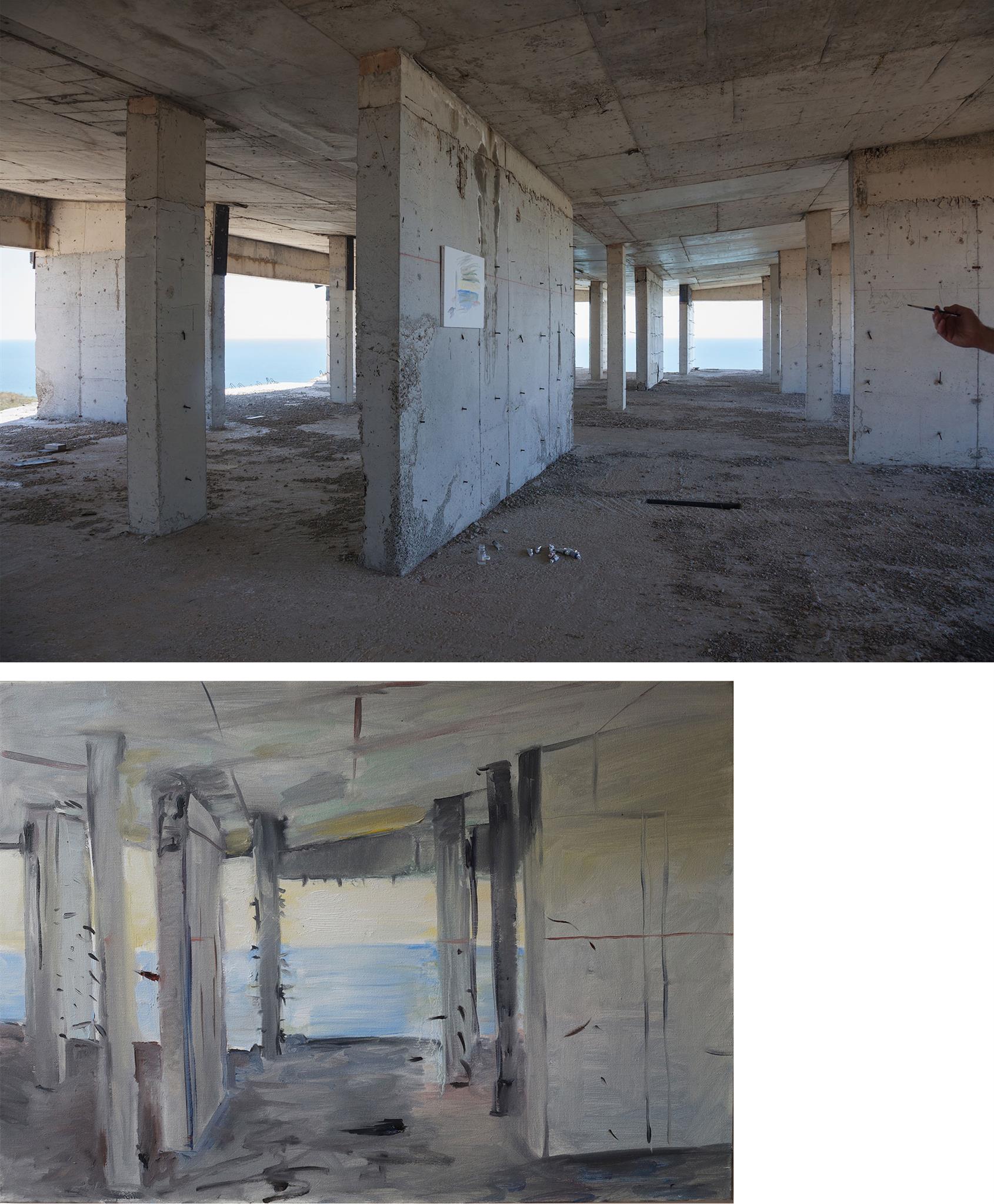 Painting Action at Hotel 1000 Columns, 2017
consisting:
Painting Action at Hotel 1000 Columns, 2017
consisting:
digital print on alu-dibond
120 x 180 cm
oil color on canvas
40 x 60 cm
Artworks with Light
-
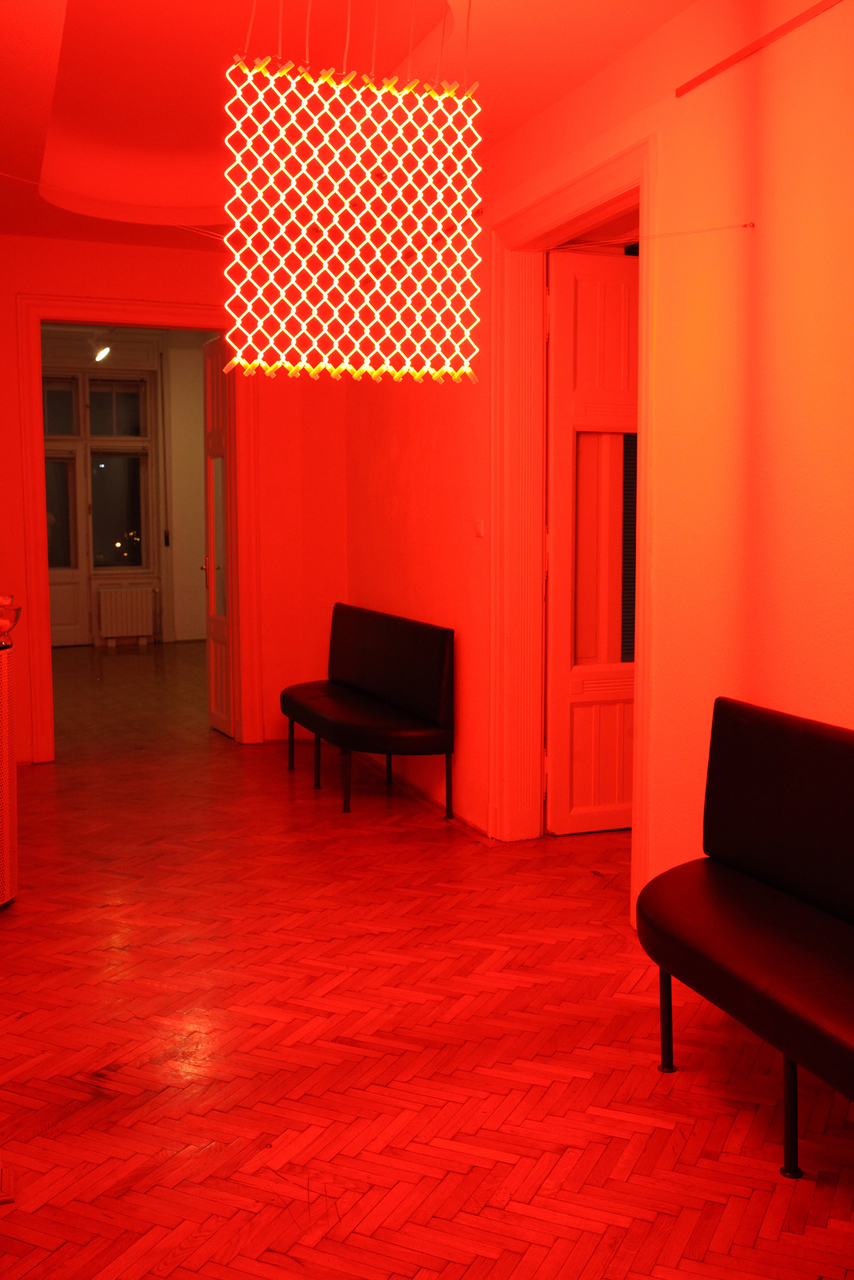 High Voltage Fence, 2015
Neon
High Voltage Fence, 2015
Neon
80x80cm -
 Forget it, we can’t afford this, 2011
neon
Forget it, we can’t afford this, 2011
neon
approx. 25 x 300 cm -
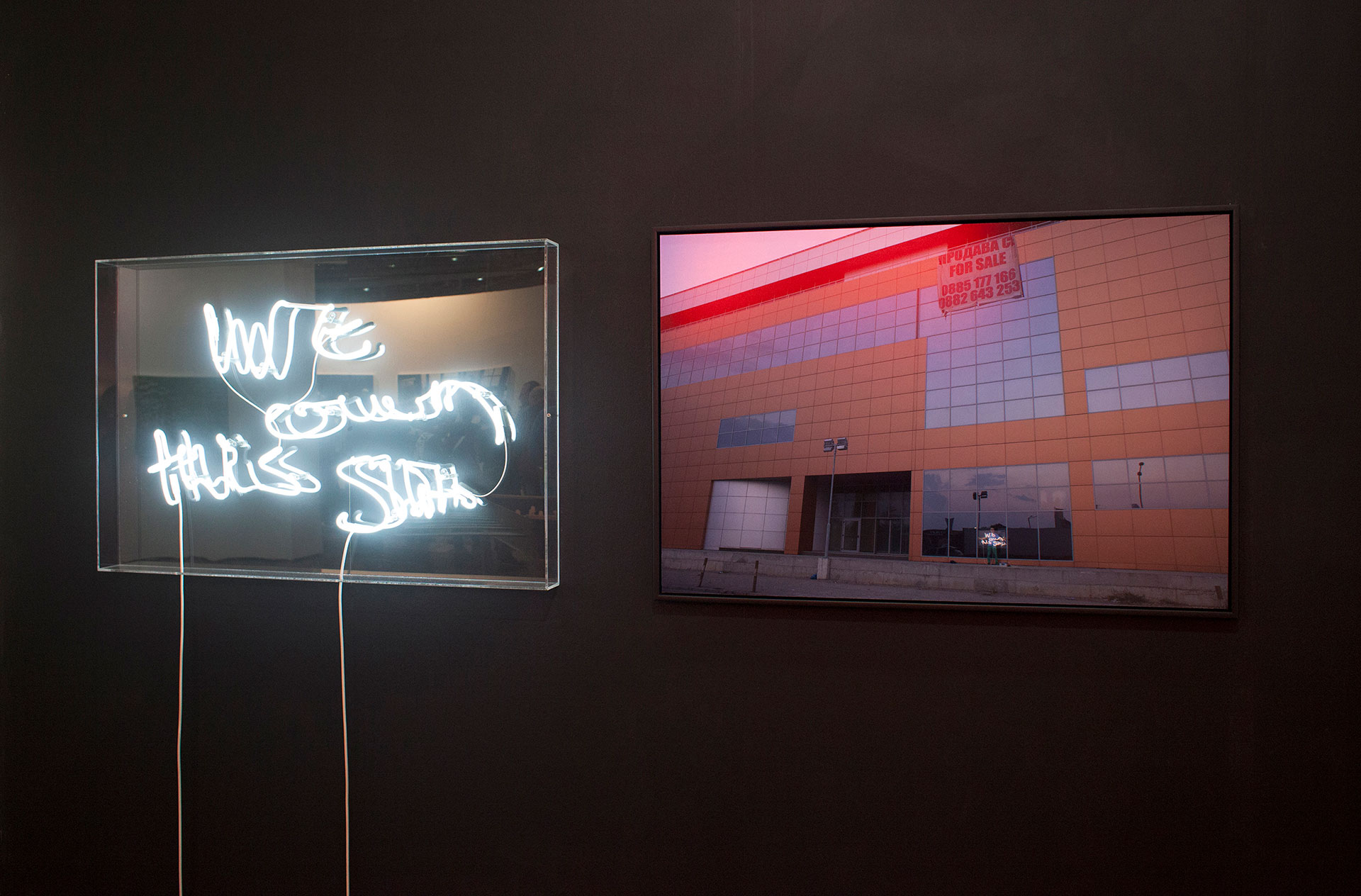 We Own this Shit, 2014
neon, photography
We Own this Shit, 2014
neon, photography
each 80 x 120 cm
edition 2/5+1AP -
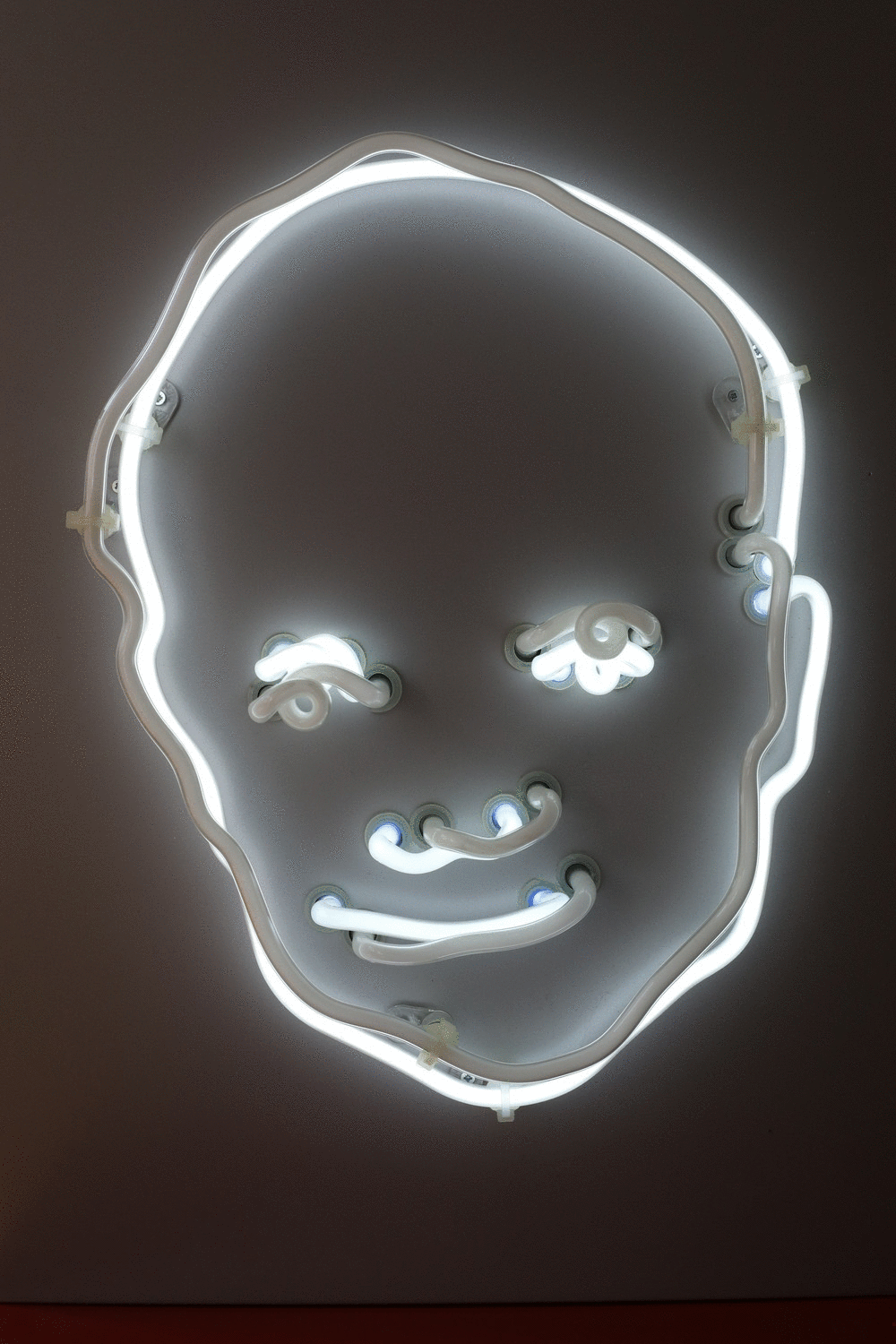 Yes, 2012
neon
Yes, 2012
neon
60 x 40 cm
edition 2/3+1AP -
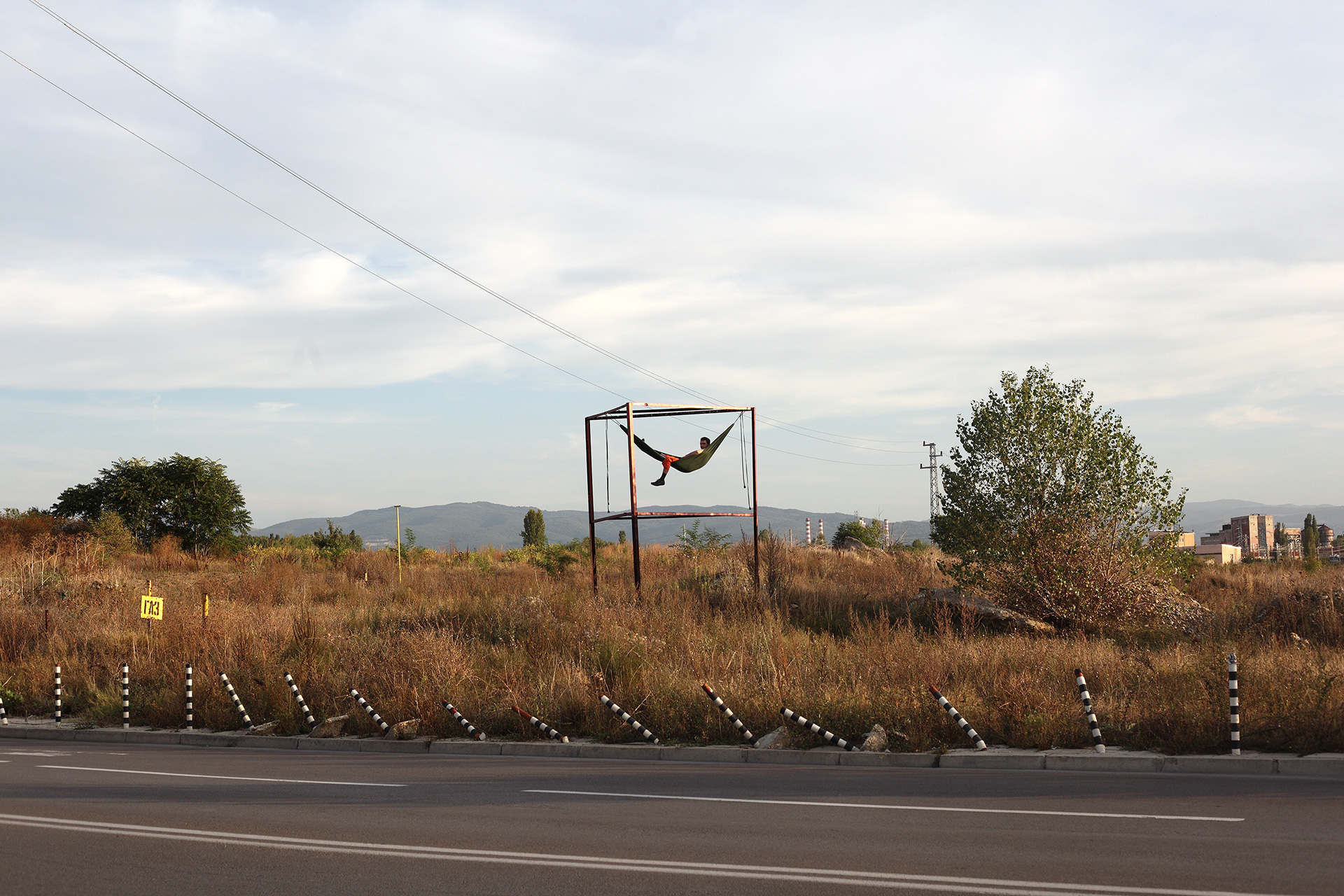 Synchronisation, 2013
light box
Synchronisation, 2013
light box
80 x 120 cm
edition 1/5+1AP
video 5.25 min, 2010 Kamen Stoyanov used for his action an empty billboard construction placed next to the Sofia airport. The artist climbed on it, fixed a hammock and finally placed himself on it, replacing the missing advertisement. He communicated with the arriving people by observing them and in this way awaked their interest. Video -
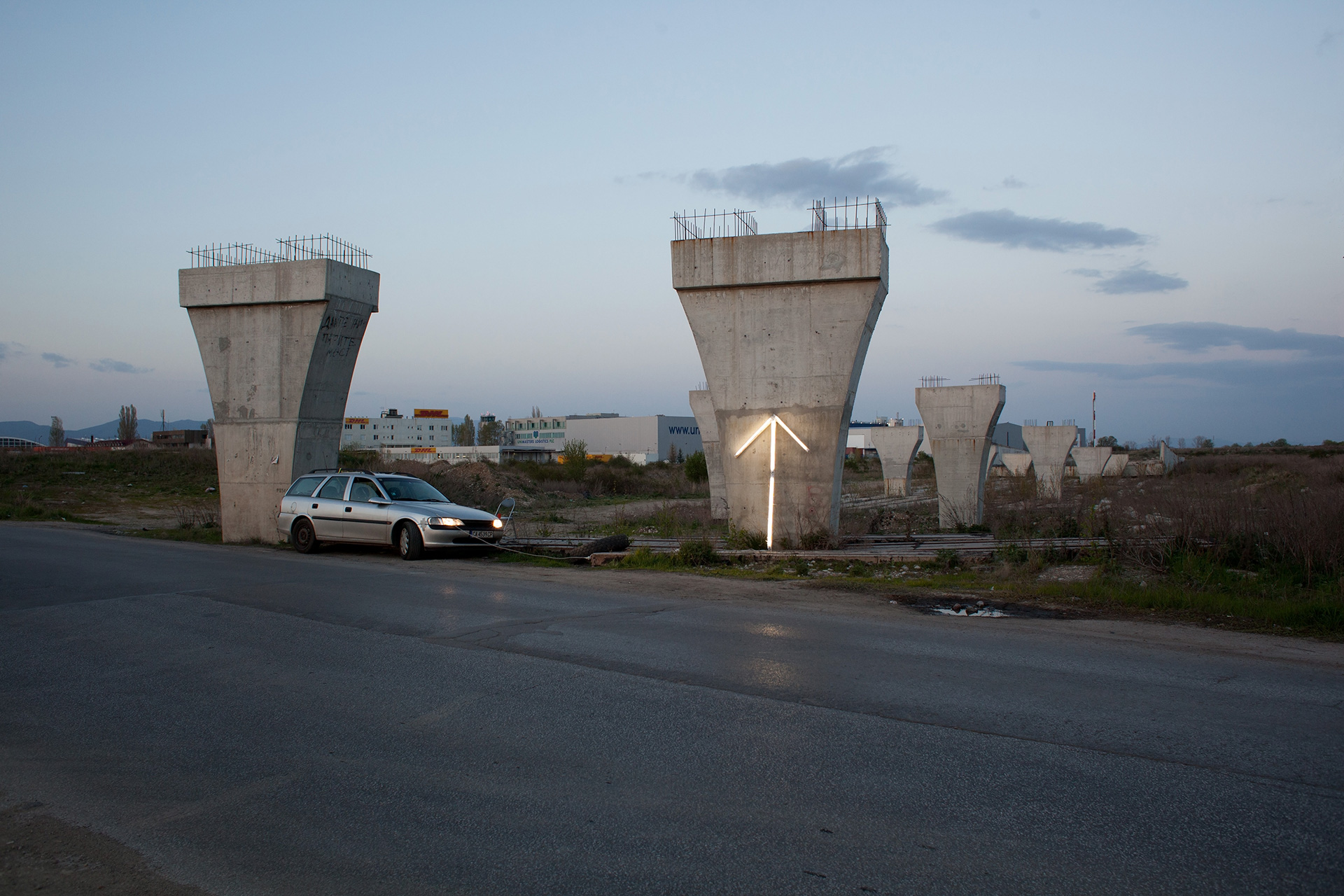 Future Idea, 2013
light box
Future Idea, 2013
light box
80 x 120 cm
edition 2/5+1AP -
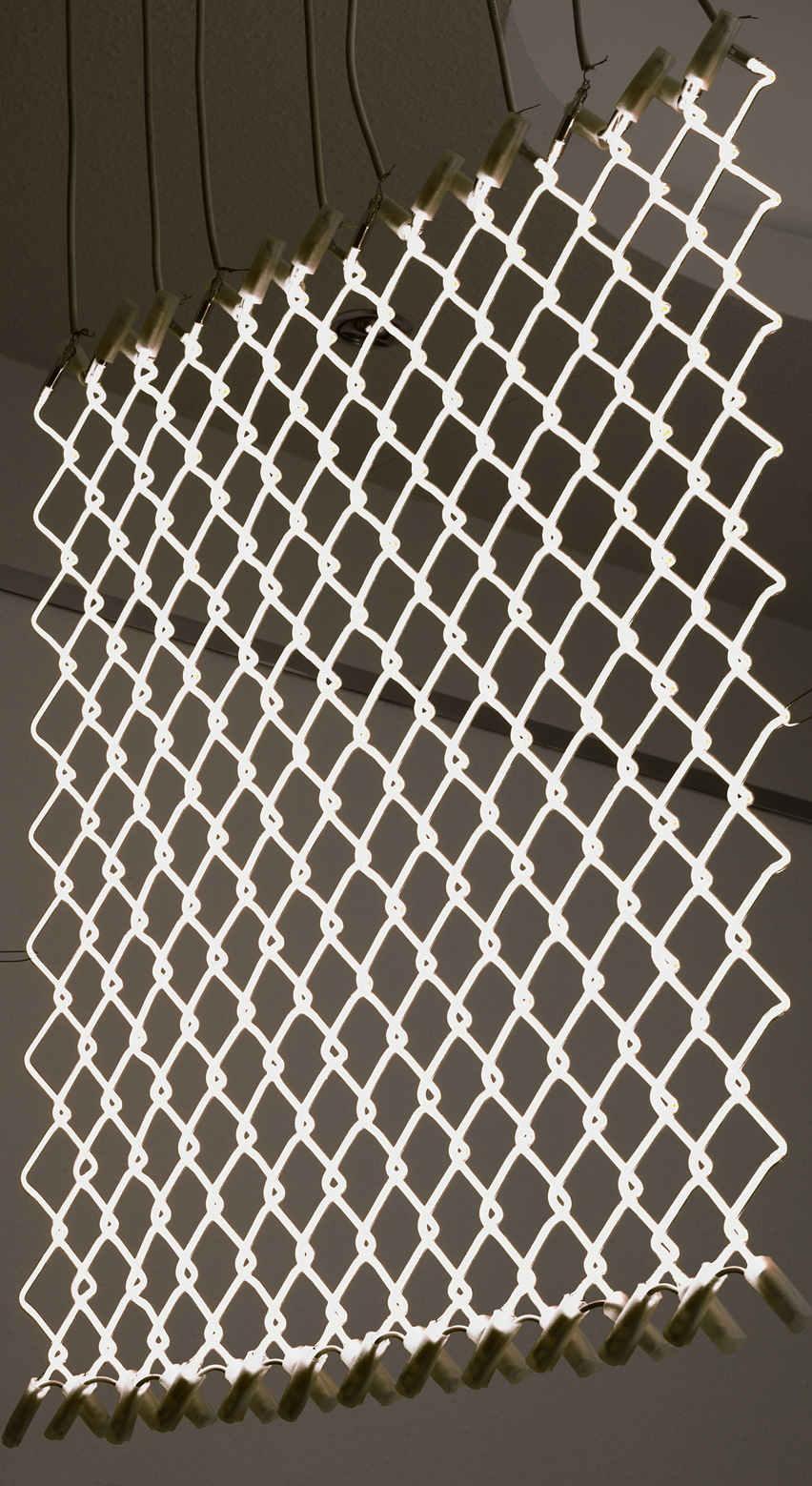 High Voltage Fence, 2015
neon
High Voltage Fence, 2015
neon
80 x 80 cm
edition 1/5+1AP
Painting
-
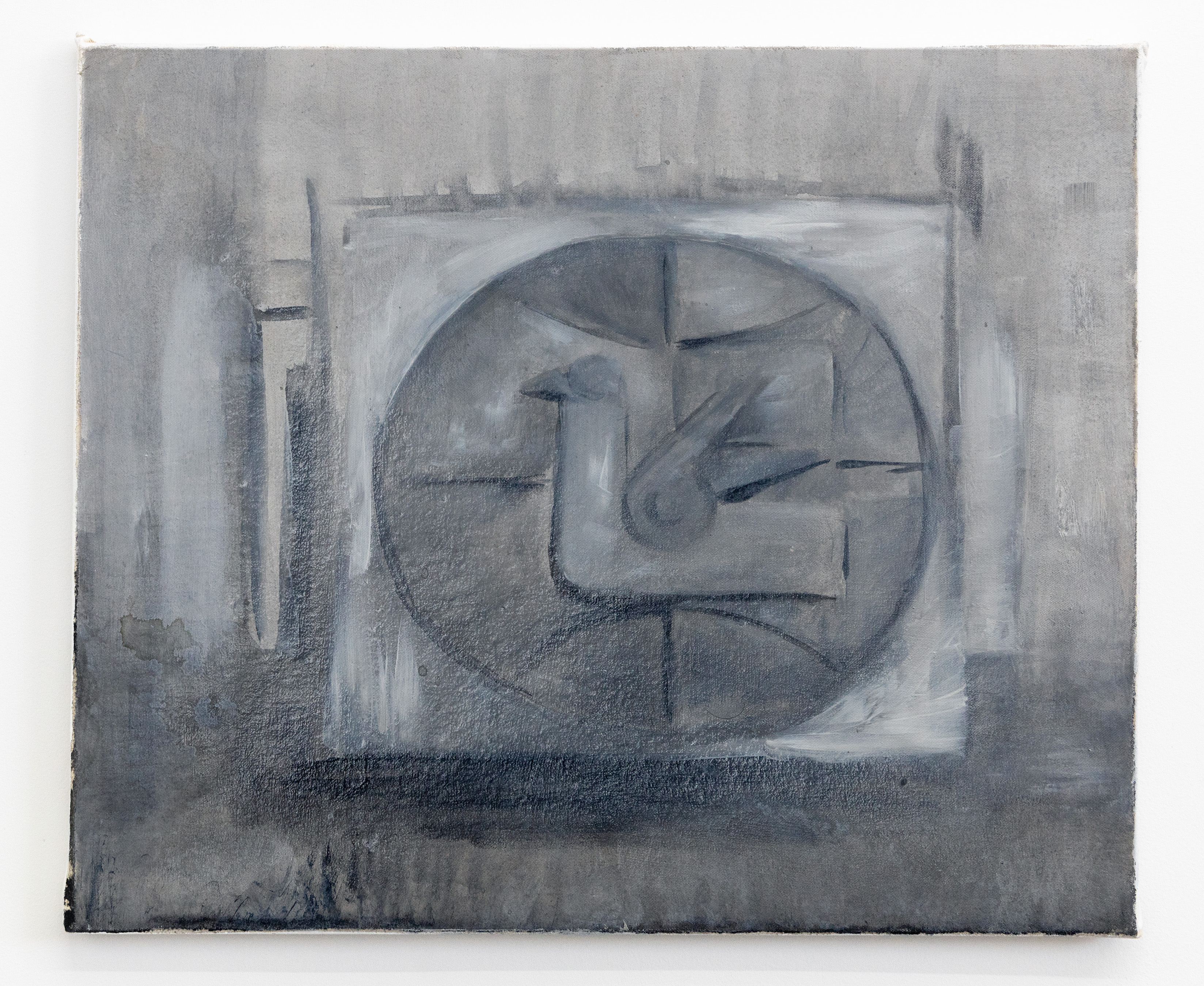 Town of Shadows 9, 2024
acrylic paint on canvas 46 x 55 cm
Town of Shadows 9, 2024
acrylic paint on canvas 46 x 55 cm
-
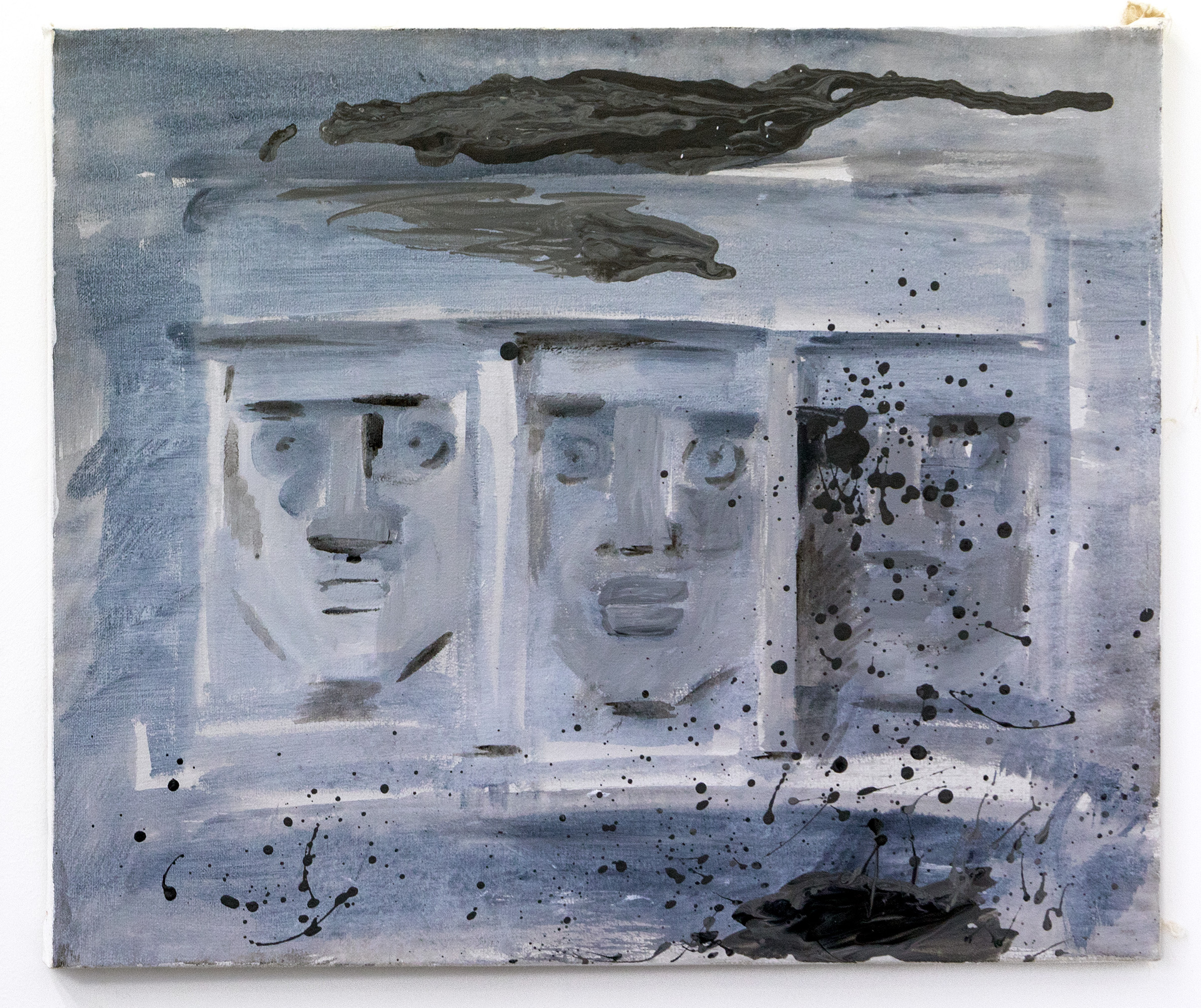 Town of Shadows 8, 2024
acrylic paint on canvas 46 x 55 cm
Town of Shadows 8, 2024
acrylic paint on canvas 46 x 55 cm
-
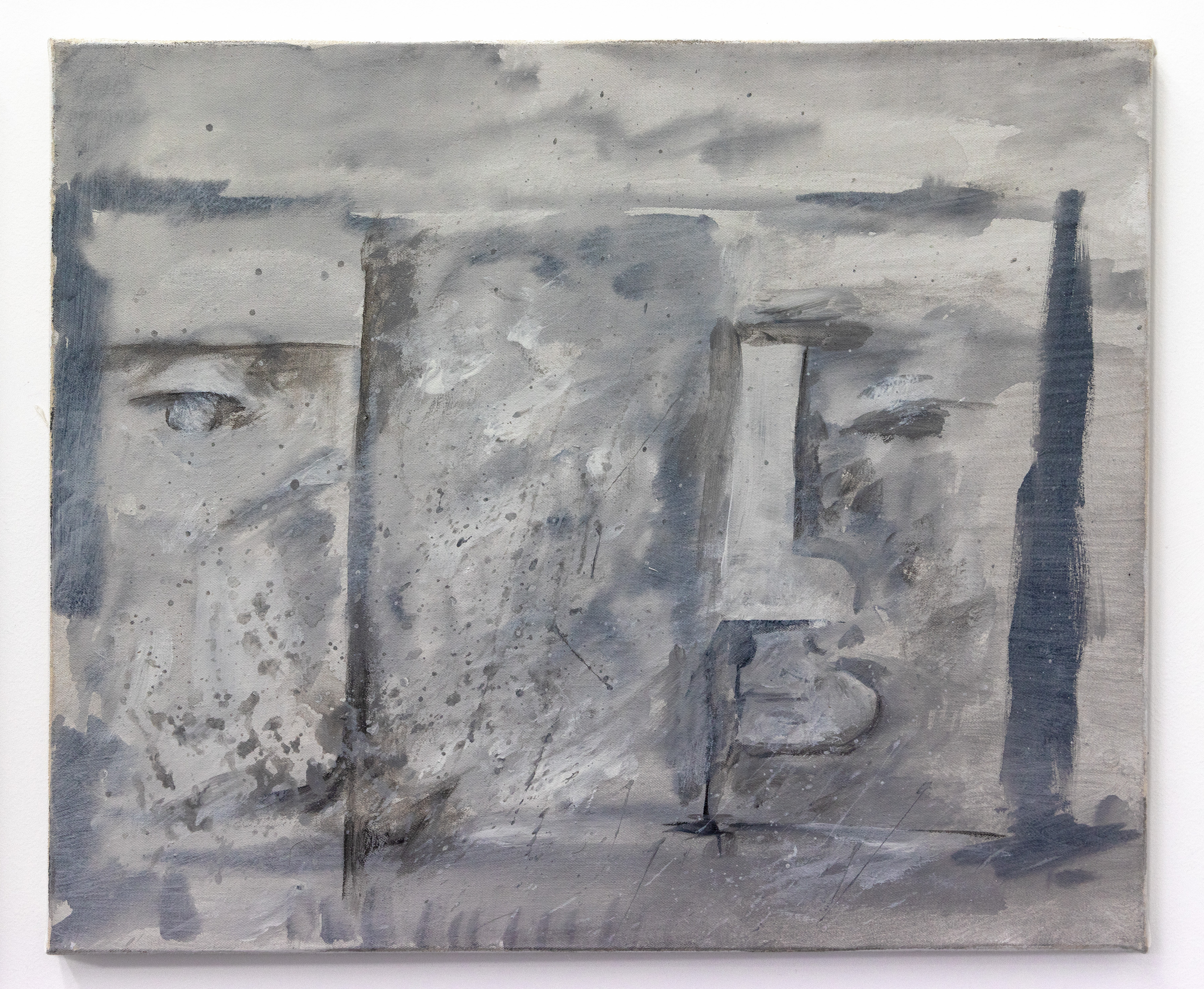 Town of Shadows 7, 2024
acrylic paint on canvas 46 x 55 cm
Town of Shadows 7, 2024
acrylic paint on canvas 46 x 55 cm
-
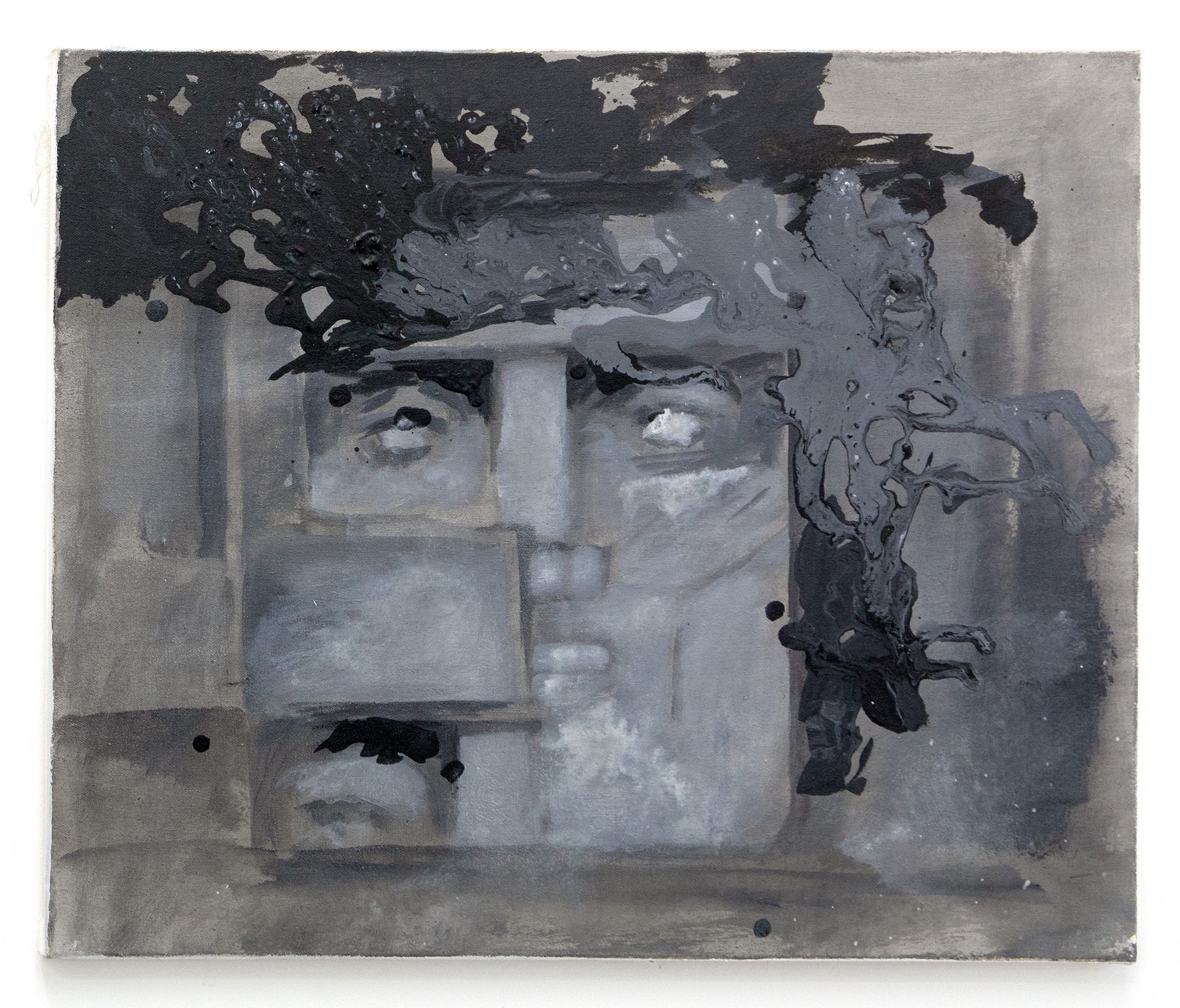 Town of Shadows 6, 2024
acrylic paint on canvas 46 x 55 cm
Town of Shadows 6, 2024
acrylic paint on canvas 46 x 55 cm
-
 Town of Shadows 5, 2024
acrylic paint on canvas 46 x 55 cm
Town of Shadows 5, 2024
acrylic paint on canvas 46 x 55 cm
-
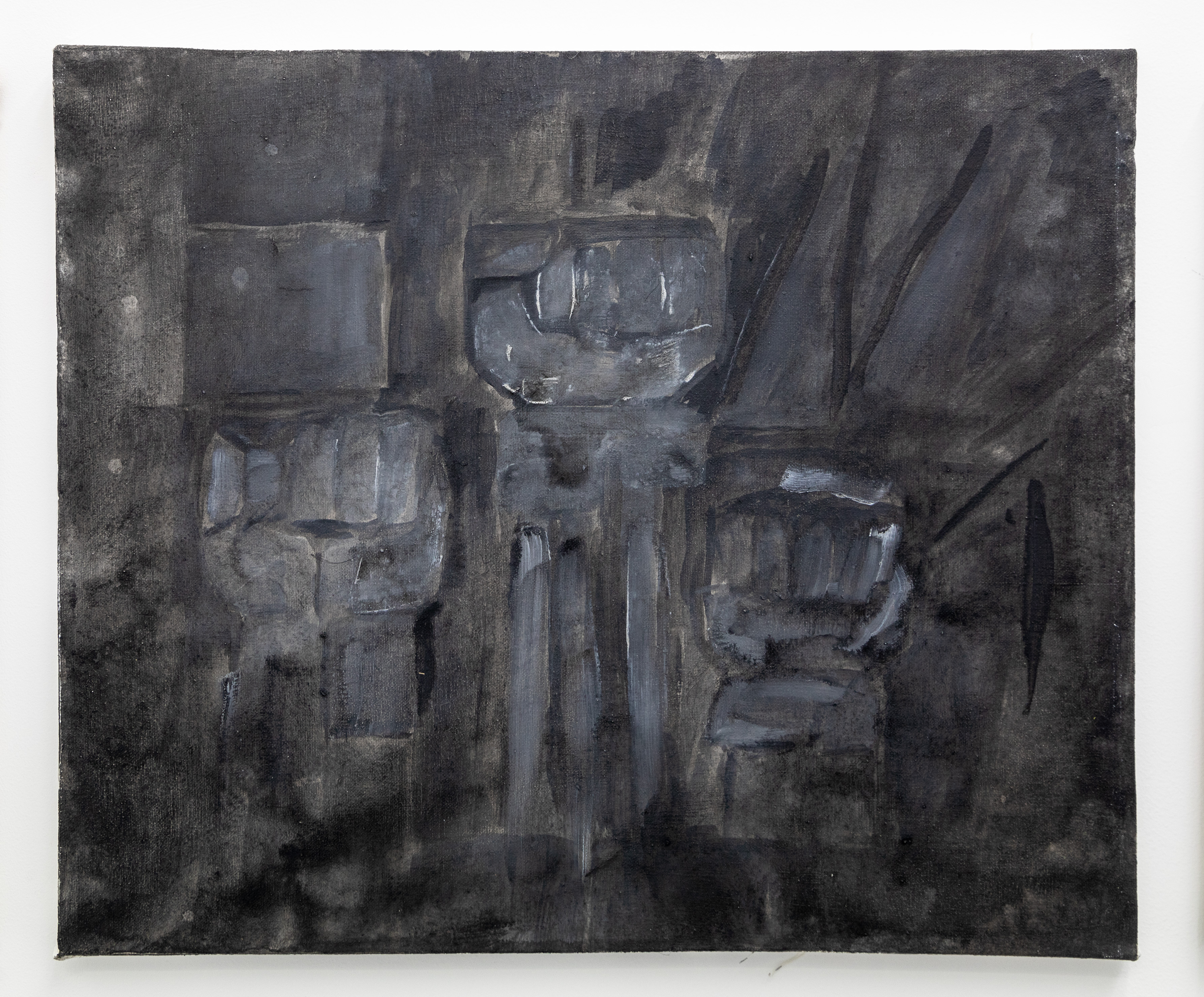 Town of Shadows 4, 2024
acrylic paint on canvas 46 x 55 cm
Town of Shadows 4, 2024
acrylic paint on canvas 46 x 55 cm
-
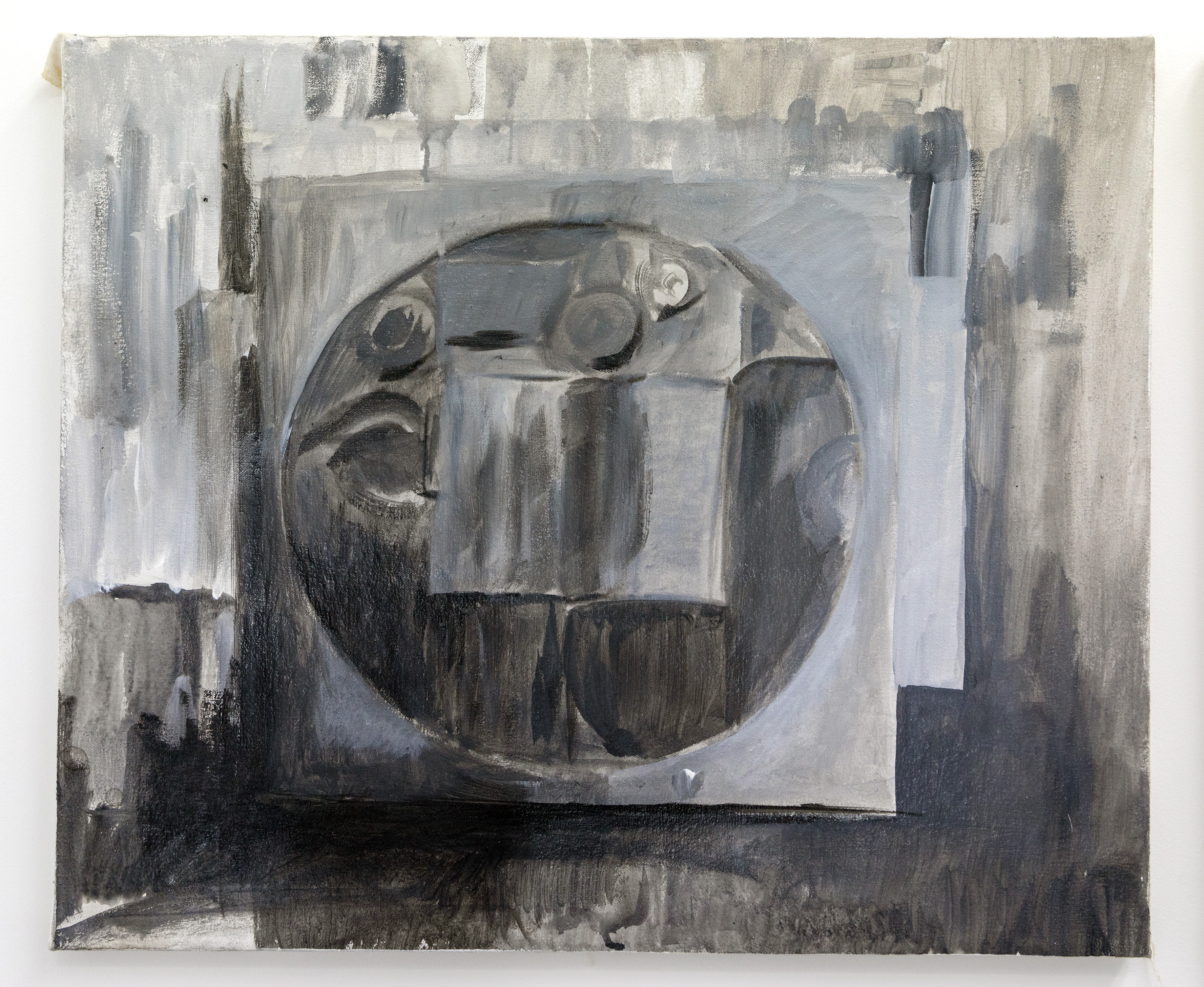 Town of Shadows 3, 2024
acrylic paint on canvas 46 x 55 cm
Town of Shadows 3, 2024
acrylic paint on canvas 46 x 55 cm
-
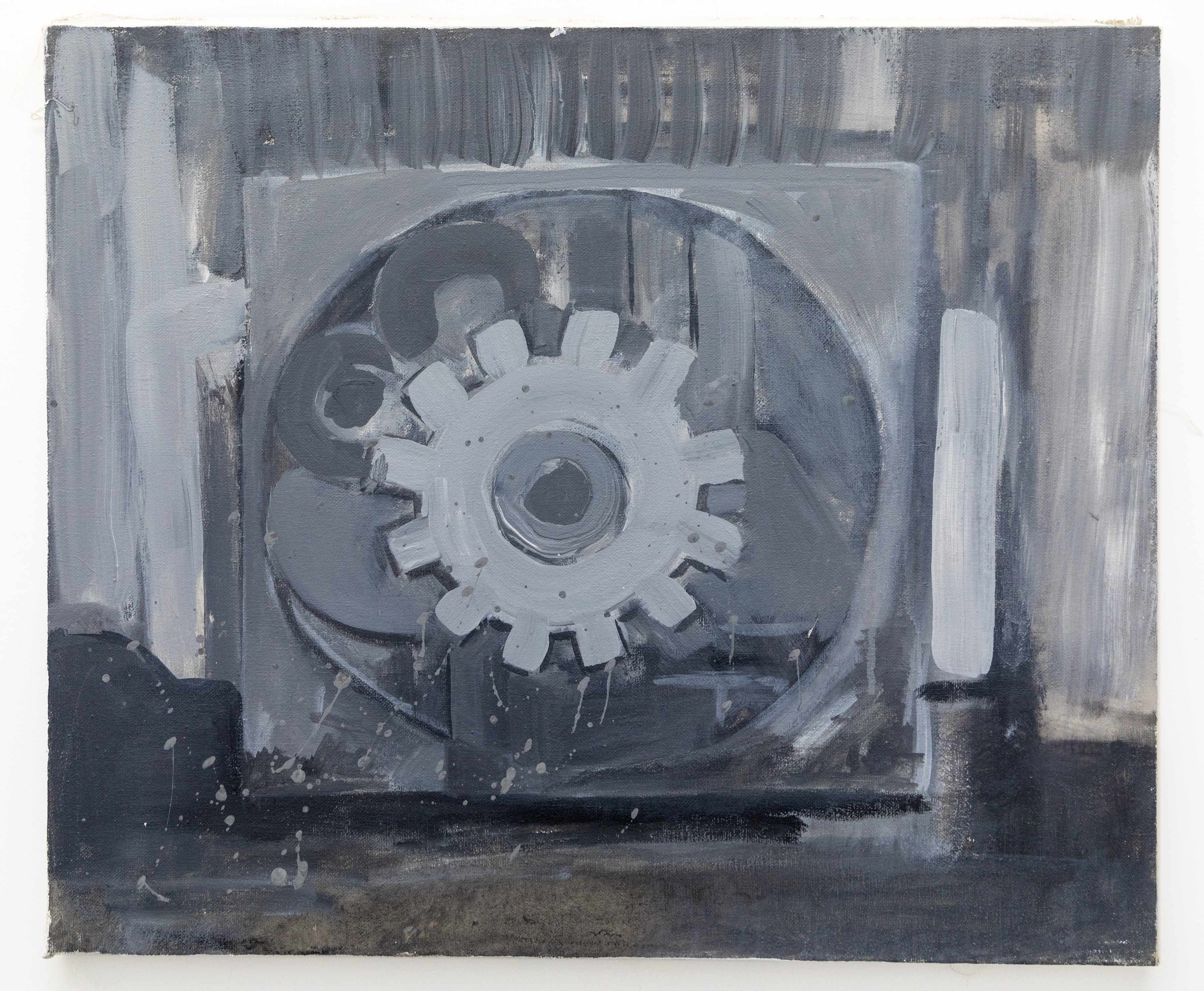 Town of Shadows 2, 2024
acrylic paint on canvas 46 x 55 cm
Town of Shadows 2, 2024
acrylic paint on canvas 46 x 55 cm
-
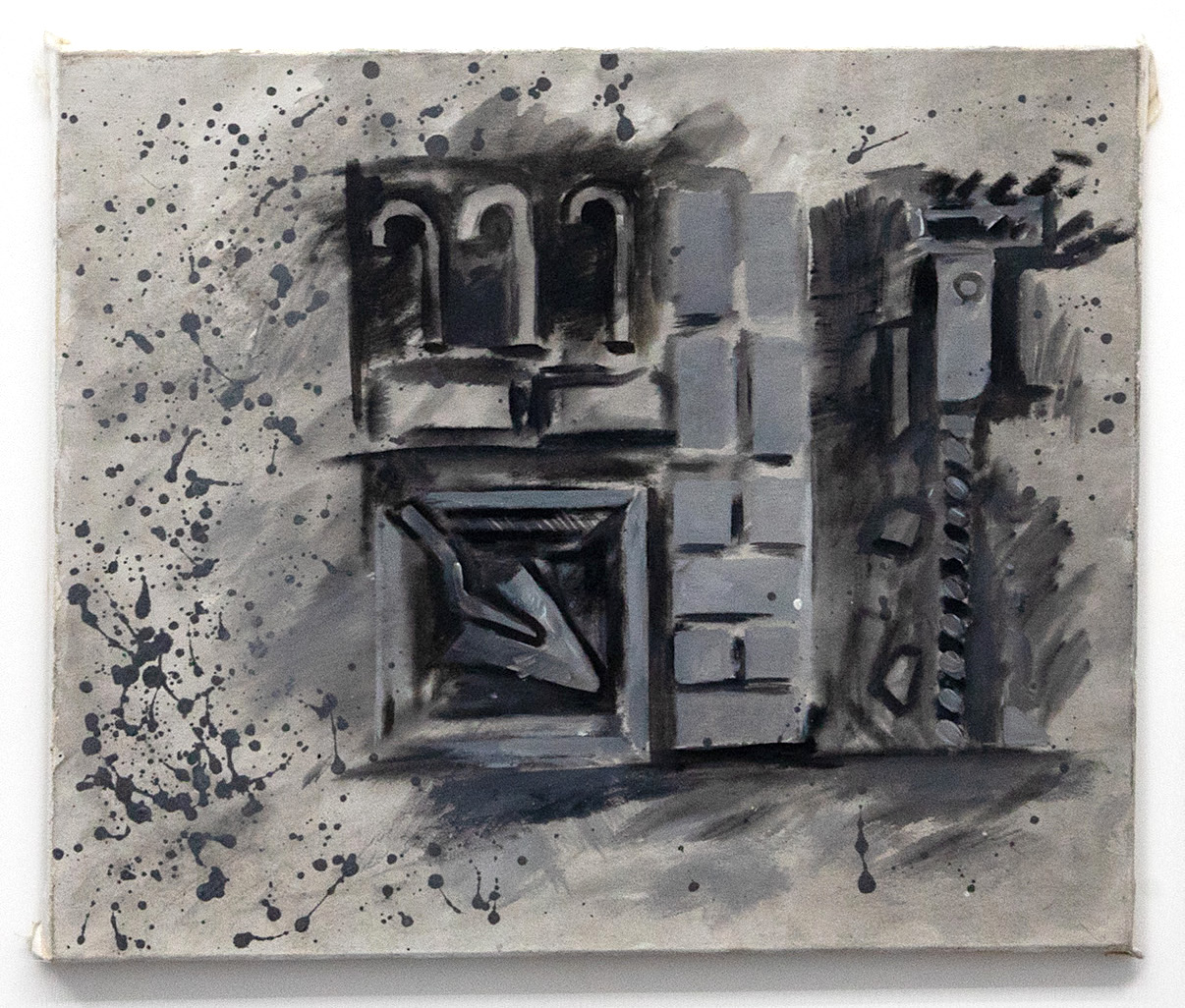 Town of Shadows 1, 2024
acrylic paint on canvas 46 x 55 cm
Town of Shadows 1, 2024
acrylic paint on canvas 46 x 55 cm
-
 Achtung!, 2019
painting
Achtung!, 2019
painting
50 x 70 cm
Drawing
Photography
-
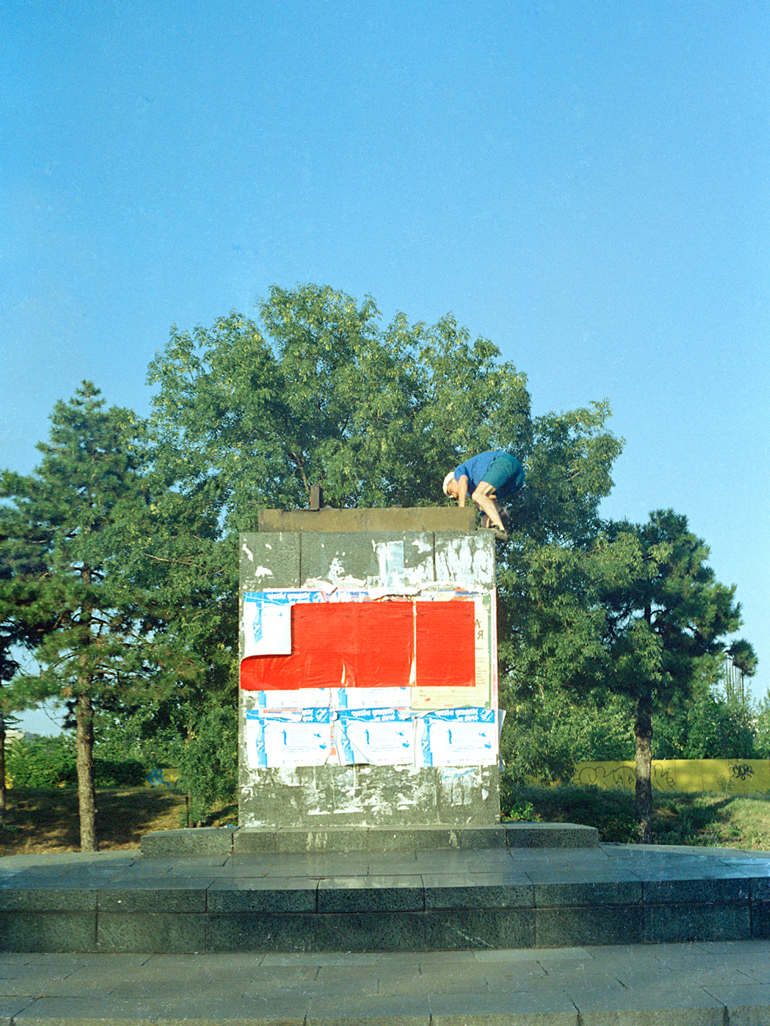 Hello Lenin, 2003
5 c-prints, each 40 x 30 cm, video 2.15 min. "Hello Lenin" is a documentation of a performance Kamen Stoyanov did in his hometown Rousse in Bulgaria in the summer of 2003. It shows him climbing on an empty pedestal, whose statue had been removed 13 years ago. Formerly, the statue of Lenin was placed here. Stoyanov wanted to demonstrate how the statue can be removed, but not an ideology. The empty pedestal indicates an indifine ideological change. Video
Hello Lenin, 2003
5 c-prints, each 40 x 30 cm, video 2.15 min. "Hello Lenin" is a documentation of a performance Kamen Stoyanov did in his hometown Rousse in Bulgaria in the summer of 2003. It shows him climbing on an empty pedestal, whose statue had been removed 13 years ago. Formerly, the statue of Lenin was placed here. Stoyanov wanted to demonstrate how the statue can be removed, but not an ideology. The empty pedestal indicates an indifine ideological change. Video
-
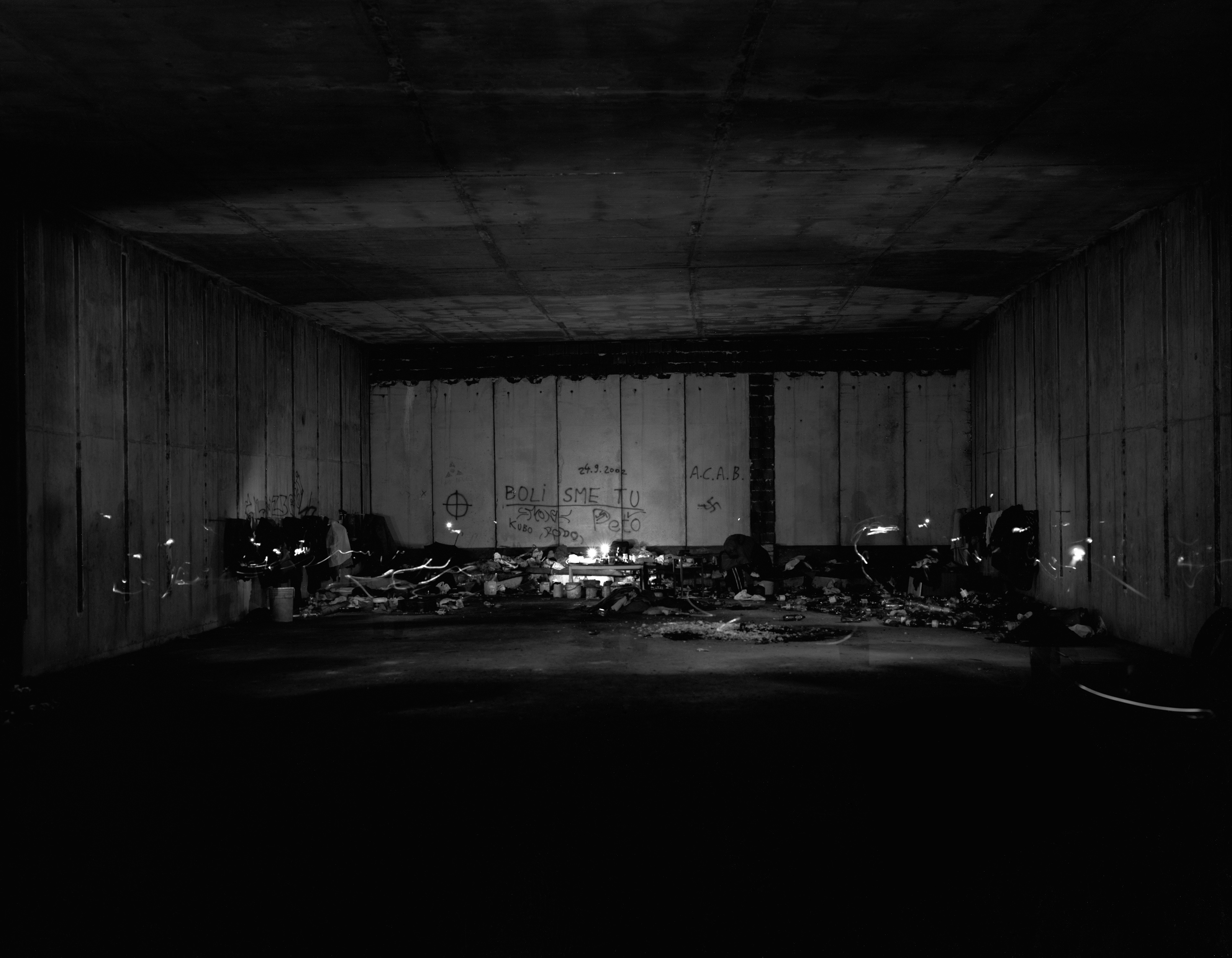 Subway Yard Bratislava, 2007
two digital prints on Baryt, 93x120 cm, handwritten text
Subway Yard Bratislava, 2007
two digital prints on Baryt, 93x120 cm, handwritten text
"I am traveling with a friend of mine who is a photographer from Vienna to Bratislava. He knows there is a tunnel in the periphery of the city in the neighbourhood Peterzhlaka. The tunnel is approximate 200 meter long and it is a blind tunnel. At the begin of the tunnel there is water and garbage. My friend is interested in it and takes pictures. I am filming him with the video camera. If one crosses the 50 meters of water there begins a dry part, but after another 20 meters there is total darkness. I am curios what is there? Next week we decide to go again. Same actions. This time we have rubber boots and we can walk easily in the cold water. I go deep into the darkness, but than I hear strange sounds. I get scared and turn back very fast. I think if I only had have a light. Next time I will be prepared. We come again. This time with a light and we move slowly into the tunnel. We both hear noises as if some thing is moving. We turn and I decide to take the pictures from the distance. My first wish was to take a photo from the wall at the end of the tunnel. I am arranging the large format camera and suddenly a man emerges from the darkness. I begin to talk with him. I am trying to communicate with him in Slovak using my knowledge in Russian and Serbian. It works. His name is Dushan. The meaning of the name in Slavonik is soul. The „soul“ of the tunnel. This is his territories he said. He tells us he observed us from the darkness and he knows us from the last three weeks. It is not the first time that people come here to take pictures. Even there have been shots for a gangster movie. He tells me that the tunnel is built for the Subway which construction stopped with the end of the socialist time. Nowadays there are prostitutes and immigrants around and the police hides with the car in the tunnel in order to catch them. I am asking him to allow me to take pictures from the wall at the end of the tunnel and we go there. He lives there and he has some clothes, candles and a radio on.“ -
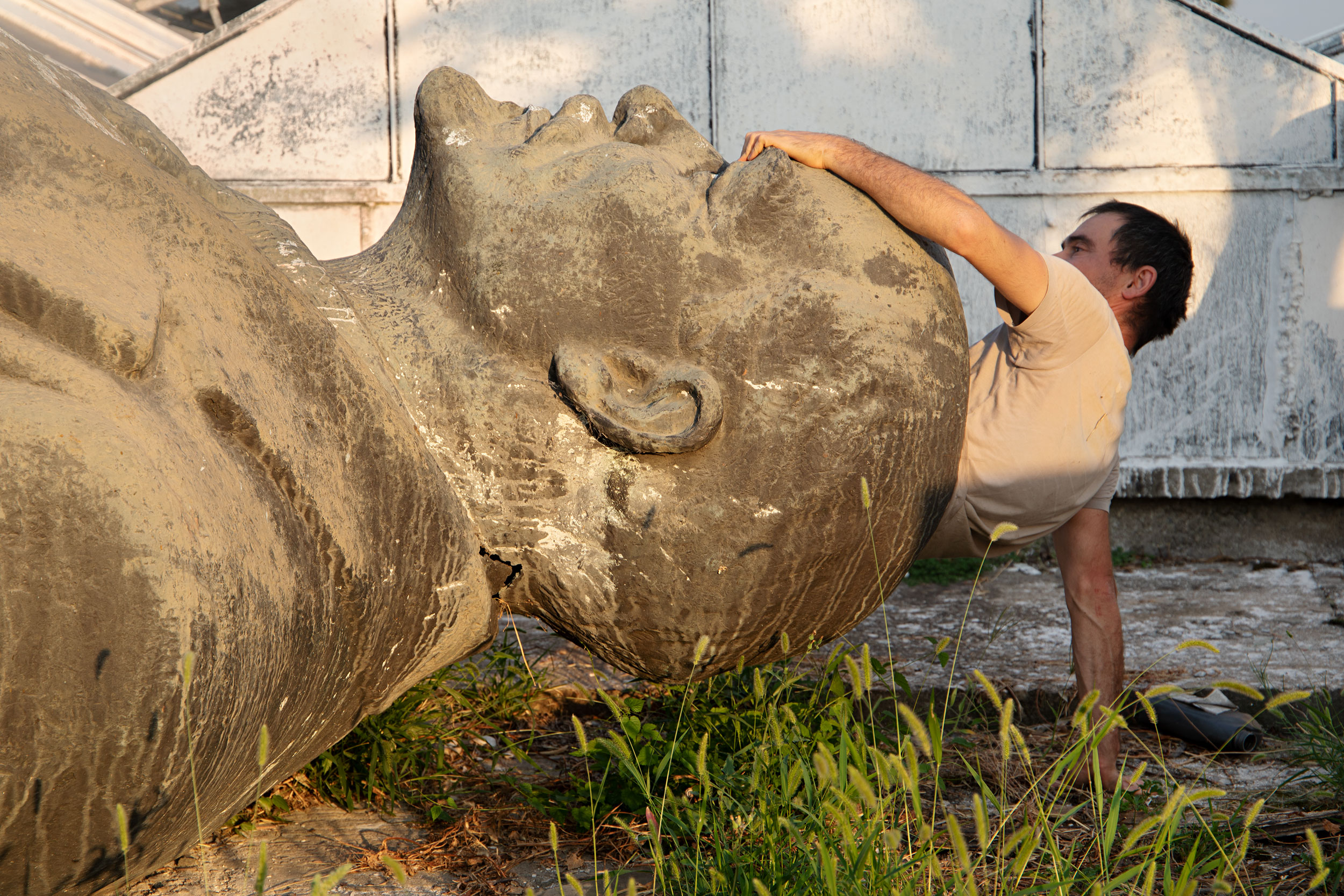 Inside Lenin´s Head, 2019
4 photos, each 40x60cm
Inside Lenin´s Head, 2019
4 photos, each 40x60cm
After standing on Lenin´s former pedestal for the work Hello Lenin, in 2003, I visited the statue at its current place. As the people in my hometown in Russe, Bulgaria, don´t know, where to put these Communist monuments, Lenin lies down in the area of one of the City´s plant nurseries. -
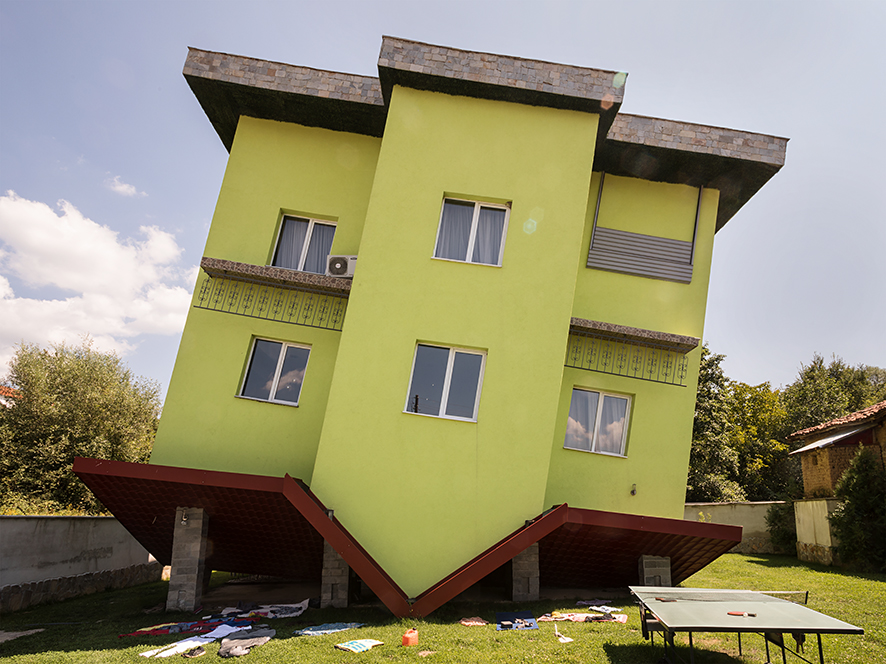 Phantasy is more important (The Upsidedown House), 2018
Diasec
Phantasy is more important (The Upsidedown House), 2018
Diasec
100 x 133 cm
edition of 5+1AP -
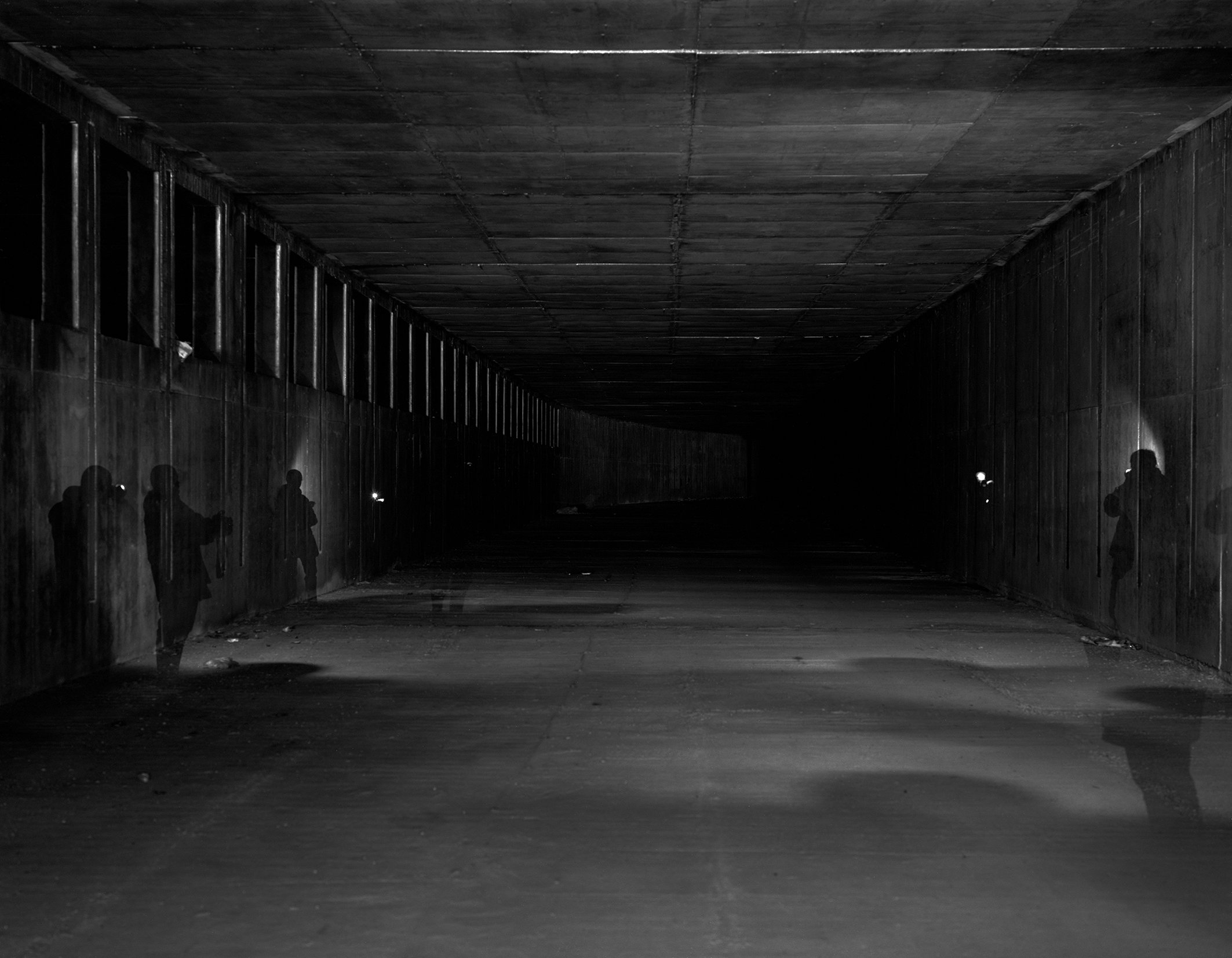 Subway Yard Bratislava, 2007
two digital prints on baryt,
Subway Yard Bratislava, 2007
two digital prints on baryt,
handwritten text
93 x 120 cm
edition 3/5+1AP -
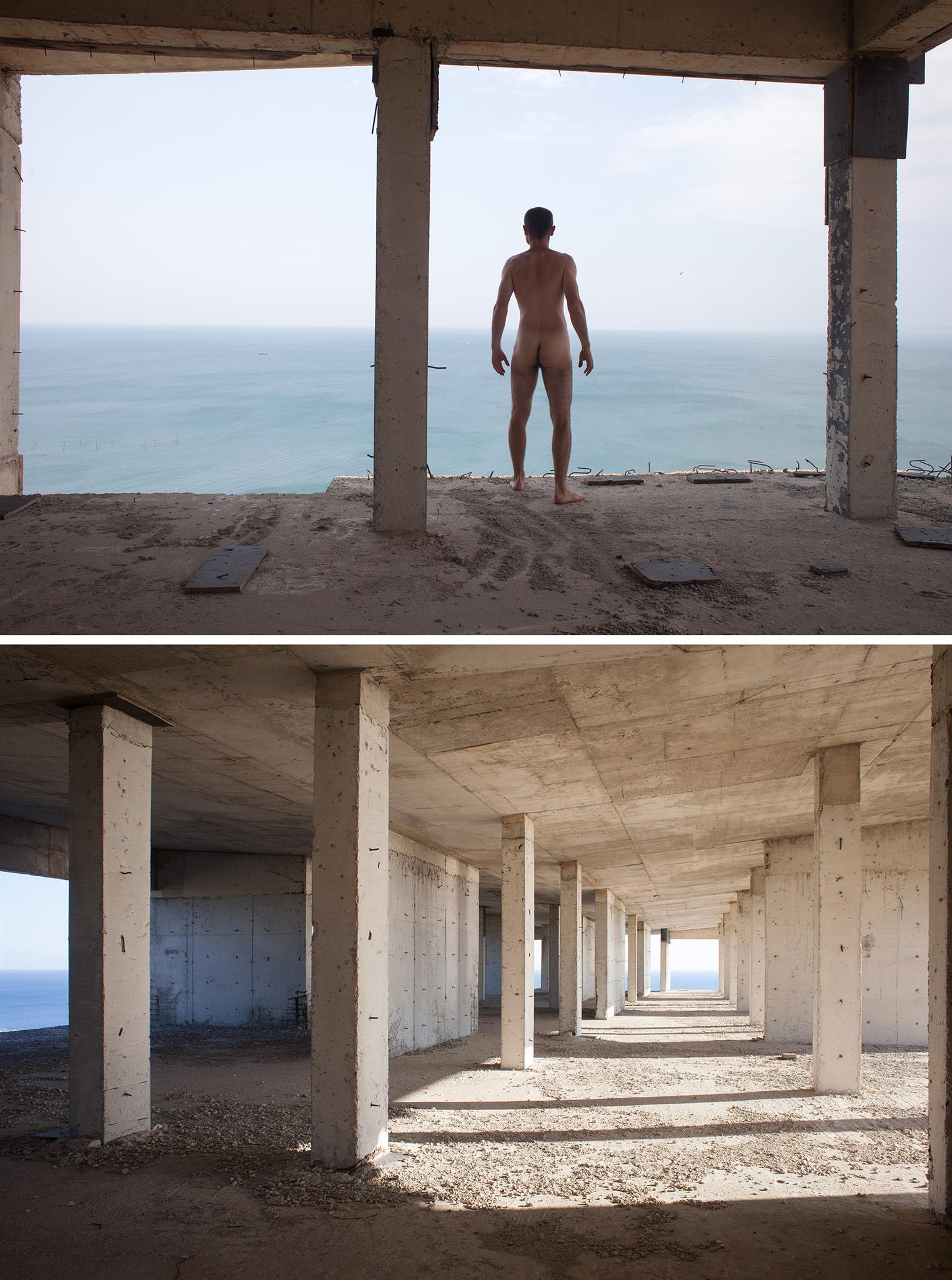 At Hotel 1000 Columns, 2015
two photographies
At Hotel 1000 Columns, 2015
two photographies
each 80 x 120 cm
edition 1/5+1AP -
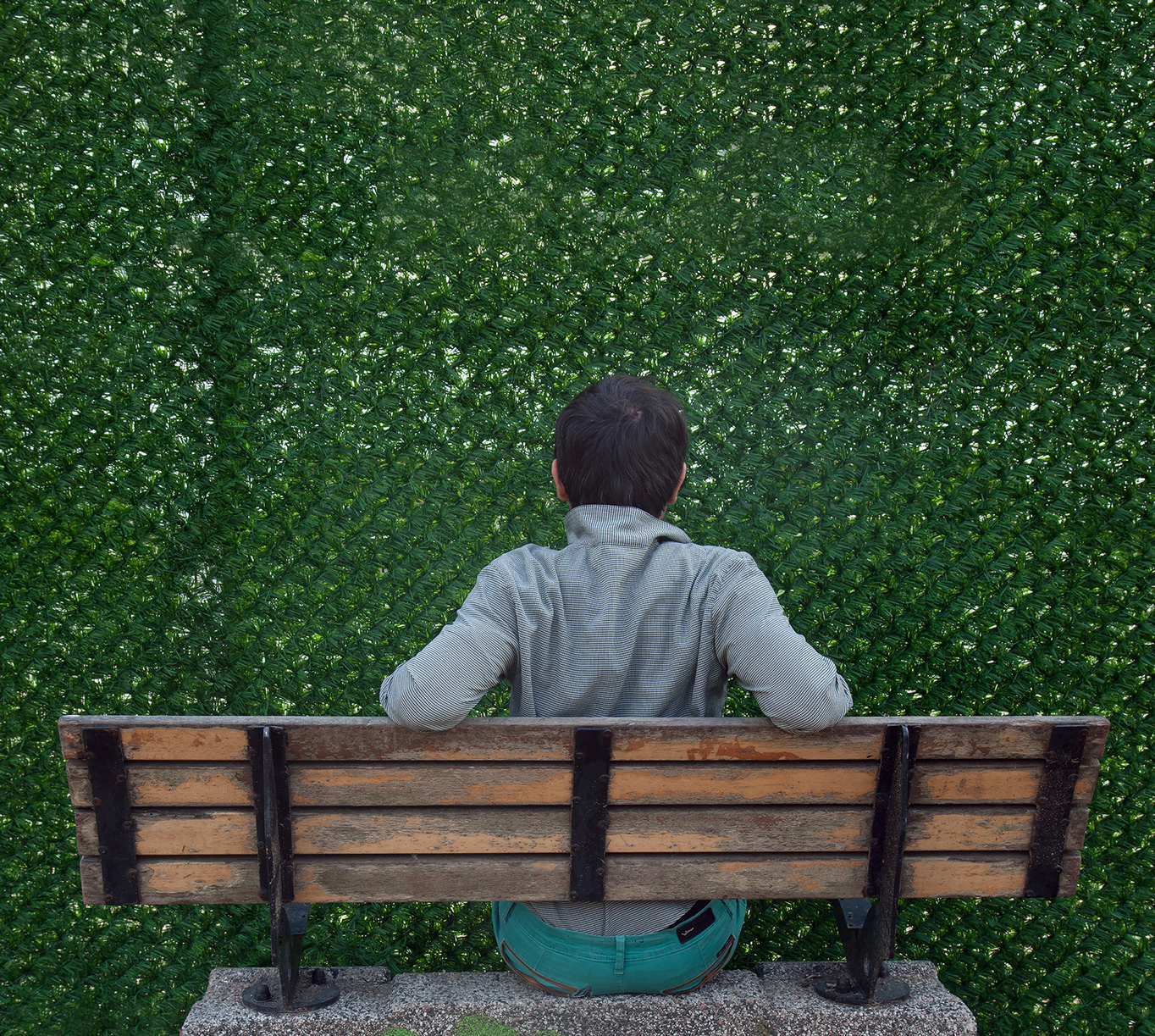 Looking Through the Fence, 2017
photo print on textile
Looking Through the Fence, 2017
photo print on textile
305 x 340 cm
edition 3+2AP
Video
-
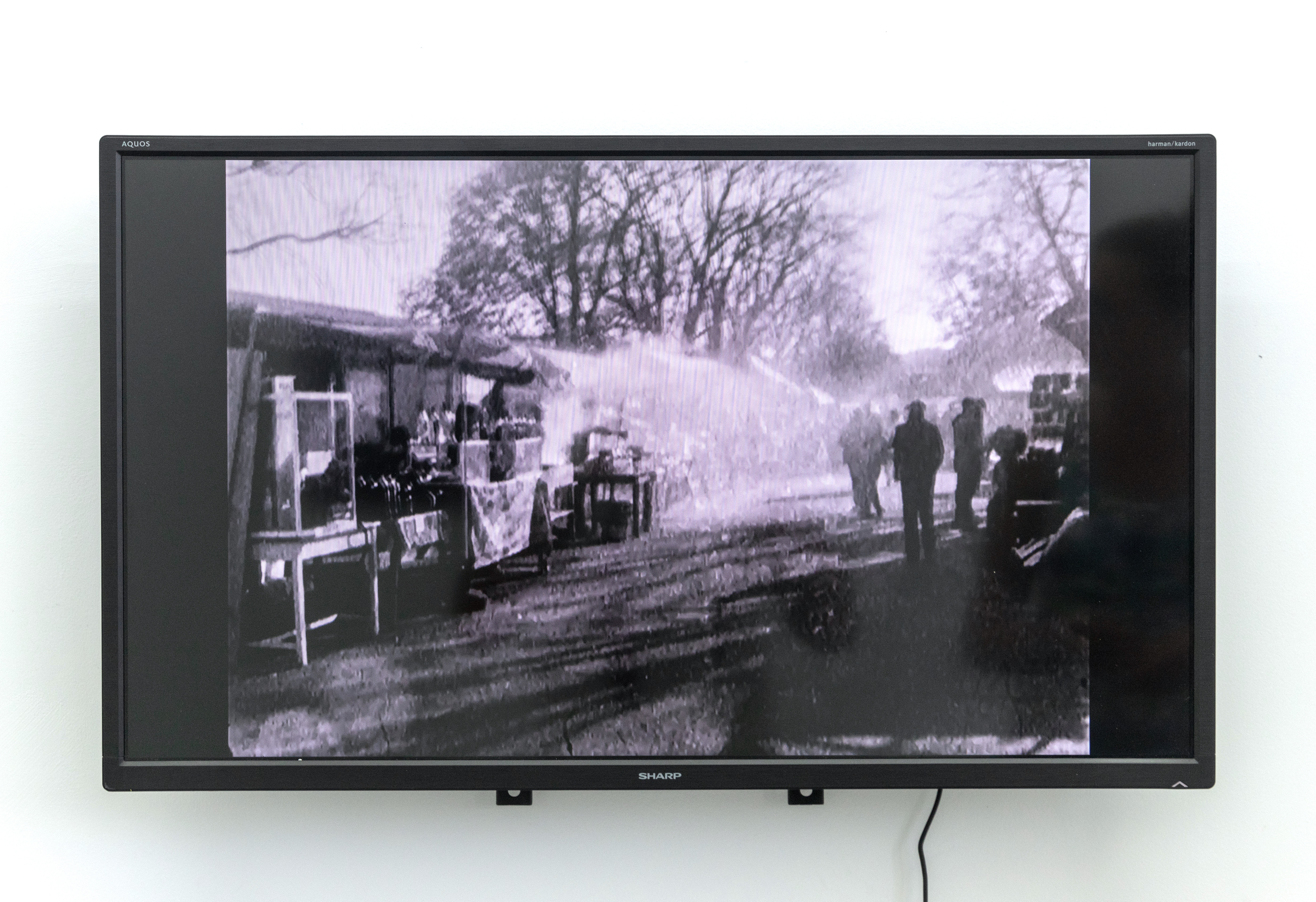 The City of the People, 2024
digitalized 16 mm film, length 3.50 min.
The City of the People, 2024
digitalized 16 mm film, length 3.50 min.
black and white, silent
Edition of 5 -
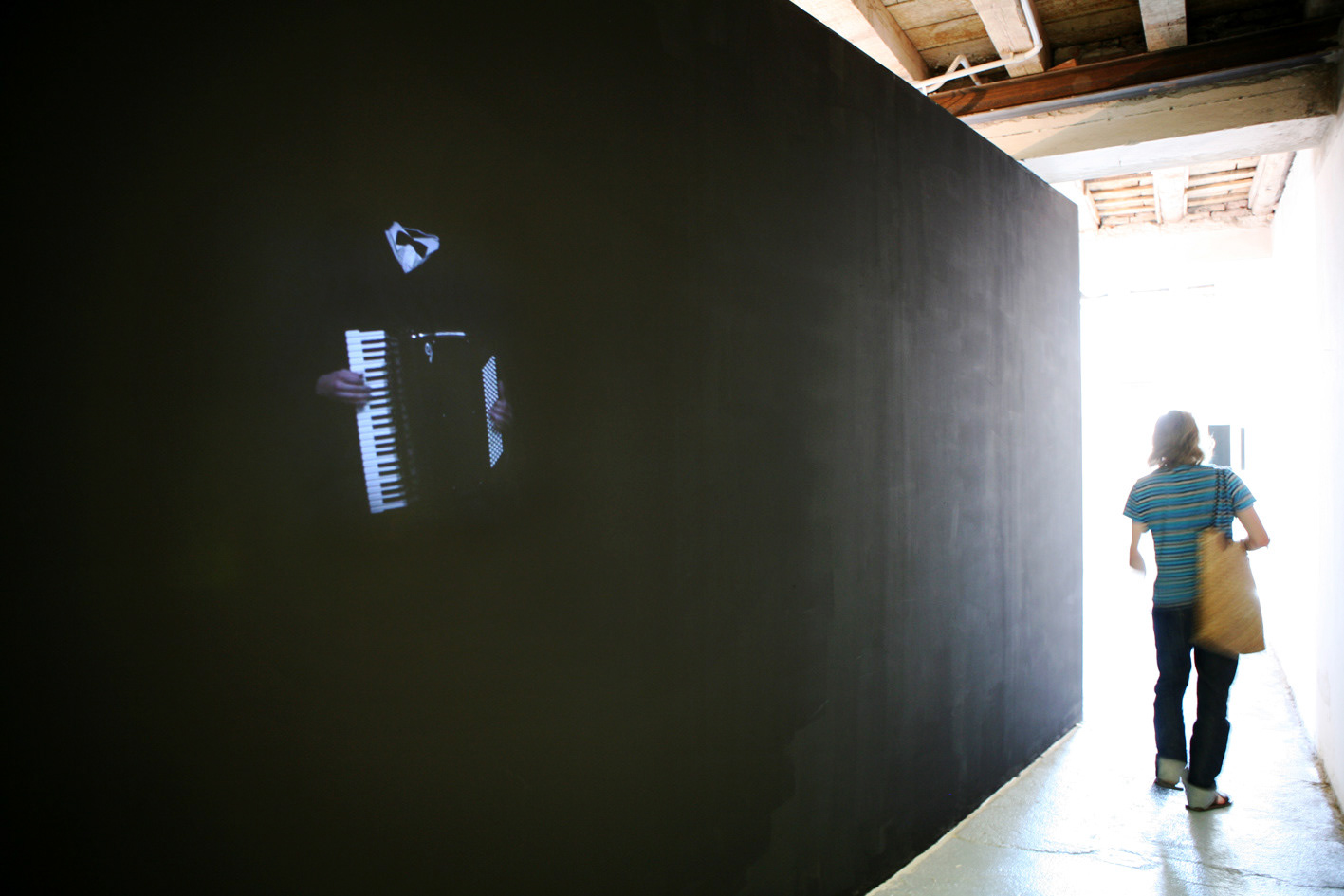 Phantom, 2007
video, 12.28 min Kamen Stoyanov´s works revolve around the social realities our time: migration, uses of public space, urban life. For his photographes and videos Stoyanov selects emotionally charged imagery full of narrative allusions. On a black wall we see only a section of a shirt with a fly, hands and an accordion. Just as fleeting as the sounds. like a memory that is vanishing, a faceless person plays here. In this reduced video the fate of all street musicians seems captured in a black space, confirming the exchangeability of all streets.
Phantom, 2007
video, 12.28 min Kamen Stoyanov´s works revolve around the social realities our time: migration, uses of public space, urban life. For his photographes and videos Stoyanov selects emotionally charged imagery full of narrative allusions. On a black wall we see only a section of a shirt with a fly, hands and an accordion. Just as fleeting as the sounds. like a memory that is vanishing, a faceless person plays here. In this reduced video the fate of all street musicians seems captured in a black space, confirming the exchangeability of all streets.
-
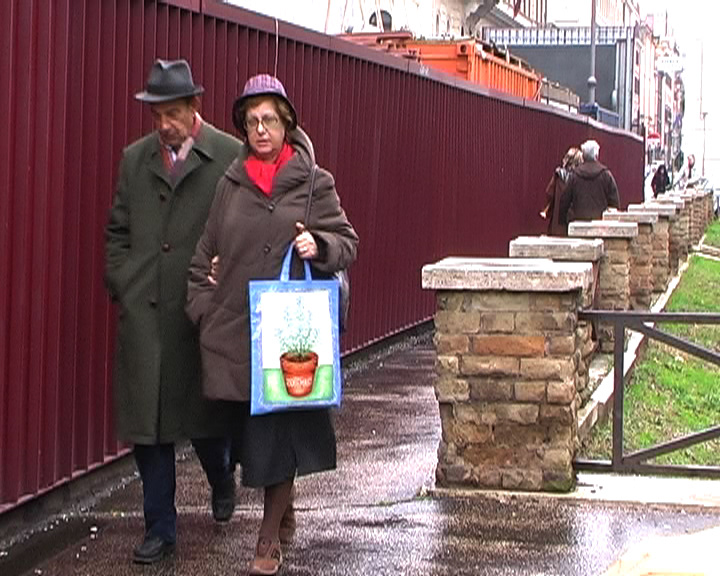 Roma Open Air Museum, 2006
video 6:30 min
Roma Open Air Museum, 2006
video 6:30 min
Roma Open Air Museum shows a man, who operates an open air museum in public space. Fausto Delle Chiaie represents the museum's director, curator as well as the staff. He sells the tickets and explains the exhibited artwork. It is in his interest to put the visitors' attention to the small things around which are normally overlooked. The opening hours are the usual: Tuesday till Sunday, 10am to 6pm.
Video -
 Lets go to Giurgiu, 2007
video, 14:57 min
Lets go to Giurgiu, 2007
video, 14:57 min
"Let’s Go to Giurgiu" is a documentary which captures the slow motion of travelling. On the occasion of Bulgaria’s and Romania’s entering the EU in 2007, the Bulgarian town Rousse and the Romanian Giurgiu organized a bus tour over one of the only bridges linking the two countries. People from the cities and the neighboring villages gathered to celebrate the moment of joy that made them pass as European citizens, first to Giurgiu and then to the near Bucharest. The video shows scenes of this bus journey from January 2007 as well as the trips to the cities, which the artist later also recorded on local TV. Although not shown on official European media, Stoyanov’s video documents the effects globalization has on the meanwhile most Eastern part of a territory with an ever-growing reach. Text: Walter Seidl Video -
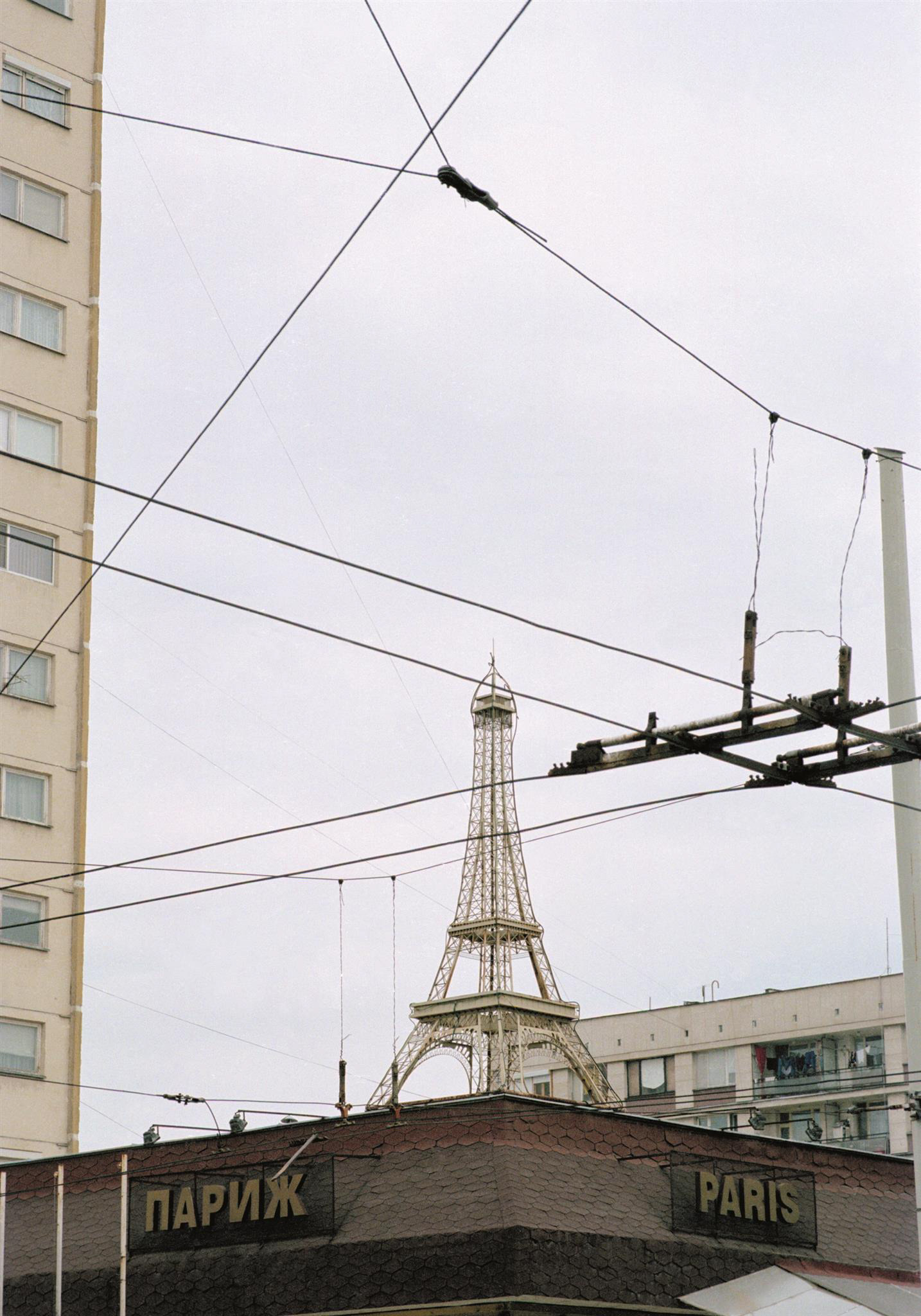 The small Eiffel tower meets the big one, 2007
Two cannal videos, photos
The small Eiffel tower meets the big one, 2007
Two cannal videos, photos
During the action, I stood on the Trocadero terrace, the most popular spot for tourists to take pho-tos in front of the Eiffel Tower. I held up a photo showing a small Eiffel Tower on the roof of a Bul-garian restaurant. I took this photo in 2005 in my hometown Rousse, Bulgaria. A few African-born Eiffel Tower souvenir sellers walked around me. I was photographed by some tourists while others paid no attention. The action lasted about 15 minutes. -
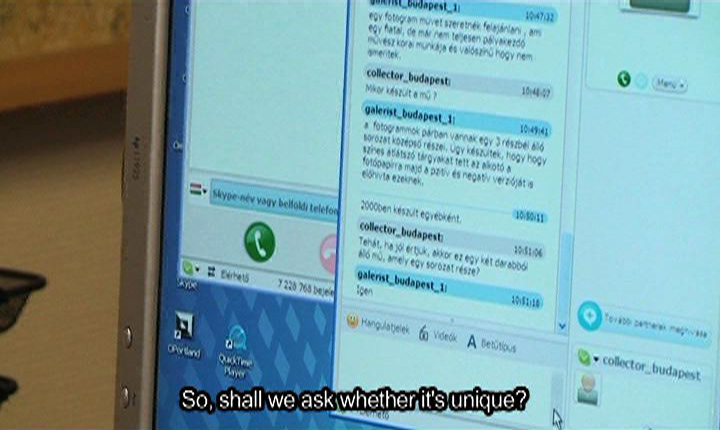 Which one should I buy?, 2008
video, two printed and framed conversations
Which one should I buy?, 2008
video, two printed and framed conversations
The video work Which one should I buy? models the process that takes place between collectors and gallerists when a work of art is purchased. Throughout the experiment two gallerists, Gábor Kozák and Margit Valkó, compete against each other in making the collectors, Zsolt Somlói and Katalin Spengler, buy the piece offered by them. The participants, however, remain incognito to one another, and even the artworks up for sale remain unseen by the collectors. Communication is conducted through chat, using only written verbal communication in a dialogue about visual phenomena. But is a work of art exclusively visual? The collectors‘ prying questions and the strategies used by the gallerists tell a lot about the principles governing the art market. Meanwhile,visuality is successfully - or unsuccessfully - translated into linguistic structures before our eyes. The exhibition presents a video documenting the two bargainings and the encounter/exposure, as well as a „photograph“ representing the text of the chat talks. Tijana Stepanovic -
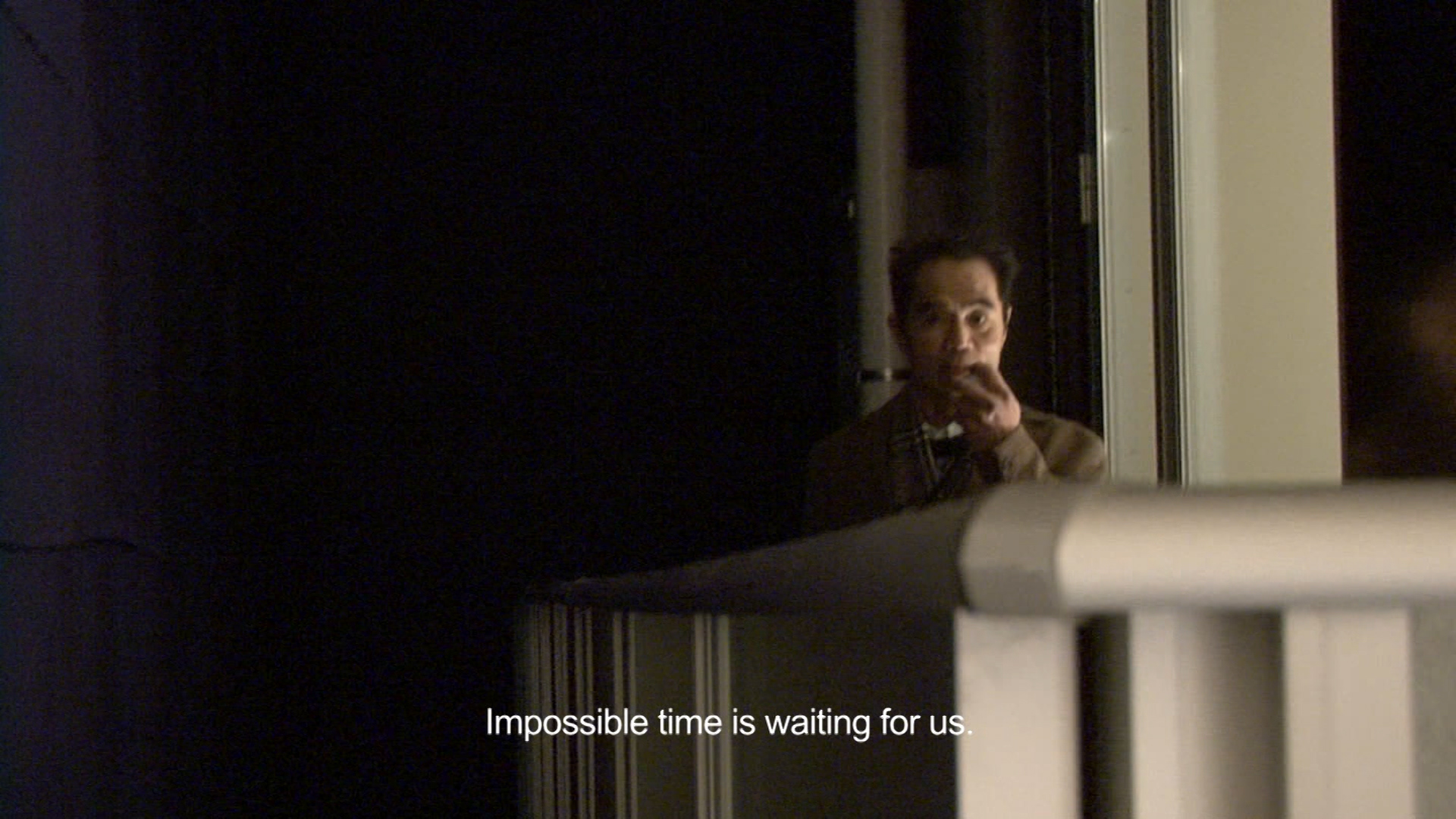 Impossible Message, 2010-2012
video 17:50min, text and drawing on the wall
Impossible Message, 2010-2012
video 17:50min, text and drawing on the wall
Seiji Inamine has been speaking his messages every week for the last ten years in the city of Nagoya. I was the first one who dared to talk to him. I asked him to perform his speech on a "stage“- scale wodeled balcony in one of the exhibition venues of the Aichi Triennial. He agreed under the condition to show the video in Europe. The director of the Triennial was scared of Inamine and of his presence at the exhibition therefore he and the chief curators met him in a coffe shop before the shooting. It was unusual expirience also for me that they were present during the shooting hiding themselves behind the corner in the cold space. -
 Be scared or be square, 2012
Neon sign, video 4:50min, four photographs, each 47x70cm, 2012
Be scared or be square, 2012
Neon sign, video 4:50min, four photographs, each 47x70cm, 2012
Be scared or be square is a piece in which I transformed an abandoned place in Beverly hills for about a half-hour.
I turned a hand written sentence on a paper A5 , which I found in a cabin part of the abandoned building, into a white neon sign.
The building was used before as a parking lot. Afterward I installed the neon sign on the cabin, switched it on using a car battery and walked around the cabin in a squere for about half-hour. The police had arrived just after the action had finished and I was taking the neon sign into the car. Video -
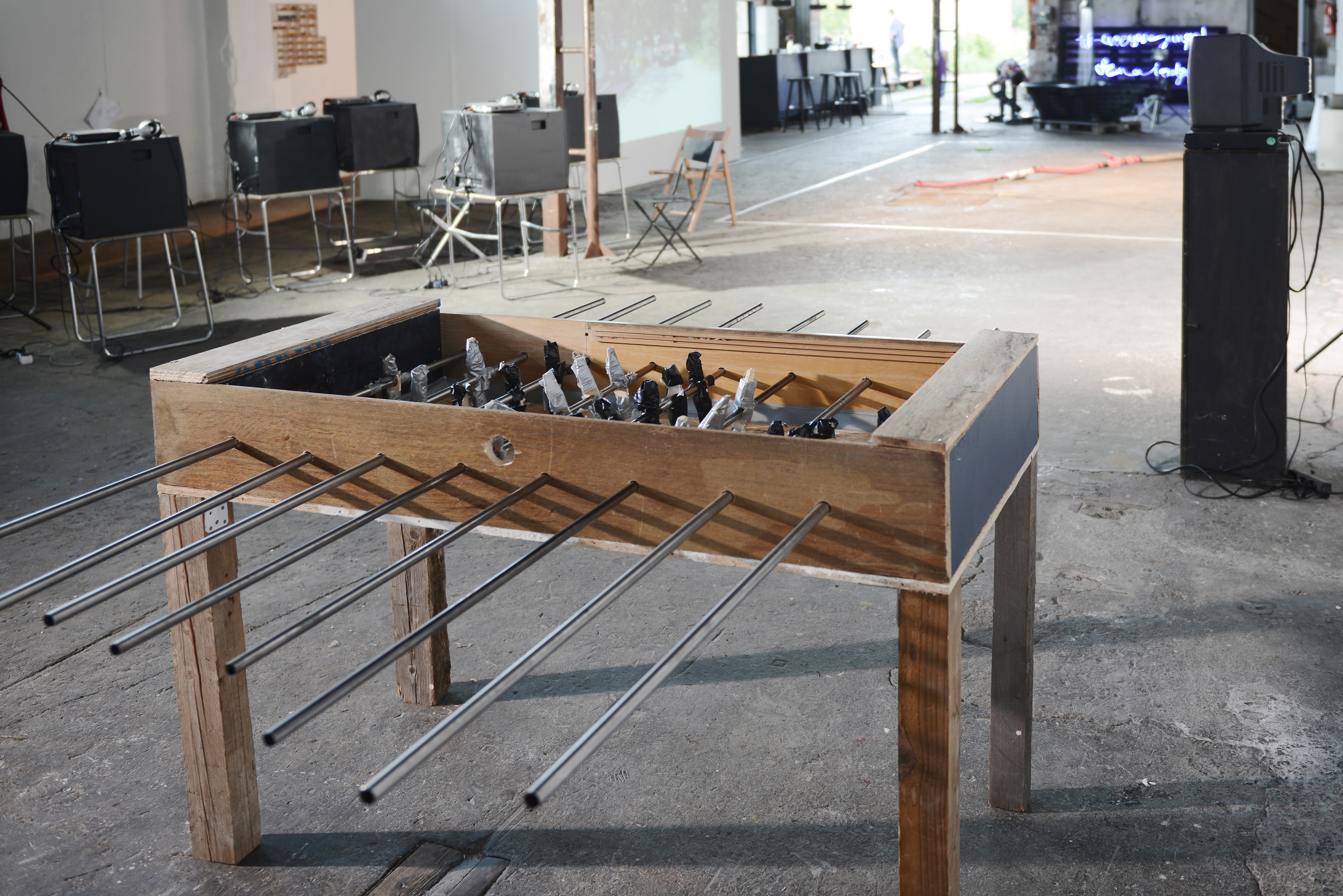 Learning from Angel, 2014
installation, wooden self-made football table, photography, video Video
Learning from Angel, 2014
installation, wooden self-made football table, photography, video Video
-
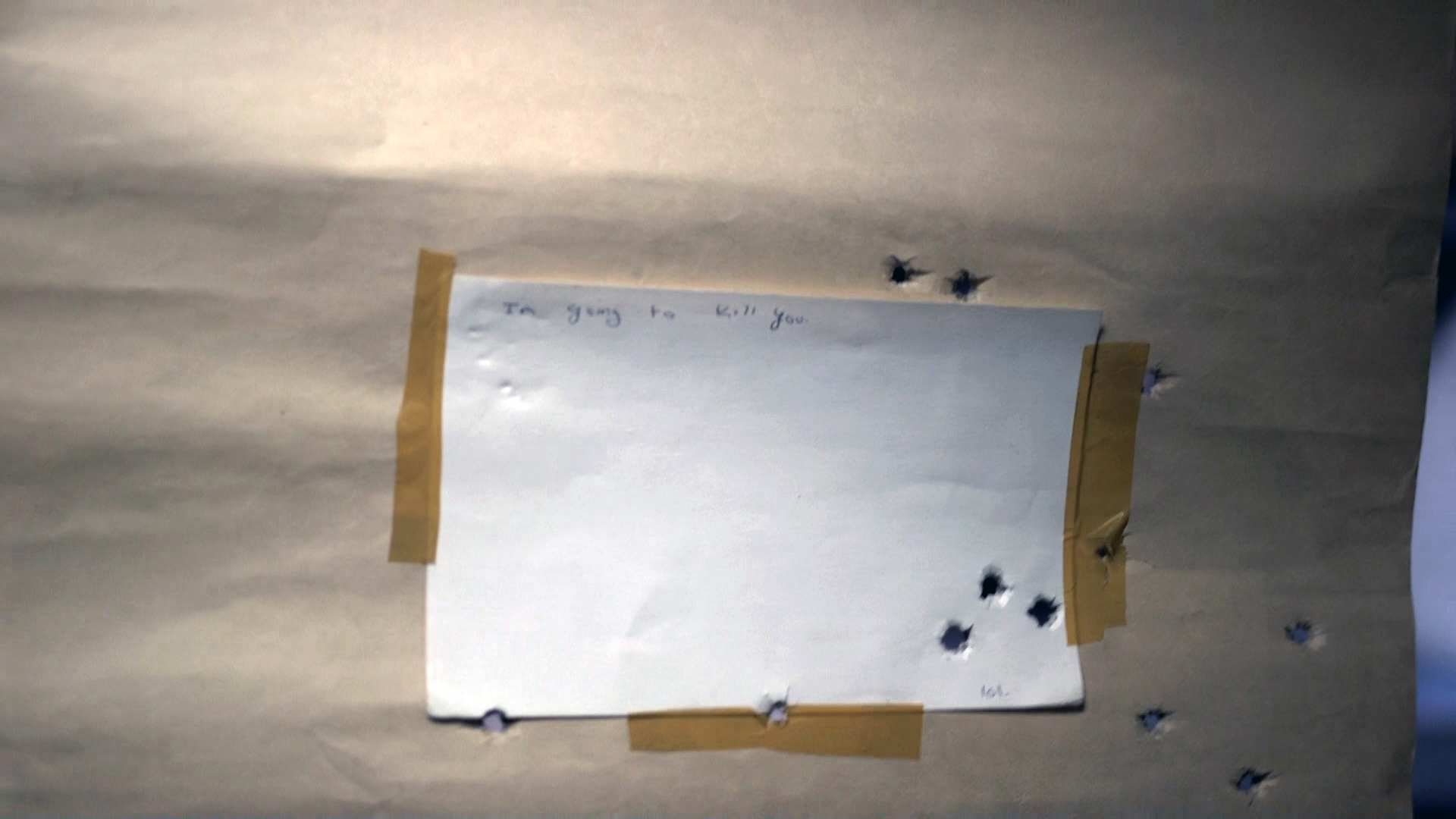 I am going to kill you, 2019
installation. video, 4:00 min, paper framed, bullet
I am going to kill you, 2019
installation. video, 4:00 min, paper framed, bullet
Is it possible to kill a threat? Can a policy of violence solve problems of violence? In the beginning of the video the artist goes backwards and forwards on an abounded parking lot in Los Angeles. This represents a movement from the present to the past and than back to the present. The artists: “Five years ago, I went to this abounded parking lot at West Olympic Blvd. in Beverly Hills. I found this sheet of paper in the watch cabin. I thought it was scary, but interesting. I took it, although I did not know what to do with it. Now I know what to do with it.“ In the second part of the video is placed in an indoor shooting range in Downtown Los Angeles. The artists literally tries to shoot, to kill the message on the sheet - “I am going to kill you”. -
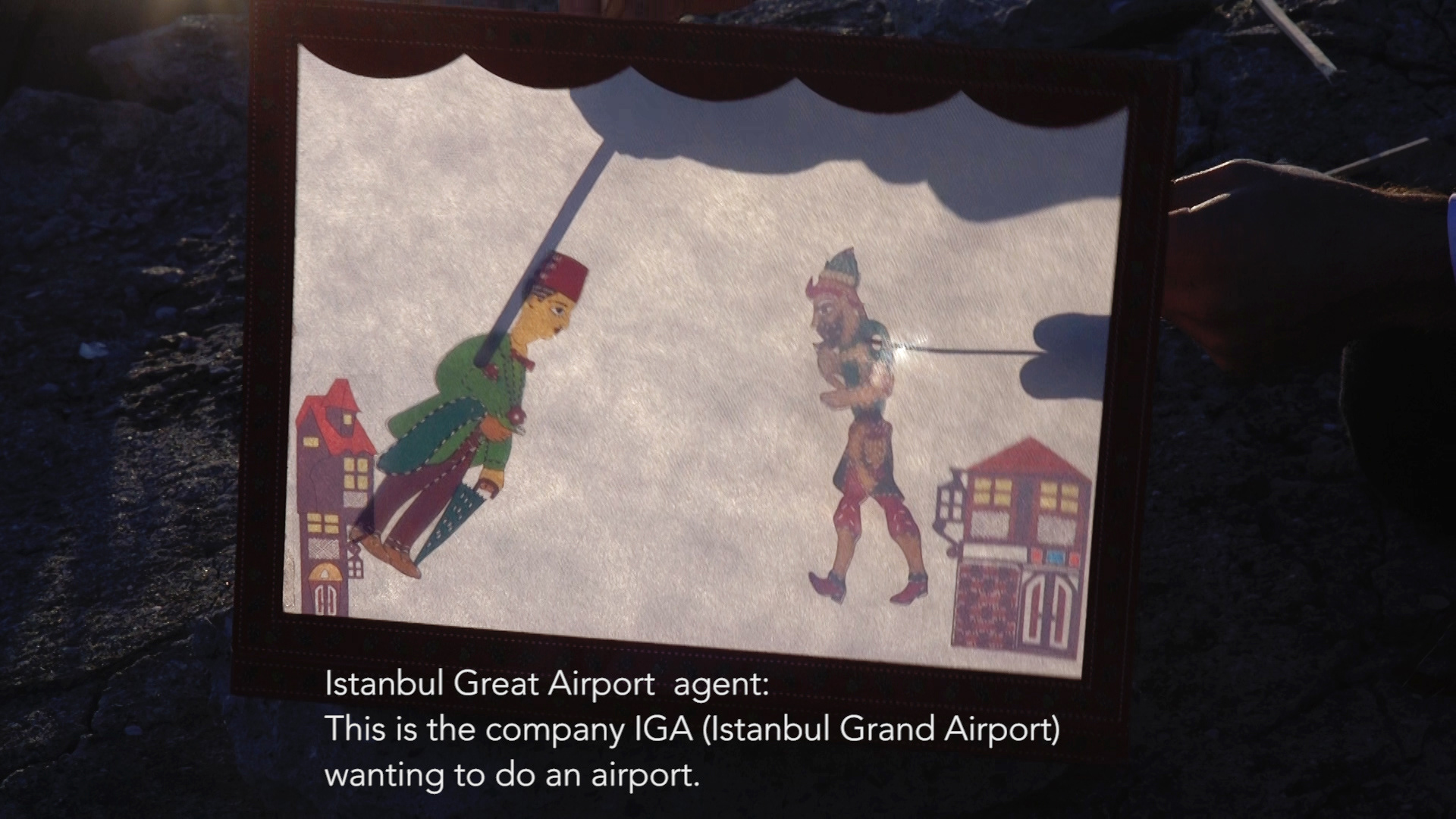 New Istanbul Dream, 2017
short documentary,
New Istanbul Dream, 2017
short documentary,
experimental movie
28 min
edition 5+1АР New Istanbul Dream investigates the construction side and process of the third Istanbul Airport situated northwest of Istanbul, on the Black sea. This is happening in different ways. The film shows the changing of the environment and the destruction of nature through the construction works for realizing the Megadream of current Turkish power - the biggest airport in the world. This is the basic conflict in the film. This conflict is embodied by a performative layer based on Karagöz - the traditional Ottoman shadow theater. This layer opens a space of an imaginary and activist movement and searches literary and metaphorically for a way out. The movie ends with a musical performance of the adapted and especially changed song Karagözlum by the Istanbul band Zoomk Ru Tu. Watch the movie trailer here -
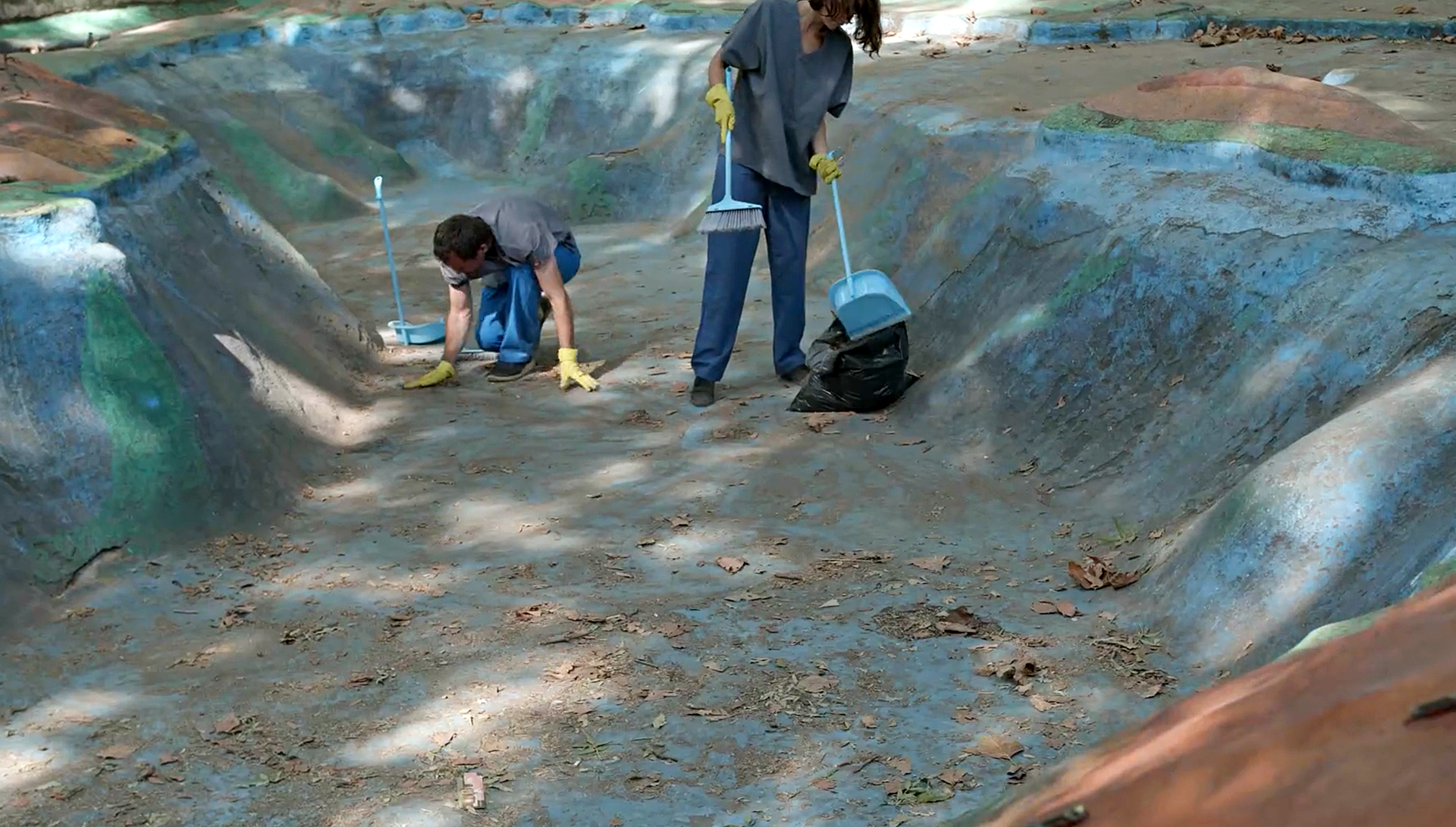 Cleaning the Black Sea, 2019
With Katharina Swoboda
Cleaning the Black Sea, 2019
With Katharina Swoboda
video, hd, 2 min, color The video was shot in “Morske Gradina” (“sea garden”) in Varna, Bulgaria. There, the artists encountered a modell of the Black Sea. Because the model is not cleaned regulary, natural waste and waste from the park visitors end up in the bassin. It is not allowed to enter the model, so people are not allowed to get in, but only to look at. In a performative action, the artists clean the model and therefor hint to the “secret“ space of the deep sea, where all the actual waste from the countries surrounding the Black Sea end up. Also the model shows these cities: Varna, Burgas, Sewastopol, etc. Images of the cleaning action are mixed with footage shot in the aquarium, which is just besides the model. -
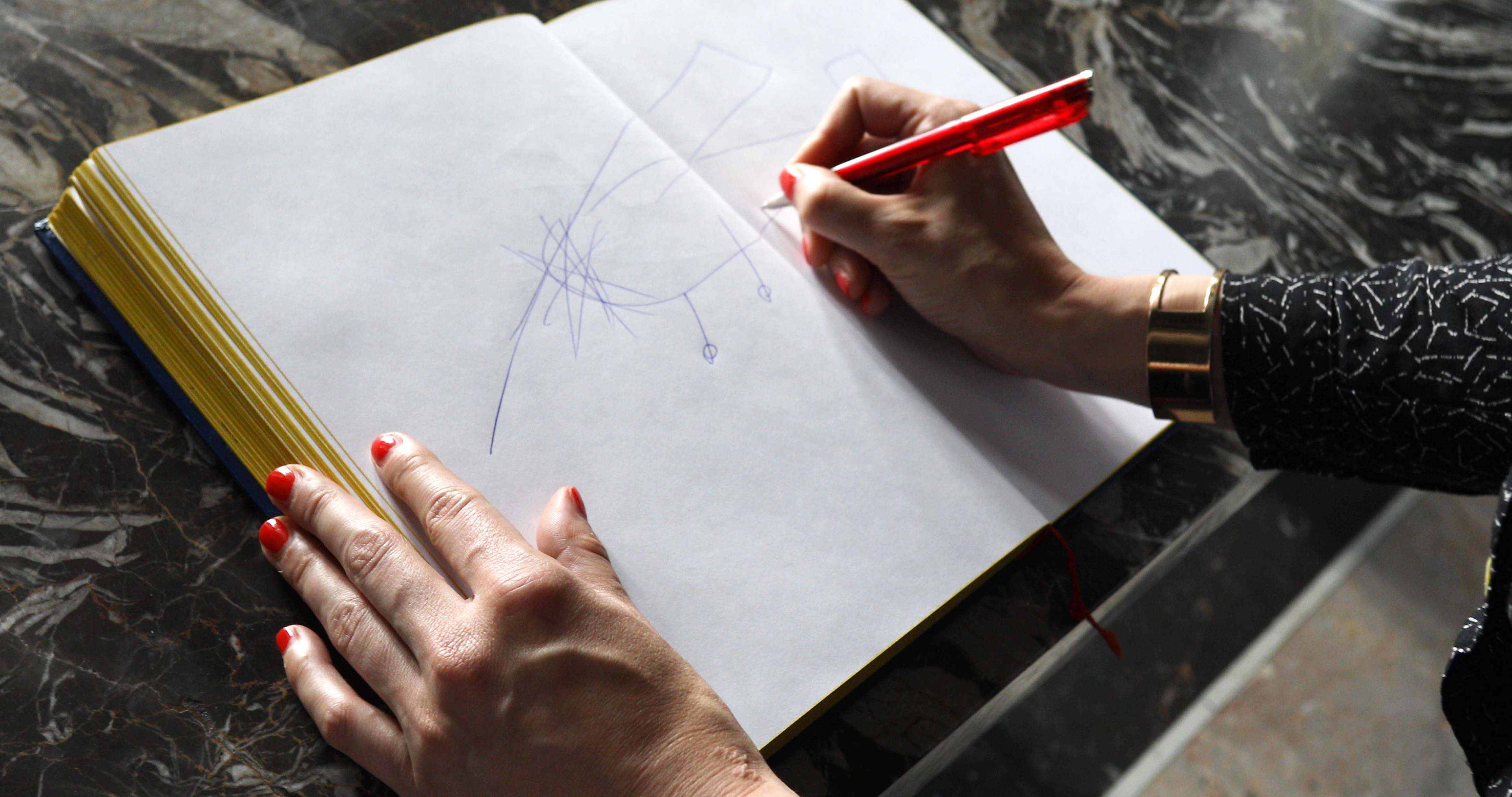 Flying Library, 2018
hd video, 6 min
Flying Library, 2018
hd video, 6 min
Two libraries are merged in a cinematic way: the City Library in Vienna and the Slovenian National Library in Ljubljana. The Slovenian National Library is considered one of the most important buildings by the architect Jože Plečnik, a student of Otto Wagner. It was finished in 1941. The building has the shape of a massive rectangle, symbolizing the importance of knowledge as a “foundation” for life. The building of the main City Library in Vienna, was built by architect Ernst Mayr in 2002. It is an extended rectangle, which is connected to the subway station by lift facilities and stairs. Mayr derived the dimension of the structure of the library and the facade panels from Otto Wagner‘s system of measurements, which he used for the previous city train station close by. In the video, the main protagonist, a woman, climbs the stairs of these two buildings. In the library in Vienna she encounters other people, forming a chain where they take books to the shelf. This story is a reference to Slovenian National library, where books where actually evacuated during World War II. The woman stands in the reading room in Ljubljana, gazing around, and so does the spectator: books, chairs, history is stored in this room. Another accident in Ljubljana happened towards the end of WW2, when a German airplane crashed on the roof of the library. This project was realized in the framework of Archipelago, Wiener Festwochen 2018. -
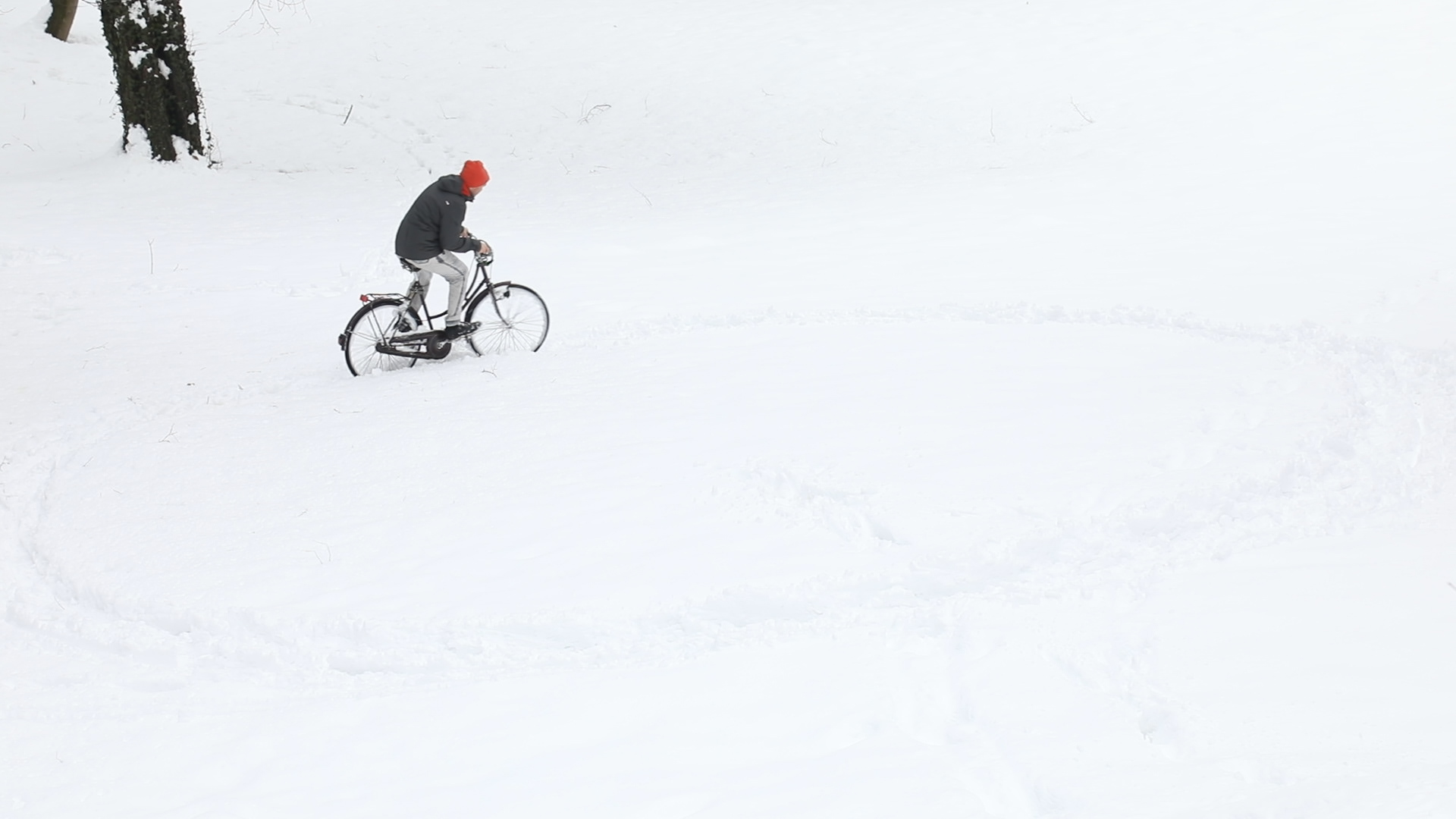 IN-VISIBLE, 2018
documentary-essayistic movie, 30 min
IN-VISIBLE, 2018
documentary-essayistic movie, 30 min
"IN-VISIBLE" shows not only an unusual view of the city of Ljubljana, but also explores the question of what lies behind the visible and the known. The filmmaker Kamen Stoyanov talks to the artist, author and geomancer Marko Pogačnik, who was part of the famous Slovenian artist group OHO.
His second encounter is Taubi, the initiator of the city tour „Invisible Ljubljana“ on which he takes the filmmaker Stoyanov with him. The unusual about this guided tour is that it is given by people with long experiences of homelessness. Today, Taubi lives in a residential house funded by the city. These places are taken up in the film and related to each other and to other places. The artist Pogačnik also dealt intensively with the hidden geography of the city with their energies and power points.
The cinematic communication between Pogačnik and Taubi is accompanied by the reflections of the filmmaker on the image and sound levels.
Trailer -
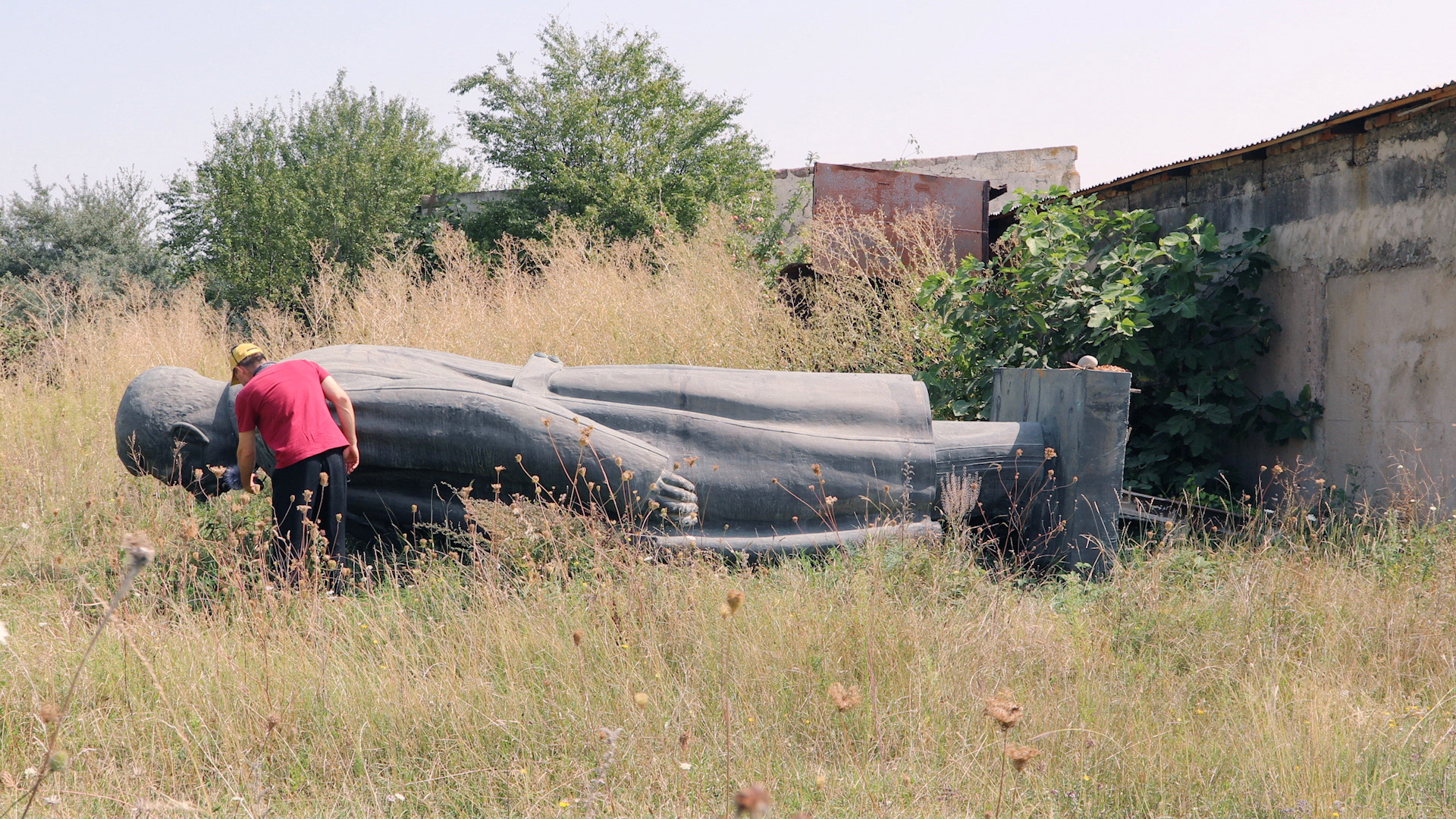 Formation of Shadows in Tbilisi, 2019
19 minutes
Formation of Shadows in Tbilisi, 2019
19 minutes
"Formation of Shadows in Tbilisi" deals with shadow theatre, which was already known in antiquity and which the Georgian theatre and film director Gela Kandelaki approached by reducing the use of puppets to the use of the hands of the actors only. The idea came about as a cost-efficient form of artistic expression in Soviet Georgia. During the period of the Soviet Union, shadow theatre was not recognized, and the director staged the first major performance in Paris in 1990. In Tbilisi Kamen Stoyanov meets Gela Kandelaki in the shadow theatre Budrugana Gagra. We witness a group rehearsal and a conversation with performers who came from the occupied territories of Abkhazia and South Ossetia.
Trailer -
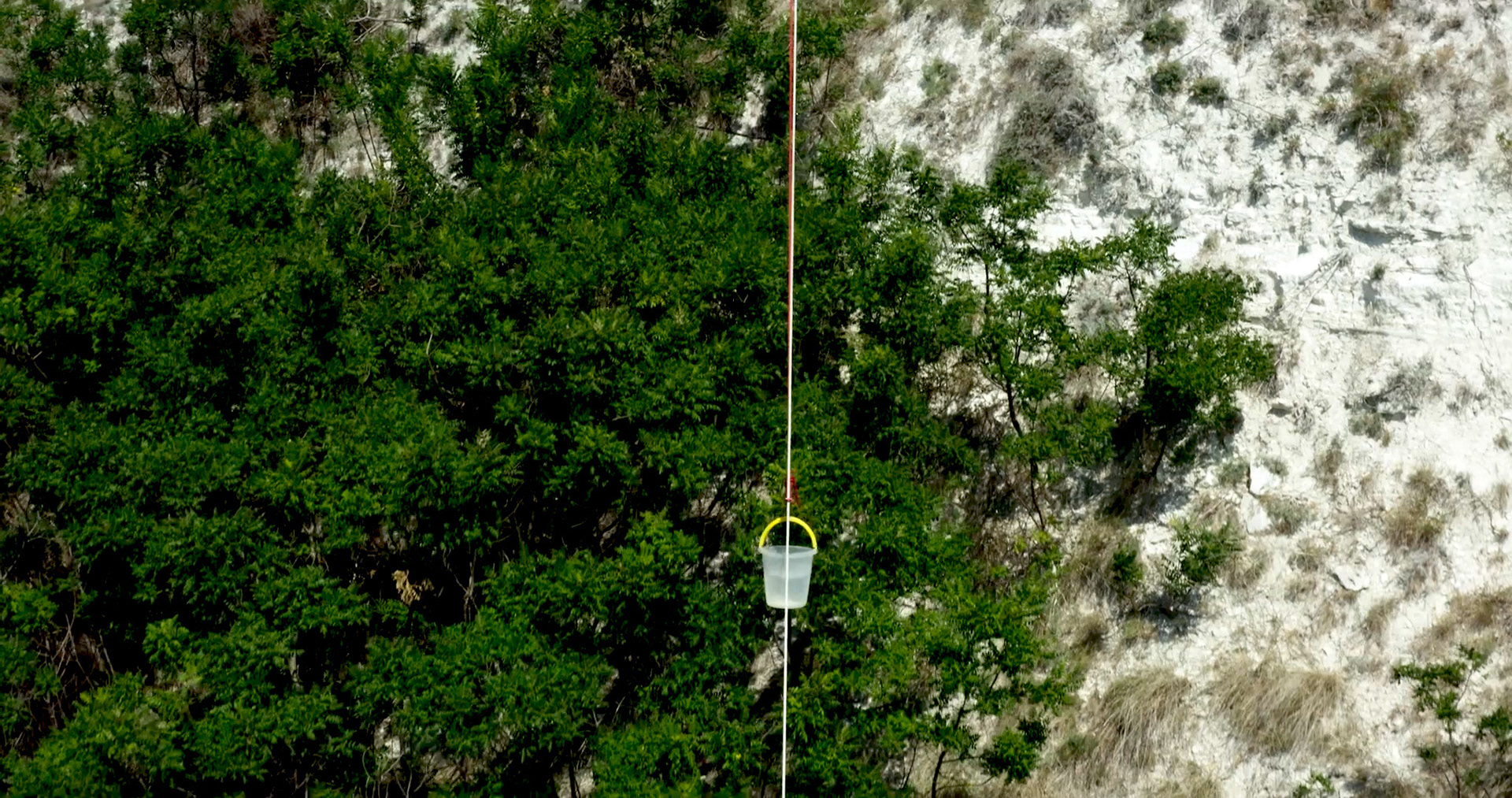 Up and Through, 2020
short movie, 4K, 10 minutes, 10:00 min, 2020
Up and Through, 2020
short movie, 4K, 10 minutes, 10:00 min, 2020
Best in Experimental at Dumbo Film Festival, NYC, USA, 2020
Produced and directed by Kamen Stoyanov
Cinematography - Marin Kafedjiski
Composer and sound design - Bojidar Spasso A journey of a bucket filled with sea water starts and continues up a steep cliff. On the cliff a man carries the bucket through an unfinished hotel. „Up And Through“ shows the post apocalyptic life of а wrecked hotel through its encounter with art.
Trailer -
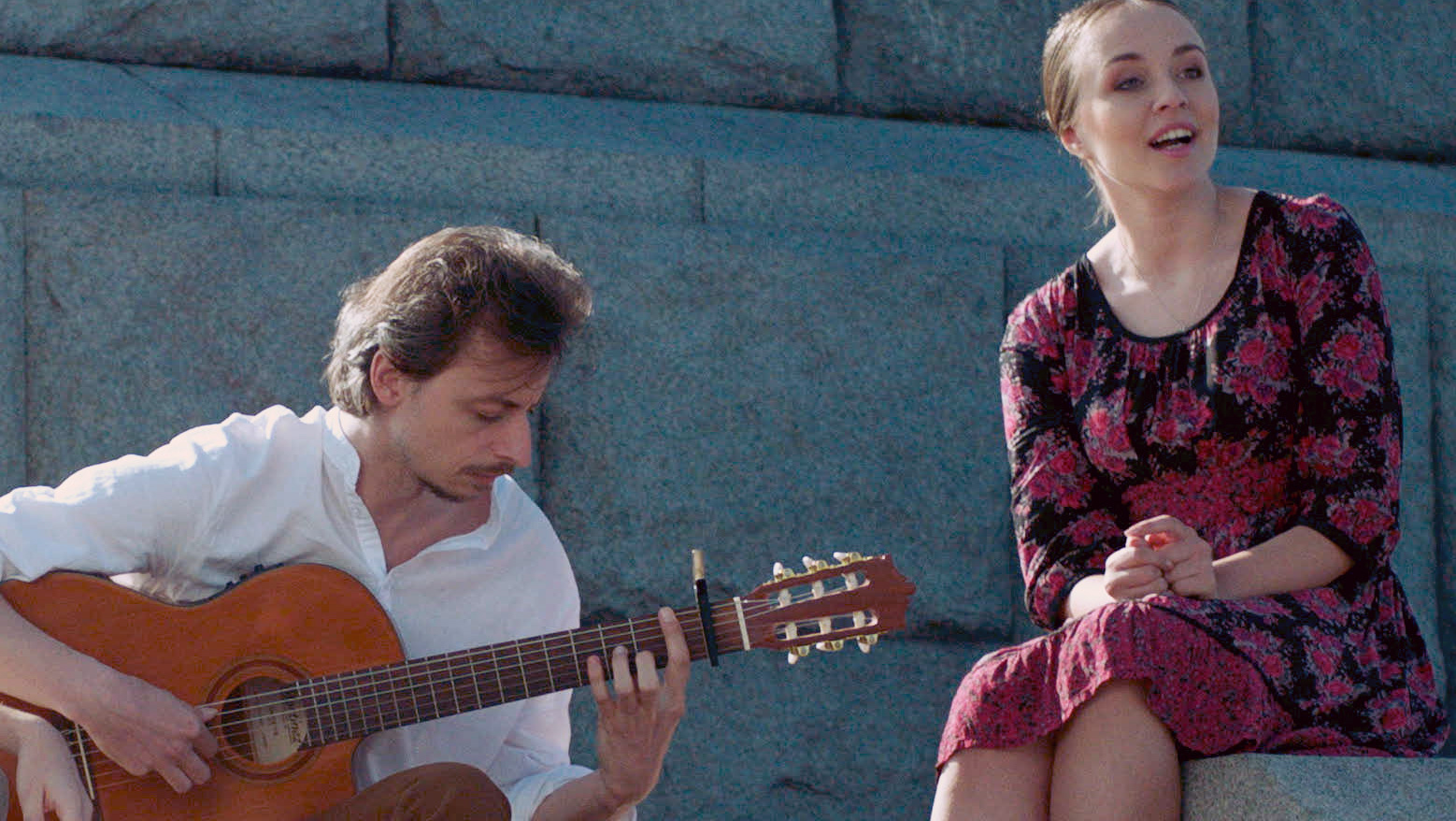 Alyosha and the Cat, 2020
Alyosha and the Cat
Alyosha and the Cat, 2020
Alyosha and the Cat
short film, 2K, colour, sound, 13min, 2020
Written and directed by Kamen Stoyanov and Katharina Swoboda
Cast: Vasil Duev, Katharina-Sara Huhn, Pavla Sivova, Peter Kerkelov
Cinematographer: Dian Zagorchinov
Sound: Sara Pinheiro
Composer: Margarita Spassova
While on holidays with his girlfriend in Plovdiv, the writer Vasil has a deadline for a text. Instead of writing, his girlfriend convinces him to go for a walk in the city. They end up at Alyosha hill, where they encounter Russian tourists who bring flowers to the Alyosha monument.
Vasil and Katharina get in an emotional discussion with the Russian tourists through the medium of the song. Russian girl sings the Russian song „Alyosha“ to them. Vasil and his girlfriend respond with a new song, „The Aleksey Skurlatov“ song, through which they tell an unknown story of the monument.
Trailer -
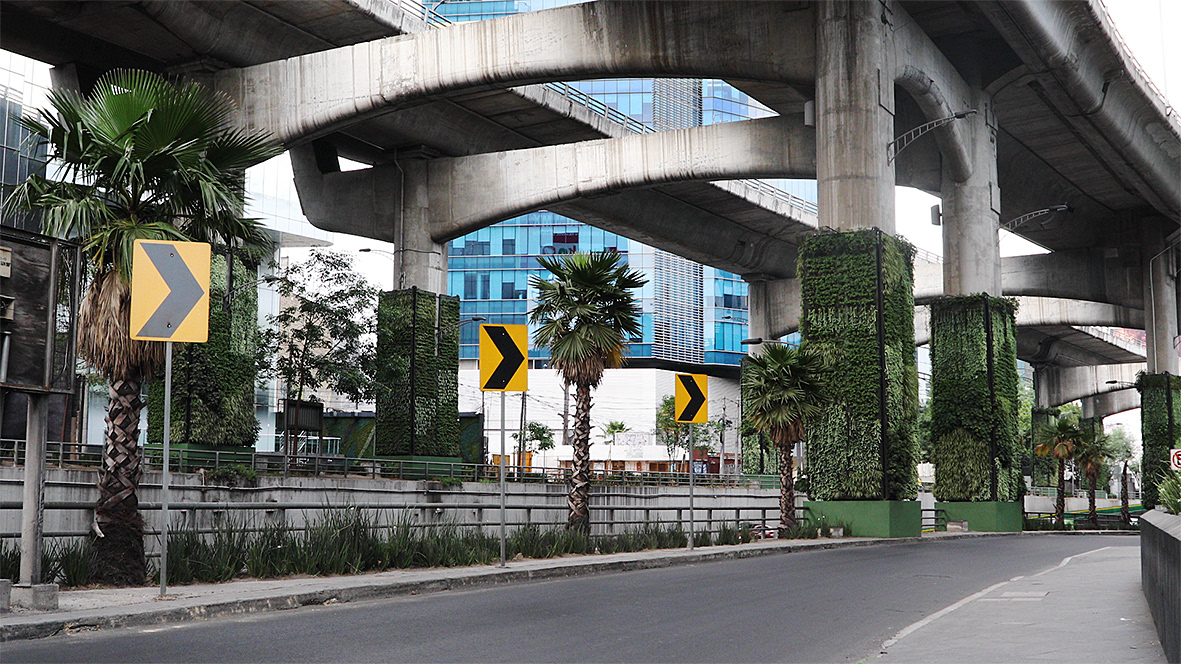 Along Periférico, 2021
Kamen Stoyanov&Katharina Swoboda
Along Periférico, 2021
Kamen Stoyanov&Katharina Swoboda
video, 4k, color, sound, 14:30 min, 2021; music: Hotta Seiji und Juan Forero
The short film was shot at the Periférico highway in Mexico-City. It depicts the section of the two- storied highway, where vertical gardens are attached at the pillars. The shots follow a stringent rhythm between the shot size: views in front and back with fixed alternation of the focal lens. The
film was shot in March 2020 shortly before Mexico-City´s first measurements against the spread of Covid. The last shot shows a figure on a skyscraper and an air plane leaving Mexico – we filmed this shot shortly before our return flight to Austria. We compressed shots from three days
filmed during the magic hour.
One narrative of the Covid crises was, that the air quality cities improves and that nature can restore itself with less human emissions. This is an interesting correlation with the vertical gardens at Périferico: These gardens, it was promised, should produce oxygen for 25,000 residents, filter 27,000 tons of toxic gases, and collect more than 5,000 kilograms of particulate matter and 10,000 kilograms of heavy metals. Whether and how the plants would be able to achieve this, however, was neither proved with scientific data nor explained in detail. -
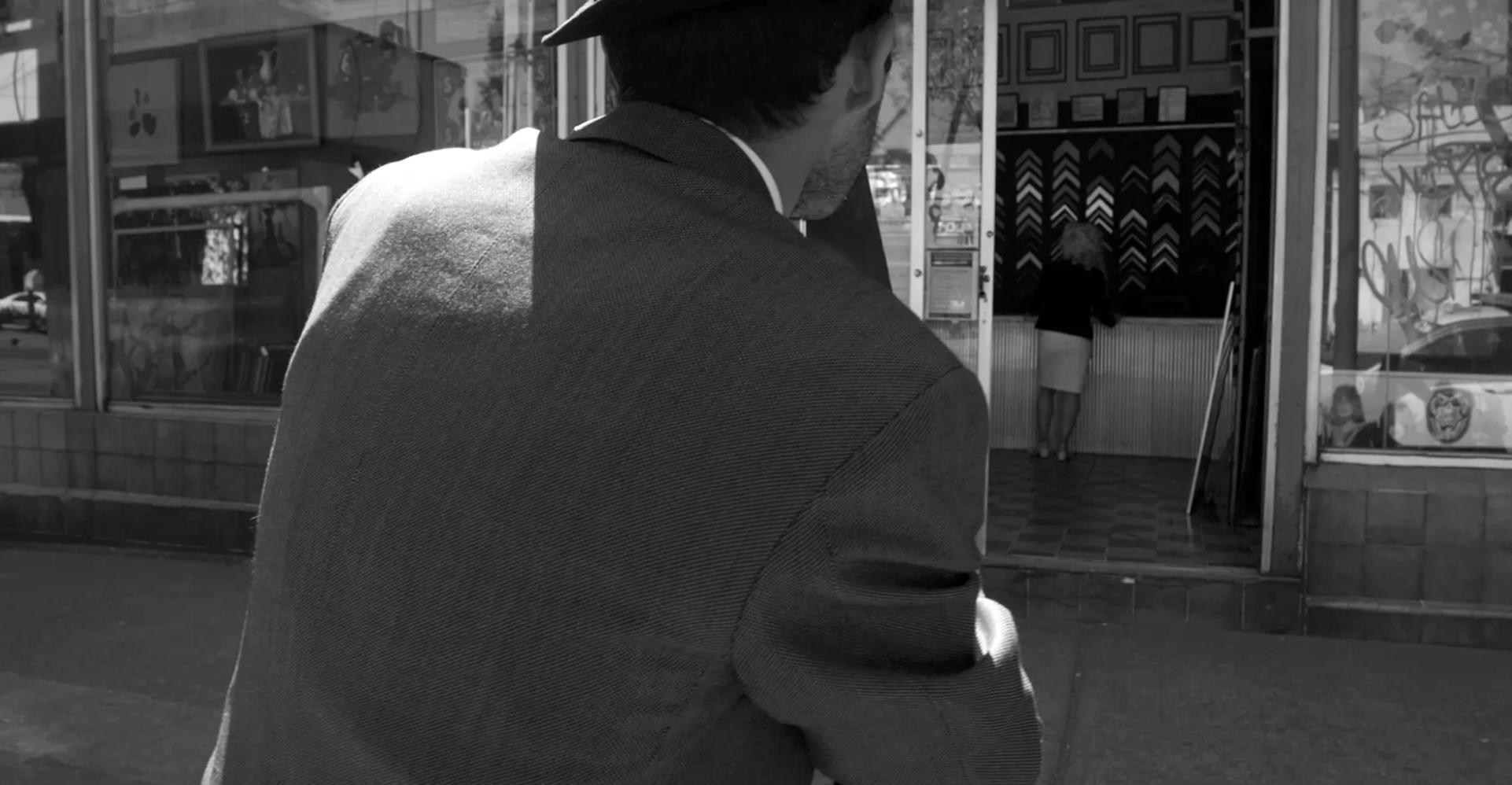 Phantom, 2021
short film, 4K, black and white, sound, 10 min
Phantom, 2021
short film, 4K, black and white, sound, 10 min
Kamen Stoyanov´s works revolve around the social realities our time: migration, uses of public space, urban life. For his photographes and videos Stoyanov selects emotionally charged imagery full of narrative allusions. On a black wall we see only a section of a shirt with a fly, hands and an accordion. Just as fleeting as the sounds. like a memory that is vanishing, a faceless person plays here. In this reduced video the fate of all street musicians seems captured in a black space, confirming the exchangeability of all streets. -
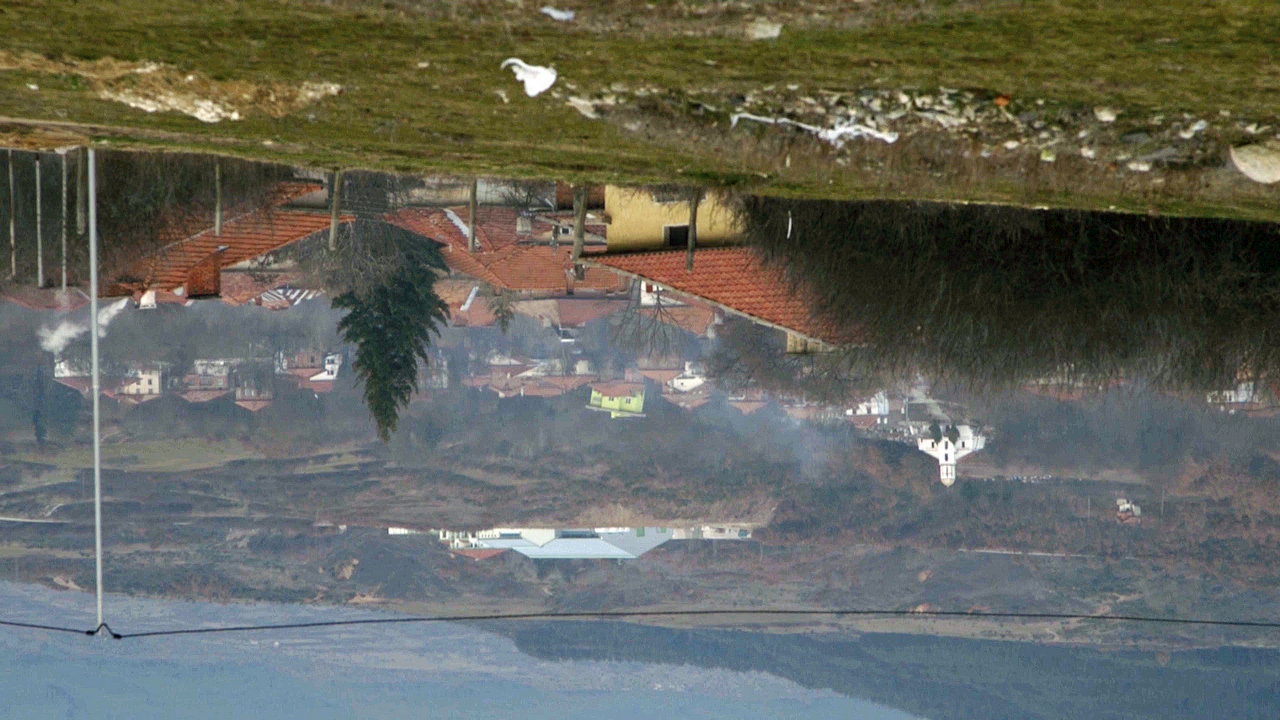 Phantasy is more important, 2016-2018
HD video
Phantasy is more important, 2016-2018
HD video
5:40 min
edition of 5+1AP "Phantasy is more important" shows guest houses and their surrounding in the mountain village Marchevo in Bulgaria. The video starts with a close up of a realistic figure of Einstein looking out from a balcony. It stays as an attraction/advertising for the House&SPA Einstein. This sculptural silence continues during the whole video, which is composed by still sequences. The culmination point is a house, which at the first view appears skew. It is slowly becoming visible that it was built upside down. The last sequence shows the village from above, rotated in 180 degrees. -
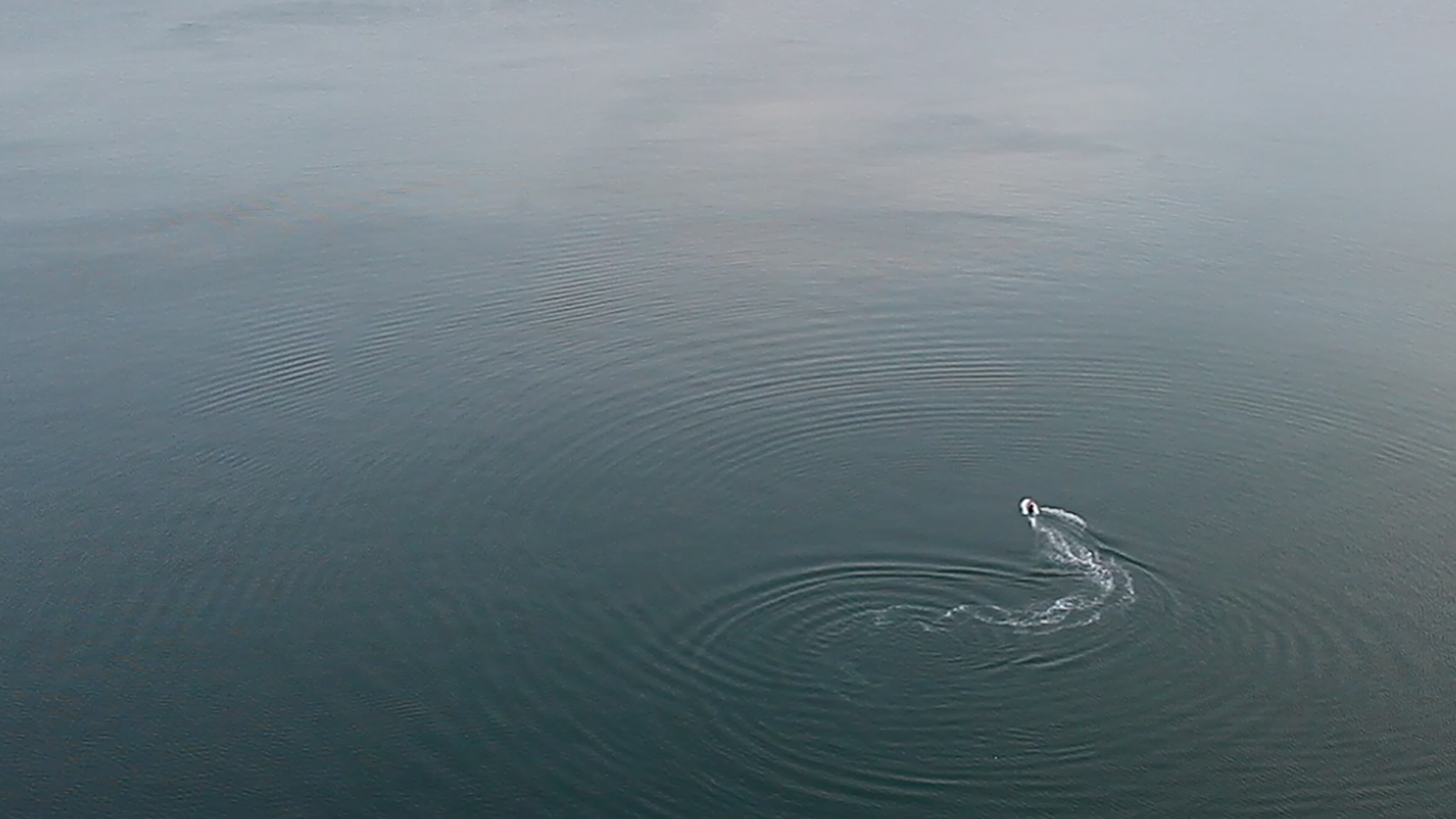 Impossible, 2015
HD video
Impossible, 2015
HD video
39.35 min
edition 3/5+1AP Watch the video here -
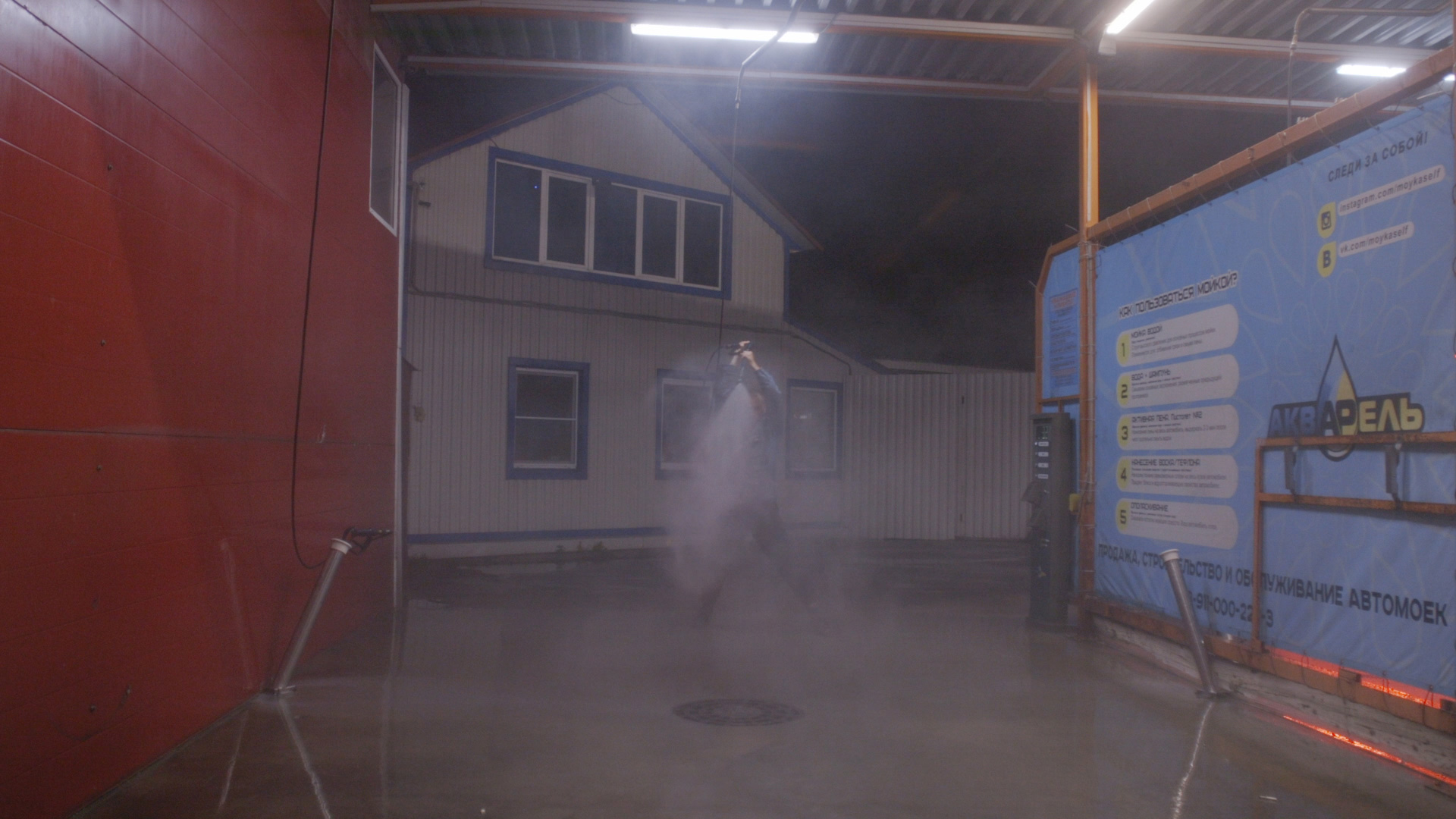 Akvarel, 2017
video 12' 40''
Akvarel, 2017
video 12' 40''
edition 5+1АР Watch video preview here
Performance Art
-
 Reality is much more beautiful than Fiction, 2007
performance at Sofia Art Gallery, 19.27 minutes Reality is much more beautiful than Fiction was a performance held in the premises of the Sofia Art Gallery on October 5th. Disrupting the already installed exhibition “Dynamics in the Dialogue”, a reconstruction of the first exhibition of the gallery in 1977, Kamen Stoyanov set up a show that was supposed to illustrate the process of creating the relevance of art. With monitors on a wheelbarrow, he walked into the gallery space and beganto install his work right next to the classical paintings by Vladimir Dimitrov and Alexander Zhendov. The set up process was illustrated in the usual steps of preparing an exhibition. Whenever he was done installing one of the monitors, he wrote selected excerpts of Sol LeWitt’s Manifest of Conceptual Art on pieces of paper, which he then handed out to his audience. The interaction with the space of the museum, the installed exhibition and the spectators that originally had not expected to see Stoyanov’s art in this exhibition, and the confrontation with the dentity of the artist and the artwork within this setting were in the main interest of the performance. Kamen Stoyanov questioned the traditional image and its gain of relevance through being exhibited in an institution like a museum. At the same time he wanted to show the continuing working process within contemporary art and how the institutional mechanisms are important for art production by drawing attention to the legitimate resources of the museum.
Reality is much more beautiful than Fiction, 2007
performance at Sofia Art Gallery, 19.27 minutes Reality is much more beautiful than Fiction was a performance held in the premises of the Sofia Art Gallery on October 5th. Disrupting the already installed exhibition “Dynamics in the Dialogue”, a reconstruction of the first exhibition of the gallery in 1977, Kamen Stoyanov set up a show that was supposed to illustrate the process of creating the relevance of art. With monitors on a wheelbarrow, he walked into the gallery space and beganto install his work right next to the classical paintings by Vladimir Dimitrov and Alexander Zhendov. The set up process was illustrated in the usual steps of preparing an exhibition. Whenever he was done installing one of the monitors, he wrote selected excerpts of Sol LeWitt’s Manifest of Conceptual Art on pieces of paper, which he then handed out to his audience. The interaction with the space of the museum, the installed exhibition and the spectators that originally had not expected to see Stoyanov’s art in this exhibition, and the confrontation with the dentity of the artist and the artwork within this setting were in the main interest of the performance. Kamen Stoyanov questioned the traditional image and its gain of relevance through being exhibited in an institution like a museum. At the same time he wanted to show the continuing working process within contemporary art and how the institutional mechanisms are important for art production by drawing attention to the legitimate resources of the museum.
-
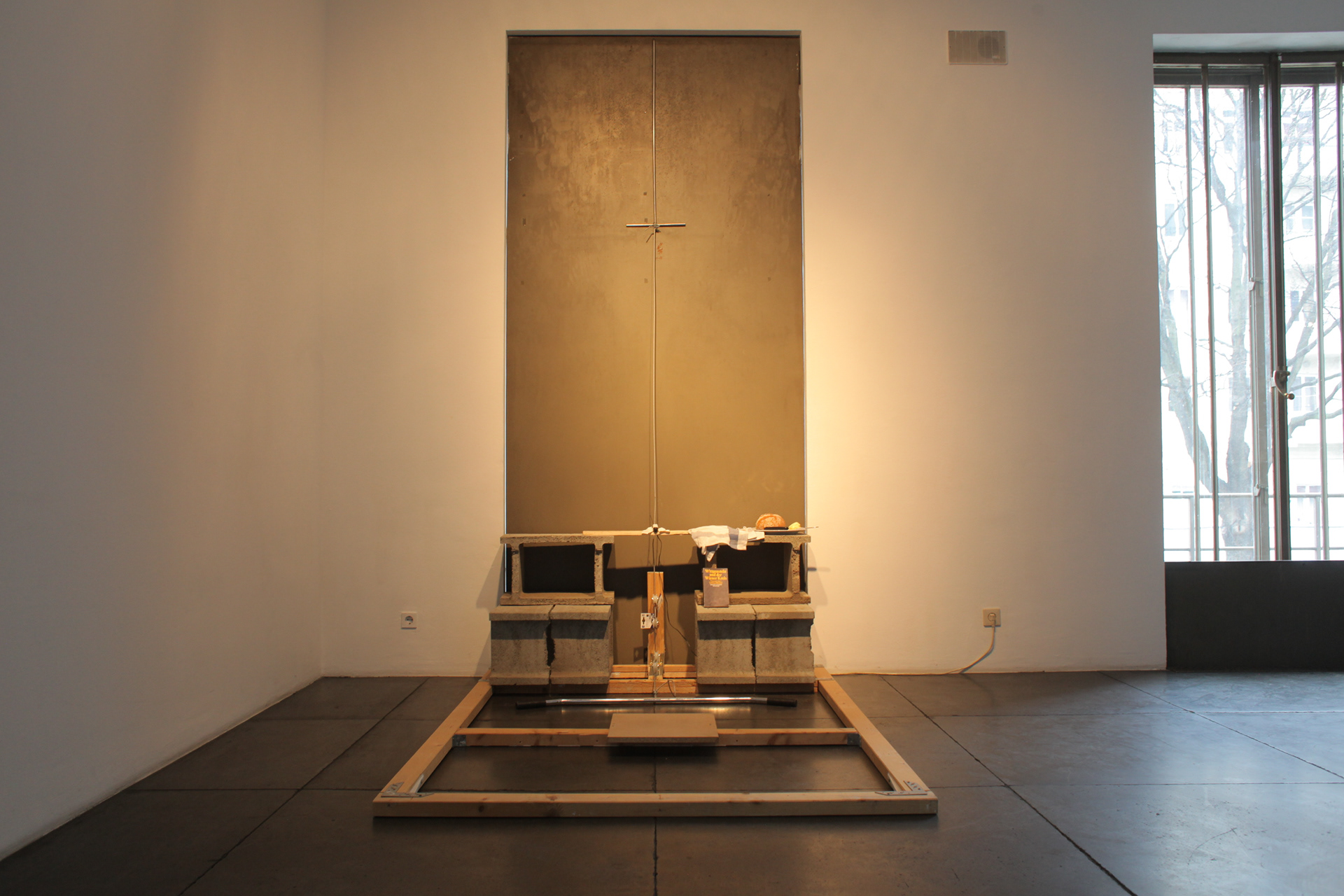 A Hyphothesis, 2012
performance in Wittgenstein House Vienna, video 7:00 min
A Hyphothesis, 2012
performance in Wittgenstein House Vienna, video 7:00 min
Ludwig Wittgenstein did not like the classic curtains. For the house he build together with the architect Paul Engelmann he designed moving metal plates, which have the function of curtains for the large windows. The philosopher claimed that by designing these details, he displays the principles of his philosophy. This architecture is used as a means to exercise the logical thought.
The performance of Kamen Stoyanov uses the same architecture not like exercise of the thought, but to exercise the body. He build an installation in order to use the metal plates of Wittgenstein as a part of fitness machine. The performance shows how the rhythmic raising and lowering of the curtain can be a perfect bodybuilding tool. Before the exercise, the artist reads a part of the chapter called object from "Wittgenstein and the Vienna Circle: Conversations Recorded by Friedrich Waismann" devoted to the hypothesis. Then he shows his own hypothesis about the use of this architectural object. -
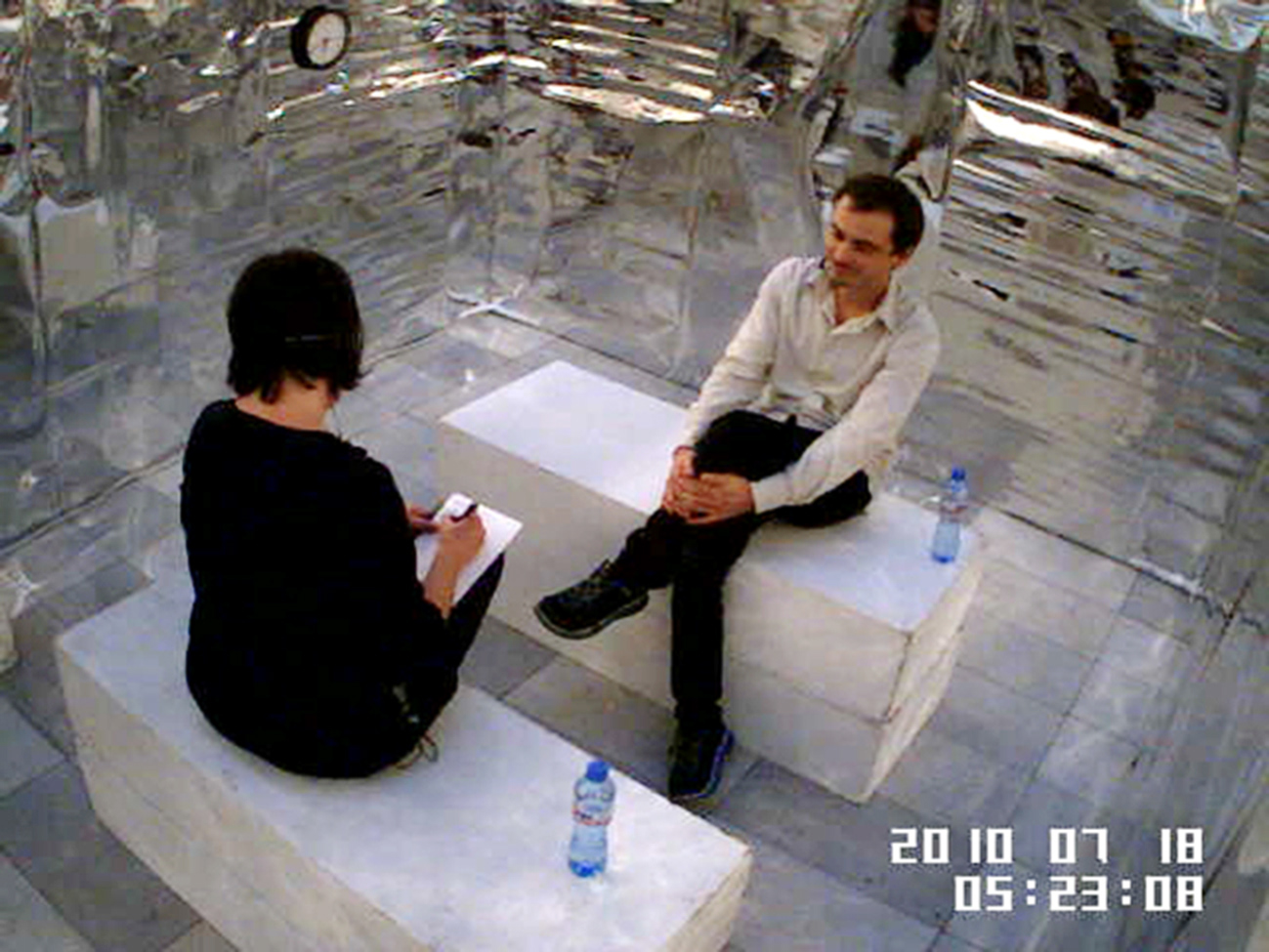 Something from Nothing, 2013
Project of Kamen Stoyanov devoted to the 80th anniversary of the Rousse’s Art Gallery. The project focuses on the Rousses’s Art Gallery and the attitude of the artist born and raised in the town. This is the first solo show of Kamen Stoyanov in this gallery. The 80 anniversary of the Rousse’s Art Gallery is an occasion that provides the opportunity to reconsider the space in the view of its concreteness and contemporary art response. The project is exposed at the right wing of the gallery in a small space separated by a door. Main topic of the exhibition is the emptiness and how it could be filled in. That acts as a comeback to the starting point of the gallery and to the main problem that the artist has when facing the white canvas.
Something from Nothing, 2013
Project of Kamen Stoyanov devoted to the 80th anniversary of the Rousse’s Art Gallery. The project focuses on the Rousses’s Art Gallery and the attitude of the artist born and raised in the town. This is the first solo show of Kamen Stoyanov in this gallery. The 80 anniversary of the Rousse’s Art Gallery is an occasion that provides the opportunity to reconsider the space in the view of its concreteness and contemporary art response. The project is exposed at the right wing of the gallery in a small space separated by a door. Main topic of the exhibition is the emptiness and how it could be filled in. That acts as a comeback to the starting point of the gallery and to the main problem that the artist has when facing the white canvas.
When entering the right wing, right in the middle, the visitor spots a big rectangular space built up out of four big white canvases representing a gallery within the gallery. The walls, on which exhibits are usually hanged on, are left empty, fitting robes hanging in expectation.
The main focus of the installation – a performance, is based on a dream of the artist that repeats on a constant basis. In his dream the artist arrives for his solo show to notice the lack of whatsoever exhibits. To solve this problem, he tries installing his old works found in the gallery by chance, and thinks how he could possibly reverse the situation into something meaningful.
This is the situation represented in a conversation between Kamen Stoyanov and the psychologist Dessislava Liasova. The conversation is held within a closed space – a cube upholstered with mirror folios. In the middle of the space, on sculpture plinths, there is a place to sit. The image and the conversation are projected in real time on a screen outside the cube. -
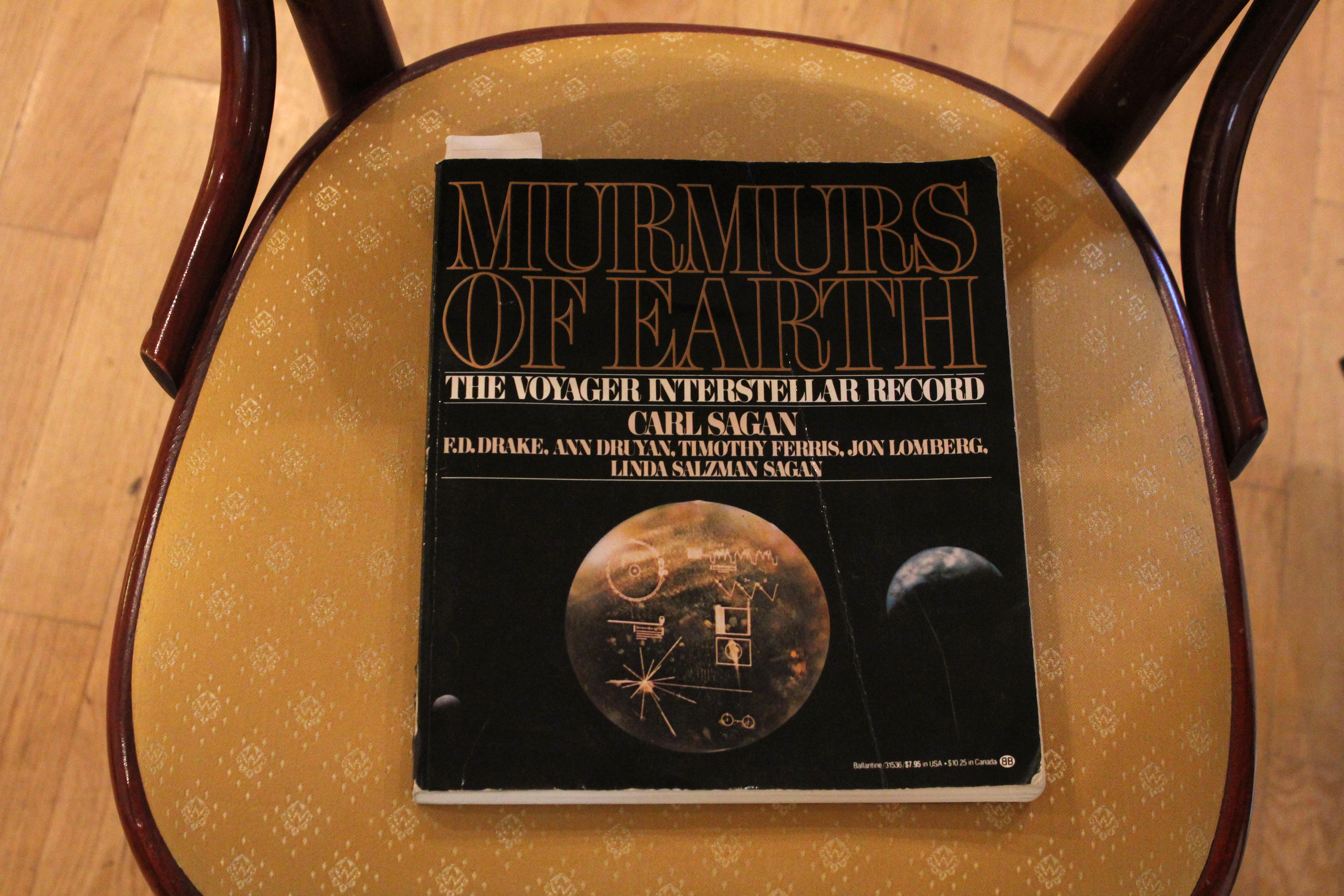 Greetings, 2015
performance, Austrian Cultural Forum Budapest, video, 15:55 min
Greetings, 2015
performance, Austrian Cultural Forum Budapest, video, 15:55 min
-
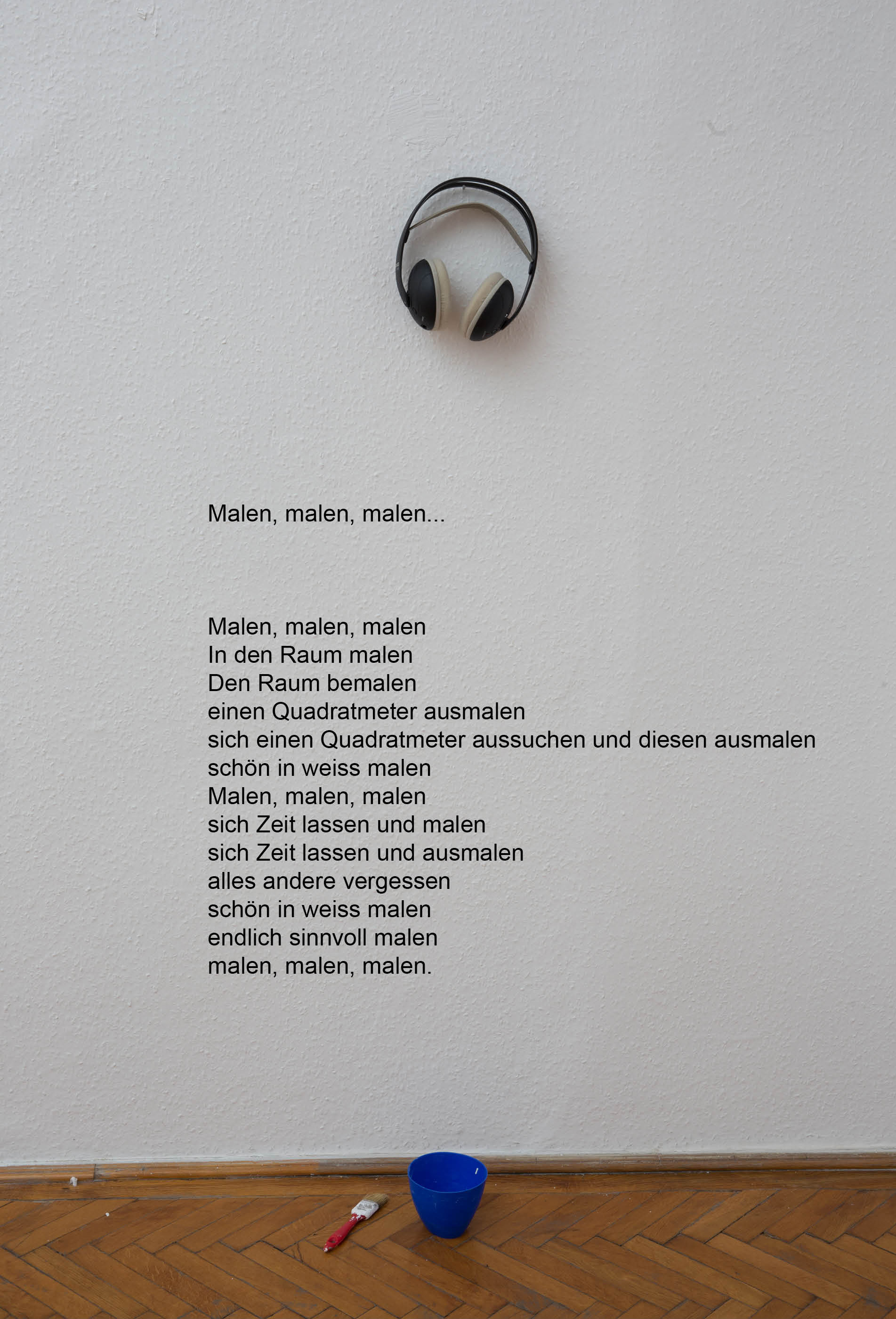 Malen, malen, malen, 2016
The audience is animated by a song to paint the exhibition wall. The performance is the restoration of the former exhibition.
Malen, malen, malen, 2016
The audience is animated by a song to paint the exhibition wall. The performance is the restoration of the former exhibition.
-
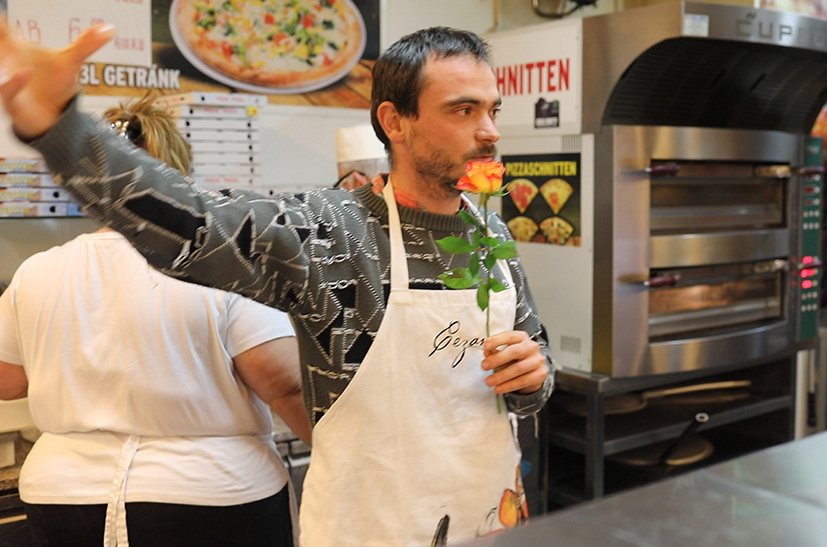 PPP - performing pizza painting, 2017-2018
performance, video, 16:00 min Instead of a common Pizza like Margarita or Diavolo, Kamen Stoyanov offers the clients pizzas named after significant art pieces, e.g. "Shoot" by Chris Burden or "I am too sad to tell you" by Bas Jan Ader. Stoyanov interprets these artworks in a performative way and a new pizza – art piece is born.
PPP - performing pizza painting, 2017-2018
performance, video, 16:00 min Instead of a common Pizza like Margarita or Diavolo, Kamen Stoyanov offers the clients pizzas named after significant art pieces, e.g. "Shoot" by Chris Burden or "I am too sad to tell you" by Bas Jan Ader. Stoyanov interprets these artworks in a performative way and a new pizza – art piece is born.
